|
Afghanistan | |
|
| Stephen G. Peters et al. (2011) +1 other reference |
|
Albania | |
|
| Váczi-Lovász et al. (2024) |
|
| Váczi-Lovász et al. (2024) |
|
Algeria | |
- Tamanrasset Province (Tamanghasset Province)
| Azzouni‐Sekkal et al. (1987) |
|
Antarctica | |
| |
|
| Schlüter et al. (2011) |
|
| Faure +1 other reference |
|
| Thomson (1974) |
|
| Thomson (1968) |
|
| Smellie et al. (1984) |
|
| Mink et al. (2015) |
|
| Geological Magazine +4 other references |
|
Argentina | |
|
| Koukharsky et al. (1976) +1 other reference |
|
| Proffett (2003) |
|
| Bowman et al. (Eds) |
|
| LANFRANCHINI et al. (4) |
|
| Espeche et al. () |
|
| Gemmell et al. (1992) |
|
| 715-720. Buenos Aires. +1 other reference |
|
| 715-720. Buenos Aires. +1 other reference |
|
| Rubinstein et al. (2018) |
|
| PONS +2 other references |
|
| PONS +2 other references |
|
| KOSTADINOFF (2004) |
|
| Singer et al. (2008) |
|
| Galliski (1983) |
|
| www.aldebaranresources.com (n.d.) |
|
| Cardó R. et al. (2012) |
- General Pedernera Department
| |
|
Armenia | |
|
| Bowell et al. (2021) |
|
| Singer et al. (2008) |
|
| Singer et al. (2008) |
|
Atlantic Ocean | |
|
| D'Orazio et al. (2004) |
- Mid-Atlantic Ridge complex
| Vlasov E.A. et al. (2010) |
- Sierra Leone fracture zone
| Mazarovich et al. (2001) |
|
| Sharkov et al. (2007) |
|
| Mazarovich et al. (2001) |
|
Australia | |
- Australian Capital Territory
| McQueen +2 other references |
|
| A. R. Wilde (1988) |
|
| Singer et al. (2005) |
|
| www.portergeo.com.au (2003) |
|
| Wilson et al. (2003) |
|
| Jododex Aust Pty Ltd (1978) |
|
| Stevens (1972) |
|
| Stevens (1972) |
|
| D'Aguilar Gold Limited (2008) |
|
| Stevens (1972) |
|
| Ashley et al. (1997) |
|
| Preliminary sulphur isotopes report. In ... +1 other reference |
|
| Seccombe et al. (1998) |
|
| Harper (1919) |
|
| Byrnes (1993) |
|
| Gary R Burton et al. (2007) |
|
| Gilligan et al. (1993) |
|
| Gilligan et al. (1993) |
|
| Henley et al. (2001) |
|
| Stevens (1972) |
|
| Vickery et al. (2010) |
|
| Och et al. (2003) |
|
| McKinnon et al. (2017) +1 other reference |
|
| Gilligan (1975) |
|
| Ashley et al. (1988) |
|
| Gilligan et al. (1992) |
|
| Matthew Goodwin |
|
| Stevens (1972) |
|
| Stevens (1972) |
|
| I. Plimer +1 other reference |
|
| |
|
| - (n.d.) +5 other references |
|
| Ryan (1961) |
|
| Modat Mineral Occurrence database +1 other reference |
|
| Skirrow (1993) |
- Harts Range (Harts Ranges; Hartz Range; Hartz Ranges)
- Spriggs Creek Bore (Spriggs Bore)
| Shaw et al. (1985) |
|
| Huckitta 1996 |
|
| Zia U. Bajwah |
|
| Zia U. Bajwah |
|
| Huckitta 1996 |
|
| Zia U. Bajwah |
|
| Huckitta 1996 |
|
| Huckitta 1996 |
|
| Ransom (1978) |
|
| Robertson (1959) |
|
| Huckitta 1996 |
|
| Zia U. Bajwah |
|
| Huckitta 1996 |
|
| Barraclough (1979) |
- Pinnacles Bore Copper Area
| Shaw (1970) |
|
| Bain (2016) |
|
| Clarke (1971) |
|
| Ahmad et al. (compilers) |
|
| Adams (1983) |
|
| Lohan (1990) |
|
| England et al. (1988) |
|
| Paulick et al. (2001) |
|
| Queensland Government Department of ... |
|
| Sielecki (1988) |
|
| Williams et al. (2005) +3 other references |
|
| Cannell et al. (1998) +1 other reference |
|
| S Rust collection |
|
| Leahey T.A. et al. (2010) |
|
| Econ Geol (1985) |
|
| Ryan Eagle specimen |
|
| Marshall et al. (2006) |
|
| Wang et al. (2001) |
|
| Pollard (2001) |
|
| Vera Munro-Smith (2006) |
|
| Rotherham (1997) |
|
| Lawrence L.J. et al. Econ Geol. 52 |
|
| Poblete |
|
| Haupt |
|
| Lehrmann (2012) |
|
| Lehrmann (2012) |
|
| Baker (1998) |
|
| Updated list originally distributed by ... |
|
| Ashley (1980) |
|
| |
|
| |
|
| Qld Dept Mines- Mines records |
|
| Howard (2015) |
|
| Vic Cloete collection +1 other reference |
|
| Davidson (2007) |
|
| Mount Woods Inlier et al. (Honors thesis) +1 other reference |
|
| J Townsend |
|
| Sorrell (n.d.) |
- Arkaroola Region (Arkaroola Wilderness Sanctuary; Arkaroola Station)
| R Bottrill collection |
|
| Job (2011) |
|
| SA Geodata Database - Mineral Deposit ... |
|
| SA Geodata Database - Mineral Deposit ... |
|
| Elburg et al. 2003 |
|
| R.J.Noble et al: Catalogue of South ... +1 other reference |
|
| Coats et al. (1971) |
|
| Coats et al. (1971) |
|
| Coats et al. (1971) |
|
| Coats et al. (1971) |
|
| Coats et al. (1971) |
|
| Record of mines (1980) |
|
| SA Geodata Database - Mineral Deposit ... |
|
| |
|
| Noble et al. (1983) |
|
| Brugger et al. (2006) |
|
| from vince peisley collection |
- South Mt Lofty Ranges (Adelaide Hills)
| Eggleton (1959) |
|
| Dickinson S.B. et al. (1954) |
|
| Dickinson S.B. et al. (1954) |
|
| Pierre-Alain Wulser |
- Bimbowrie Conservation Park
| SA Geodata Database - Mineral Deposit ... |
|
| |
|
| |
|
| SA Geodata Database - Mineral Deposit ... |
|
| SA Geodata Database - Mineral Deposit ... |
- Boolcoomatta Reserve (Boolcoomata Station)
| Vera Munro-Smith (2006) |
- Mt Victor Plumbago Station
| Waterhouse (1971) |
|
| G.S. Teale (2003) |
|
| The mines & minerals of the Olary ... |
|
| The mines & minerals of the Olary ... |
|
| Grguric (1989) |
|
| Nikolakopoulos (2013) |
|
| Ciobanu et al. (2019) |
|
| portergeo.com.au (2016) |
|
| Pring (1988) |
|
| Pring (1988) |
- Hampshire mining district
| Bottrill et al. (2008) |
|
| Whitehead +3 other references |
|
| Taheri et al. (1998) |
|
| Bottrill et al. (2008) |
|
| Griffin (1982) +1 other reference |
|
| Griffin (1982) |
- Moina - Middlesex District
| Bottrill et al. (2008) +1 other reference |
|
| Calver (2007) |
|
| Lawrence (1958) +1 other reference |
- Waratah-Wynyard municipality
- Corinna-Savage River district
| R Bottrill +1 other reference |
|
| Bottrill & Taheri +2 other references |
|
| www.crocoite.com (2001) |
|
| Bottrill +1 other reference |
|
| R Bottrill |
|
| Turner et al. (1993) +1 other reference |
|
| Greg Murray collection |
|
| Bottrill et al. (2007) |
|
| Ralph Bottrill collection |
- Mt Heemskirk mineral field
| Kwak et al. (1988) |
|
| Patterson |
|
| R Botttrill |
|
| Geol. Soc. of Australia Abstr. 53:248-249 (Feb, 1999) |
- City of Greater Shepparton
| Birch (1996) |
|
| G L Morvell (1976) +1 other reference |
|
| Tickell et al. (1989) |
|
| Econ Geol (1994) |
|
| [MinRec 39:476] +1 other reference |
- Bridgetown-Greenbushes Shire
| Fetherston et al. (2012) |
|
| Marston (1984) |
|
| Ferguson (1999) |
|
| Simpson (1948) |
|
| Simpson (1951) |
|
| Witt et al. (1997) |
|
| Eilu (2003) |
|
| Eilu (2003) |
|
| Gray et al. (1953) |
|
| Bucci et al. (2002) |
|
| Simon (2019) |
|
| Simon (2019) |
|
| Simon (2019) |
|
| Howe (2011) +1 other reference |
|
| Marston (1984) |
|
| Simon (2019) |
|
| Eilu (2003) |
|
| Marston (1984) |
|
| Marston (1984) |
|
| Marston (1984) |
|
| John Walshe |
|
| Nickel et al. (1994) |
|
| Marston (1984) |
|
| Peter Eliott |
|
| Barnes |
|
| Marston (1984) |
|
| Western Australia Department of Mines (1930) |
|
| Eilu (2003) |
|
| Fetherston (2010) |
|
| - (2002) |
|
| Hassan (2017) |
|
| Simpson (1948) |
|
| Simpson (1948) |
- Derby-West Kimberley Shire
| Fetherston (2010) |
|
| Fetherston (2010) |
|
| Fetherston (2010) |
|
| Fetherston (2010) |
|
| MinMag 66 (6) |
|
| Downes et al. (2002) |
|
| Fetherston (2010) |
|
| McCuaig (1997) |
|
| Eilu (2003) |
|
| Campbell (1906) |
|
| Eilu (2003) |
|
| Western Australia Department of Mines (1930) |
|
| McCuiag (1997) |
|
| Cox (1974) +1 other reference |
|
| McCuaig (1997) |
|
| Singer et al. (2008) |
|
| minedex.dmirs.wa.gov.au (2020) +1 other reference |
|
| Simpson (1948) |
|
| Bailey (1982) |
|
| Neumayr et al. (1998) |
|
| Orth (2002) |
|
| [http://eprints.utas.edu.au/8932/] +1 other reference |
|
| Orth (2002) |
|
| Bagas et al. (2009) |
|
| Steadman et al. (2014) |
|
| Econ Geol (1997) |
|
| Marston (1984) |
|
| Marston (1984) |
|
| Kalgoorlie Miner newspaper (1934) |
|
| Feldtmann (1919) |
|
| Western Argus newspaper (Kalgoorlie) |
|
| Simpson (1948) |
|
| Simpson (1948) |
|
| Simpson (1948) |
|
| Marston (1984) |
|
| Steadman et al. (2014) |
|
| www.silverlakeresources.com.au (n.d.) |
|
| Econ Geol (1997) +1 other reference |
|
| Simpson (1948) |
- Woolibar Station (Hampton Plains Goldfield)
| Mueller (2007) |
|
| Fred Rose- leasee of the nearby Mt ... |
|
| Collins et al. (2012) |
|
| Salama et al. (2021) |
|
| Marston (1984) |
|
| www.poseidonresources.com (n.d.) |
|
| Duuring et al. (2000) |
|
| Eilu (2003) +1 other reference |
|
| Mueller et al. (2008) |
- Agnew Goldfield (Lawlers)
| Thebaud (2014) |
|
| Thebaud (2014) |
|
| Carver et al (2004) |
|
| Thebaud (2014) |
- Bronzewing Goldfield (Mount McClure)
| Neil Phillips et al. (1998) |
|
| Kenworthy et al. (2005) |
|
| de Souza et al. (2022) |
|
| Mock (1987) |
|
| Simpson (1948) |
|
| Barnes (2007) |
|
| www.vesuviusminerals.com.au (2013) |
|
| Hassan (2017) |
|
| E. de. et al. (1916) |
|
| Western Mail newspaper (Perth) |
|
| www.ore.com.au (2015) |
|
| Johnson et al. (2003) |
|
| Northern Star Limited (2015) |
|
| Australian Journal of Mineralogy +4 other references |
|
| Lintern (1998) |
|
| Robertson et al. (2003) |
- Irwin Hills (Jasper Hills)
| Blewett et al. (2007) |
|
| Econ Geol (1997) |
|
| Pryce et al. (1974) |
|
| Stratum Metals (2015) |
|
| Simpson (1948) |
|
| The West Australian newspaper (Perth) |
|
| Simpson (1948) |
|
| - (2002) |
|
| Salier et al. (2004) |
|
| Abeysinghe (1996) |
|
| Grguric et al. (2018) |
|
| Dalstra et al. (2023) |
- Karara Conservation Reserve
| Simpson |
|
| Mock (1987) |
|
| Mock (1987) |
|
| Marston (1984) |
|
| Simpson et al. (1948) |
|
| Neil Phillips et al. (1998) |
|
| Disseminated and Massive Nickel ... +2 other references |
|
| Grguric (2003) |
|
| Pirajno et al. (2002) |
|
| Eilu (2003) |
|
| Edward S. Simpson (1948) |
|
| Eilu (2003) |
- Forrestania Goldfield (Mount Holland)
| Economic Geology (1997) |
|
| www.portergeo.com.au |
|
| Abeysinghe et al. (1997) |
|
| Simpson (1948) |
|
| Econ Geol (1997) |
|
| Econ Geol (1984) +2 other references |
|
| Simpson (1948) |
|
| Nugus (2003) |
|
| Ore Petrology Chemistry and Timing of ... +2 other references |
|
Austria | |
|
| Autorenkollektiv (Red. M. A. Götzinger und P. Huber) |
- Sankt Veit an der Glan District
| H. Meixner: Der Karinthin 6:108-120 (1949) |
|
| |
|
| Niedermayr et al. (1995) |
- Griesserhof (Gulitzen; Gullitzen)
| Niedermayr et al. (1995) |
- Spittal an der Drau District
| Paar et al. (1998) |
|
| W. Postl: Carinthia II 186./106.:135-138 (1996) |
|
| Niedermayr et al. (1995) |
- Heiligenblut am Großglockner
| Niedermayr et al. (1995) |
|
| Pichler (2009) |
|
| Niedermayr et al. (1995) |
|
| Niedermayr (1997) |
|
| F. H. Ucik: Carinthia II (1969) |
|
| F. H. Ucik: Carinthia II (1969) |
|
| F. H. Ucik: Carinthia II (1969) |
|
| F. H. Ucik: Carinthia II (1969) |
|
| Pichler (2009) |
|
| Carinthia II (2013) |
|
| Niedermayr et al. (1995) |
- Frantschach-Sankt Gertraud
| Niedermayr et al. (1995) |
|
| |
|
| Niedermayr et al. (1995) |
|
| Götzinger et al. (1994) |
|
| Götzinger (1981) |
|
| Kolitsch (2015) |
|
| C.Auer (2019) |
|
| Huber et al. (1977) |
|
| Database „Minerale NÖ“ (A. Thinschmidt and co-workers) |
|
| SIGMUND (1937a) |
|
| Götzinger (1987) |
|
| Kiesewetter et al. (2003) |
|
| Erwin Löffler collection (visual ID) |
|
| MEIXNER (1976) +1 other reference |
|
| Huber et al. (1977) |
|
| Neschen (n.d.) |
|
| Löffler et al. (2011) |
|
| Löffler et al. (2011) |
|
| Löffler et al. (2011) |
|
| Knobloch et al. (2021) |
|
| Niedermayr (2007) |
- Sankt Pölten-Land District
| Exel (1993) |
|
| Strasser (1989) |
- St. Johann im Pongau District
| Strasser (1989) |
|
| Kolitsch et al. (2019) |
|
| Strasser (1989) |
|
| Paar +4 other references |
|
| Neschen (n.d.) |
|
| Strasser (1989) |
|
| C. Auer: Lapis 20 (11) |
|
| Strasser (1989) |
|
| Strasser (1989) |
|
| G. Niedermayr et al. (1985) |
|
| Niedermayr (1993) |
|
| Exel (1993) |
|
| Strasser (1989) |
- Fusch an der Grossglocknerstrasse
| Strasser (1989) |
|
| Niedermayr et al. (1995) |
|
| Strasser (1989) |
|
| Strasser (1989) |
|
| Neschen (n.d.) |
|
| Strasser (1989) |
|
| Strasser (1989) |
|
| S.Schwabl (2016) |
- Mittersill Scheelite deposit
| Collection of Martin Slama |
|
| Strasser (1989) |
- Neukirchen am Großvenediger
| dan weinrich |
|
| Strasser (1989) |
|
| King (n.d.) |
|
| Collection Uwe Ludwig |
|
| Strasser (1989) |
|
| Strasser (1989) |
- Grieswies - Krumlkeeskopf area
| Strasser (1989) |
|
| Strasser (1989) |
|
| Strasser (1989) |
|
| Strasser (1989) |
|
| Strasser (1989) |
|
| Neschen (n.d.) |
|
| Strasser (1989) |
|
| Strasser (1989) |
|
| Strasser (1989) |
|
| Strasser (1989) |
|
| - (n.d.) |
- Guggernbach valley (Lützlstubach)
| Strasser (1989) |
|
| Strasser (1989) |
|
| Strasser (1989) |
|
| Strasser (1989) |
- Bruck-Mürzzuschlag District
| Chris Auer photo |
|
| Schachinger et al. (2013) |
|
| Neschen (n.d.) |
|
| Sigmund (1919) |
- Hartberg-Fürstenfeld District
| Tschermaks Mineralogische und Petrographische Mitteilungen 12 (1968) |
|
| Aufschluss 1972 (SB) |
|
| Hollerer (1999) |
|
| Freyn (1902) |
|
| Offenbacher (1983) |
|
| C. Auer (2022) |
|
| Neschen (n.d.) |
|
| Neschen (n.d.) |
|
| C.Auer (2019) |
|
| Postl (2004) |
|
| Miller (1970) |
|
| C.Auer (2016) |
|
| C.Auer (2016) |
|
| Andrew Haighton Collection |
|
| Christian Bracke Collection |
|
| e-rocks.com (n.d.) |
- Prägraten am Großvenediger
| Collection of Volker Betz |
- Sankt Jakob in Defereggen
| - (n.d.) |
|
| Cathrein (1887) +1 other reference |
|
| Exel (1993) |
- Schlegeisgrund (Schlegeis valley)
| Gerard van der Veldt collection |
|
| Extra Lapis No 12 Ziller valley |
|
| Exel (1993) |
|
| Exel (1993) |
|
| Weinschenk (1896) |
|
Azerbaijan | |
- Belokan-Avar ore district
| - (2005) +1 other reference |
|
| Pavel.M. Kartashov (n.d.) |
|
Bailiwick of Guernsey | |
|
| Henwood (1871) |
|
Bangladesh | |
|
| Ahmed et al. (2010) |
|
Belgium | |
|
| Hatert et al. (2002) |
|
| Fransolet et al. (1977) +2 other references |
|
| Hatert et al. (2002) |
|
| Hatert et al. (2002) |
|
| Hatert et al. (2002) |
|
| Histoire |
|
Bolivia | |
|
| Petrov (n.d.) |
|
| Petrov (n.d.) |
|
| Federico Ahlfeld and Jorge Muñoz Reyes (1955) |
|
| Petrov (n.d.) +1 other reference |
|
| Kempff et al. (2003) |
|
Bosnia and Herzegovina | |
- Federation of Bosnia and Herzegovina
| Putiš et al. (2022) +1 other reference |
|
Brazil | |
|
| Queiroz et al. (2023) |
|
| Overstreet |
|
| Cassedanne et al. (1978) |
|
| Cassedanne et al. (1978) |
|
| [[1]]Santos et al. (2020) |
|
| - (2002) |
|
| Garuti et al. (2005) |
|
| Sá et al. (2005) |
|
| - (2002) |
|
| - (2002) |
|
| Mesquita et al. (2017) |
|
| Kuyumjian +2 other references |
|
| Jost et al. (2001) |
|
| Campos et al. (2022) |
|
| Amaral et al. (2023) |
|
| Jost et al. (2001) |
|
| Jost et al. (2001) |
|
| Singer et al. (2008) +1 other reference |
|
| Palermo et al. (2008) |
|
| Palermo et al. (2008) |
|
| Revista Brasileira de Geociências. 30 (2) |
|
| Palermo et al. (2008) |
|
| - (2002) |
- Santa Terezinha de Goiás district
| - (2002) |
|
| Silva (2017) |
|
| Poggi et al. (2022) |
|
| Lobato et al. (2001) |
|
| Neves et al. (2015) |
|
| Folentino (2017) |
|
| acd.ufrj.br (2002) |
|
| Brenner et al. (1990) |
|
| Hussak (1904) |
|
| ... |
|
| - (2002) |
|
| Soares et al. (2018) |
|
| Lobato et al. (2001) |
|
| Jour. of South American Earth Sci. ... |
|
| da Costa et al. (2021) |
|
| Silva et al. (2022) |
|
| |
|
| Monteiro et al. (2008) |
|
| Monteiro et al. (2008) |
|
| Craveiro et al. (2019) |
|
| Teixeira (2014) |
|
| Villas et al. (2001) +1 other reference |
|
| Villas et al. (2001) |
|
| Lopes et al. (2019) |
|
| JULIANI +4 other references |
|
| Campo-Rodríguez et al. (2021) |
|
| Tazava (1999) +1 other reference |
|
| Leão-Santos et al. (2022) |
|
| Mansur et al. (2022) |
|
| de Souza et al. (2021) |
|
| Souza Neto et al. (2008) |
|
| Souza Neto et al. (2008) |
|
| ACM Ferreira et al +1 other reference |
|
| Souza Neto et al. (2008) +1 other reference |
|
| Neto et al. (2008) +2 other references |
|
| e da Terra (2001) +1 other reference |
|
| Araújo Neto et al. (2024) |
|
| Anzolin et al. (2019) |
|
| - (2002) |
|
| dos Santos et al (1991) |
|
Bulgaria | |
|
| Marcus Voigt Collection |
|
| Szopa +9 other references |
|
| Haydoutov |
- Panagyurishte Municipality
| Moritz et al. (2004) |
|
| Singer et al. (2008) |
|
| Petrusenko et al. (1996) |
|
| Sabeva et al. (2017) |
|
| Svetoslav Petrussenko et al. (2007) |
- Septemvri Mine (Deveti Septemvri Mine)
| A. Piestrzynski (2001) |
|
| Singer et al. (2008) +1 other reference |
|
| Stanisheva (1969) |
|
Burkina Faso | |
|
| Kříbek et al. (2016) |
|
| Fontaine et al. (2017) |
|
Cameroon | |
|
| Ketchaya et al. (2022) |
|
| Ketchaya et al. (2022) |
|
| Tetsopgang et al. (2003) |
- Nyong Complex greenstone belts
| Swiffa Fajong et al. (2022) |
|
Canada | |
|
| Peatfield (n.d.) +1 other reference |
|
| Peatfield (n.d.) |
|
| I.C.L. Webster (1992) |
|
| the world's largest besshi-type ... +1 other reference |
|
| Soregaroli (1968) |
|
| Singer et al. (2008) |
- Fort Steele Mining Division
| Peatfield (n.d.) |
|
| Dana 7:I:203. |
|
| Peatfield (n.d.) |
- Ice River Alkaline Complex
| Thomas Mumford (2007) |
- Greenwood Mining Division
| Nixon et al. (2002) |
|
| Peatfield (n.d.) |
|
| www.em.gov.bc.ca/cf/minfile file no. ... |
|
| ... +2 other references |
|
| Singer et al. (2008) |
|
| Singer et al. (2008) |
|
| I.C.L. Webster (1992) |
|
| Peatfield (n.d.) |
|
| www.imperialmetals.com (n.d.) |
|
| Dana Caudle et al. (2016) |
|
| Peatfield (n.d.) |
|
| BC Minfile 104G 091 |
|
| Peatfield (n.d.) |
|
| Rhys (1993) |
|
| Rhys (1993) |
|
| Zhu et al. (2018) |
|
| Singer et al. (2008) |
|
| Peatfield (n.d.) |
|
| Greenwood (1967) |
- New Westminster Mining Division
| Peatfield (n.d.) |
|
| Mauthier (2006) |
|
| Peatfield (n.d.) |
|
| Singer et al. (2008) |
|
| Singer et al. (2008) |
|
| Singer et al. (2008) |
|
| Ghent et al. (1990) |
|
| Montgomery (n.d.) |
|
| Ray et al. (2002) |
|
| Montgomery (n.d.) +1 other reference |
|
| Peatfield (n.d.) |
|
| MINFILE No 092HSE060 |
|
| Econ Geol (1992) |
|
| G E Ray et al. (1983) +1 other reference |
|
| Dawson +1 other reference |
|
| Peatfield (n.d.) |
- Revelstoke Mining Division
| Peatfield (n.d.) |
|
| MINFILE No 082N 003 |
|
| DIXON et al. (2014) |
- Similkameen Mining Division
| Peatfield (n.d.) |
|
| R Sherlock and Julie Domvile (2007) |
|
| R Sherlock and Julie Domvile (2007) |
|
| British Columbia Geological Survey |
|
| British Columbia Geological Survey |
|
| Singer et al. (2008) |
- Trail Creek Mining Division
| Econ Geol (1990) |
|
| MINFILE No 082FSW093 |
|
| Peatfield (n.d.) |
|
| Singer et al. (2008) |
|
| I.C.L. Webster (1992) |
|
| www.em.gov.bc.ca (n.d.) |
|
| BC Minfile data |
|
| Timpa et al. (2005) |
|
| Phillips (1979) |
|
| Phillips (1979) |
|
| Schetselaar et al. (2018) |
|
| Olivo et al. (2004) |
|
| Sabina (1972) |
|
| Cole et al. (part of NTS 63K12) +1 other reference |
|
| Ritchie (1973) |
|
| Samson I M et al. (1999) |
|
| Lawley et al. (2020) |
|
| Menard et al. (1996) |
|
| Richardson et al. (1996) |
|
| Barrie et al. (2001) |
|
| Barrie et al. (2001) |
|
| Phillips (1979) |
|
| Duff (2016) |
|
| Fulton (1999) +1 other reference |
|
| Flemming et al. (2005) |
|
| Phillips (1979) |
|
| Chen +2 other references |
|
| Chakhmouradian et al. (2009) |
|
| King (n.d.) |
|
| K.G. Thorne et al. (2009) |
- Newfoundland and Labrador
| Klein (1966) |
|
| Klein (1966) |
|
| Larry Pilgrim (2009) |
|
| Christian Bracke |
|
| Sabina (2003) |
|
| Badham et al. (1980) |
|
| Badham et al. (1980) |
|
| Badham et al. (1980) |
|
| Badham et al. (1980) |
|
| Badham |
|
| Mining Weekly 29 July 2008 +3 other references |
|
| Acosta-Góngora et al. (2015) |
|
| Geological Association of Canada (2014) |
|
| Somarin et al. (2022) |
|
| Reardon (1992) |
|
| Burgess et al. (2014) |
|
| Scribner et al. (2018) |
|
| Singer et al. (2008) |
|
| Sabina (1964) |
- Committee Bay greenstone belt
| Groat et al. (2014) |
|
| Hicken et al. (2013) |
|
| Grant (2009) |
|
| Meinert +1 other reference |
|
| Jones (2019) |
|
| Jiricka (2013) |
|
| Title: Geological +3 other references |
|
| Sage (1988) |
|
| www.venuewest.com/8IKC/s1post.htm. |
|
| 162-165. +2 other references |
|
| MDI Number: MDI42A10SE00056 |
|
| www.geologyontario.mndm.gov.on.ca (n.d.) +1 other reference |
|
| Sabina (1974) |
|
| MDI Number: MDI42A09SW00154 |
|
| Geological Survey of Canada |
|
| evidence for a high 18 O ore fluid. ... +1 other reference |
|
| Singer et al. (2008) |
- Unorganized North Cochrane District
| Dubosq et al. (2019) |
|
| Geological Survey of Canada ... |
|
| Sumnar Minerals |
|
| Kingston +1 other reference |
|
| Kingston +1 other reference |
|
| A.W. Hounslow & G.Y. Chao (1970) |
|
| Elfric Drew Ingall (1901) |
|
| Péntek et al. (2013) |
|
| White (2012) |
|
| ontariominerals.com |
|
| Sabina (1991) |
|
| Ontario Department of Mines. Geological ... +1 other reference |
|
| McCormick et al. (1999) |
|
| Dare et al. (2011) |
|
| Nelles (2014) |
|
| Econ Geol (1992) +1 other reference |
|
| Hawley et al. (1962) |
|
| MacInnis (2014) |
|
| Ames et al. (2007) +2 other references |
|
| Péntek et al. (2013) |
|
| Schroetter |
|
| Satterly +1 other reference |
|
| www.geologyontario.mndm.gov.on.ca (n.d.) |
|
| Schroetter +1 other reference |
|
| Maggie Wilson collected July 2008 |
|
| Christopher Fouts (1999) |
|
| various added photos |
|
| MDI Number: MDI31D15SW00043 |
|
| - (n.d.) |
- Centre Hastings Municipality
| Jambor (1967a) |
|
| www.geologyontario.mndm.gov.on.ca (n.d.) |
|
| www.geologyontario.mndm.gov.on.ca (n.d.) |
|
| Ottawa-Peterborough +1 other reference |
|
| Collection of Michael Adamowicz |
|
| www.geologyontario.mndm.gov.on.ca (2020) |
- Hastings Highlands Municipality
| Bancroft Chamber of Commerce District ... |
|
| |
|
| P Haas collection |
- Musclow Greenview Road roadcuts
| Andrew Haighton Collection |
|
| Rochester Lapidary Society +1 other reference |
|
| [Bancroft & District Mineral Collecting ... |
|
| Andrew Haighton Collection |
|
| www.geologyontario.mndm.gov.on.ca (n.d.) |
|
| King (n.d.) |
|
| MSC Report 39 |
|
| Identified by Mineral Associates Inc. |
|
| www.geologyontario.mndm.gov.on.ca (n.d.) |
|
| Ontario Mineral Deposits Inventory (MDI) |
|
| MDI Number: MDI31D10NW00038 |
|
| Reiner Mielke |
|
| Econ Geol (1996) |
|
| Dubé +1 other reference |
|
| Rocks & Minerals 79:2 pp94-99 |
|
| Sabina (1991) |
|
| Can Mineral 1984 22: 3-11 |
|
| Marsden (2012) |
|
| Albina Adamova (2020) |
|
| Ontario Ministry of Northern ... |
|
| Kinross Gold Corporation (2003) |
|
| Sage (1988) |
|
| Sage (1988) |
|
| Brand |
|
| MDI Number: MDI31F02NE00012 |
|
| MDI Number: MDI31F02NE00012 +1 other reference |
|
| Map (T) +1 other reference |
- Lennox and Addington County
- Addington Highlands Township
| |
|
| www.geologyontario.mndmf.gov.on.ca (n.d.) |
- Havelock-Belmont-Methuen Township
| Ontario Ministry of Northern ... |
|
| Bill Morgenstern - collected location |
|
| N. T. Pettigrew et al. (2000) +1 other reference |
|
| Bill Morgenstern |
|
| Gatineau (Hull) +1 other reference |
- Brudenell-Lyndoch-and-Raglan
| Reiner Mielke |
|
| MDI Number: MDI31F03NW00061 |
|
| Andrew Haighton Collection |
|
| Sabina (2007) +1 other reference |
|
| www.geologyontario.mndm.gov.on.ca (n.d.) |
|
| Sabina (2007) +1 other reference |
- Unorganized North Sudbury District
| Ontario Division of Mines |
|
| - (1998) |
|
| mineral assemblages +2 other references |
|
| Franklin et al. (1991) +1 other reference |
|
| Yuanming Pan and Michael E. Fleet (1989) |
|
| Currie (1980) |
|
| Mcdonald et al. (2015) |
|
| mineral chemistry (3) +1 other reference |
|
| Canadian Mineralogist 31 +2 other references |
|
| Selway (1993) |
|
| determinations by accelerator mass ... +1 other reference |
|
| Economic Geology 2005 100: 43-61 +2 other references |
|
| N.T. Pettigrew and K.H. Hattori +1 other reference |
|
| Rinne et al. (2013) |
|
| Watkinson et al. (1992) |
|
| Wilson et al. (2013) |
|
| Mulja et al. (1990) +2 other references |
|
| Cao (2017) |
|
| The Canadian Mining and Metallurgical ... |
|
| Econ Geol (1993) |
|
| 159-161. +1 other reference |
|
| fluid inclusion evidence. Economic Geology (4) +1 other reference |
|
| Sabina (1974) +1 other reference |
|
| Can Mineral December 1971 v. 11 no. 1 ... |
|
| Sabina (1974) +1 other reference |
|
| |
- Kirkland Lake Township (Teck Township)
| Hicks (1990) |
|
| Reiner Mieklke |
|
| Reiner Mielke 2011 |
|
| Sabina (2003) |
|
| Sabina (1974) |
|
| Sabina (2003) |
|
| Sabina (2003) +1 other reference |
|
| Simard et al. (2013) +1 other reference |
|
| Sabina (2003) +1 other reference |
|
| Sabina (2003) |
|
| Galley et al. (2000) |
|
| Sabina (2003) +1 other reference |
|
| Sabina (2003) +1 other reference |
|
| Sabina (2003) +1 other reference |
|
| Boucher (2011) |
|
| Am Min (1995) +1 other reference |
- Saint-Joseph-de-Coleraine
| Canadian Museum of Nature & Horvath ... |
- Saint-Pierre-de-Broughton (West Broughton)
| HORVÁTH et al. (2006) |
|
| Mineralogical Record 20 |
|
| Smith (2021) |
|
| Smith (2021) |
|
| 179-181. +2 other references |
|
| Trottier et al. (1991) |
- Gaspésie-Îles-de-la-Madeleine
| Allcock (1982) |
|
| Econ Geol (1989) |
|
| Sabina (1986) +1 other reference |
|
| Kerry Day |
|
| Donald Doell Mineral Collection |
|
| Sabina (1983) |
- La Vallée-du-Richelieu RCM
| 166-175. +2 other references |
- Saint-Bruno-de-Montarville
| Sabina (1983) |
|
| Gaboury et al. (2000) |
|
| Mathieu et al. (2022) |
|
| Diniz (2019) |
|
| Bynoe (1987) |
|
| Allard |
|
| Vollo (1959) |
|
| McMillan (1973) |
|
| Côté-Mantha et al. (2012) |
|
| Canadian Mineralogist 31 +3 other references |
|
| W. W. Moorhouse and N. Shepherd (1963) |
|
| Dillon-Leitch (1990) |
|
| Econ Geol (1986) |
|
| Econ Geol. (1995) |
|
| Seabrook et al. (2004) |
|
| petrology +1 other reference |
|
| Liu et al. (2016) |
|
| Liu et al. (2016) |
|
| GSC Miscellaneous Report 41 - Sabina |
|
| Hull-Maniwaki +1 other reference |
|
| A. Sabina ( 1987) |
|
| Hull-Maniwaki +1 other reference |
- La Vallée-de-la-Gatineau RCM
| Thomson et al. (1981) |
- Les Collines-de-l'Outaouais RCM
| Sabina (1987) |
|
| Quebec SIGÉOM database |
|
| Quebec SIGÉOM database |
|
| Sabina (1987) |
|
| Hull-Maniwaki +1 other reference |
- Saint-Pierre-de-Wakefield
| Sabina (1987) |
|
| Lafontaine (1979) |
|
| Steadman et al. (2015) |
|
| Sabina (1972) |
|
| Sabina (1972) |
|
| Beaudin et al. (2024) |
|
| Beaudin et al. (2024) |
|
| Beaudin et al. (2024) |
|
| Htoon (1979) |
- Klondike Area (Klondyke District; Klondike District)
| Gleeson ( 1970) |
|
| Traill (1970) |
|
| Dawson Mining District (2011) |
|
| Traill (1970) |
|
| - (1998) |
|
| Hunt et al. (2005) |
- Watson Lake mining district
| Sabina (1972) |
|
| McDonald et al. (2018) |
|
| PDAC 2023 |
|
| Liverton et al. (eds.) |
|
| Yukon Minfile 105A 012 |
- Whitehorse mining district
| L. A. Dick and G. W. Robinson (1979) |
|
| Tenney et al. (1967-1980) +1 other reference |
|
| Tenney et al. (1967-1980) +1 other reference |
|
| Héon (2004) |
|
| Tenney et al. (1967-1980) |
|
Cayman Islands | |
|
| Hodgkinson (2015) |
|
Chad | |
|
| Rigobert et al. (2013) |
|
Chile | |
|
| Maskaev et al. (2007) |
|
| Oliveros et al. (2008) |
|
| Maskaev et al. (2007) |
|
| Tornos et al. (2010) |
|
| Maskaev et al. (2007) |
|
| C. Ruiz Fuller/F. Peebles (1988) |
|
| Maskaev et al. (2007) |
|
| Kampf et al. (2013) |
- El Salvador mining district
| Singer et al. (2008) |
|
| Daroch et al. (2011) |
- Salitrosa-Porvenir mining district
| Sernageomin database 2006 +1 other reference |
|
| Cook (1979) |
|
| González et al. (2018) |
|
| Sernageomin database 2007 +1 other reference |
|
| Maskaev et al. (2007) |
|
| Richard H. Sillitoe (2013) |
- Pampa Larga mining district
| samples analysed by Gerhard Mohn and ... |
|
| C. Ruiz Fuller/F. Peebles (1988) |
|
| C. Ruiz Fuller/F. Peebles (1988) |
|
| C. Ruiz Fuller/F. Peebles (1988) |
|
| C. Ruiz Fuller/F. Peebles (1988) |
|
| C. Ruiz Fuller/F. Peebles (1988) |
|
| C. Ruiz Fuller/F. Peebles (1988) |
|
| C. Ruiz Fuller/F. Peebles (1988) |
|
| Maskaev et al. (2007) |
|
| Maskaev et al. (2007) |
|
| British Natural History Museum online ... |
|
| Maskaev et al. (2007) +1 other reference |
|
| Econ Geol (1995) |
|
| Sugaki et al. (2000) |
|
| Jaime Cataldo B. et al. (2015) |
|
| Singer et al. (2005) |
|
| Singer et al. (2008) |
- Santiago Metropolitan Region
| Maskaev et al. (2007) |
|
| YAMANA GOLD INC. ANNUAL INFORMATION ... |
|
| Singer et al. (2008) +1 other reference |
|
| SEM-EDS by Joy Desor |
- Collahuasi mining district
| - (2003) |
|
China | |
|
| Wenya Zhou and Deming Xu (1990) |
|
| Xuncheng Wang and Yucai Zhou (1995) +3 other references |
|
| Xikun Chen (1987) +1 other reference |
|
| Taofa Zhou et al. (2007) |
|
| Proyer et al. (2014) |
|
| Hengcheng Xu (1993) +1 other reference |
|
| Liu et al. (2022) |
|
| Guo et al. (2022) |
|
| Ruqing Ji et al. (1987) +1 other reference |
|
| Jinjie Yu et al. (2008) |
|
| Xin Xiong et al. (2013) |
|
| Huaidong Zhang et al. (2012) |
|
| Jinjie Yu et al. (2008) |
|
| Jinjie Yu et al. (2008) |
- Zhonggu Fe ore field (Zhongshan-Gushan Fe ore field; Zhonggushan Fe ore field)
| Zhangru Zhu (1993) +1 other reference |
|
| Zhangang Li (1992) |
|
| Deyin Yue (1995) |
- Aoshan iron ore field (Xiangshan iron ore field)
| Jixi Xiang and Ruqing Ji (1980) +2 other references |
- Aoshan pyrite ore field (Xiangshan pyrite ore field)
| Hong Wan (1984) |
|
| Wenxuan Hu (1990) |
|
| 洪浩澜. ... |
|
| Xie et al. (2020) |
|
| Jianqing Lai et al. (2006) |
|
| Chaoyang Que et al. (2013) +1 other reference |
|
| Zhao et al. (1999) |
|
| Shihong Tian et al. (2004) +2 other references |
|
| Bangguo Chen et al. (2007) |
|
| Yuanming Pan and Ping Dong (1999) +3 other references |
|
| Xiao Xinjian et al. (2002) |
|
| Zhao et al. (1999) |
|
| Yuanming Pan and Ping Dong (1999) |
|
| Yuanming Pan and Ping Dong (1999) |
|
| Yuanming Pan and Ping Dong (1999) |
|
| Hengcheng Xu (1993) +1 other reference |
|
| Xuxin Zhou (2002) |
|
| Zhang et al. (2023) |
|
| Yi Cao et al. (2012) +1 other reference |
- Hejia-Xiaoling Mine (Hejiaxiaoling Mine)
| Yuanming Pan and Ping Dong (1999) |
|
| Su +4 other references |
|
| Xu et al. (2022) |
|
| Yanhe Cui et al. (1994) |
|
| wrgis.wr.usgs.gov (2004) |
|
| Henian Huang (2005) |
|
| Guangwu Mao et al. (2013) |
|
| Yiming Zhao and Daxin Li (2003) |
|
| Yiming Zhao and Daxin Li (2003) +1 other reference |
|
| Feng Chengyou et al. (2005) +1 other reference |
|
| Zhu +3 other references |
|
| Huadong Liu (2008) |
|
| Hongchang Li et al. (1987) +1 other reference |
|
| Naizhong Liu (2012) |
|
| Yongjun Di et al. (2006) |
|
| Hongchang Li et al. (1987) |
|
| Chun Ma (2002) |
|
| Xiaoming Peng (2008) |
- Meixian Pb-Zn-(Ag) ore field
| Bing Zhou and Lianxing Gu (1999) +5 other references |
|
| Jianshe Wu and Rensheng Huan (2001) +4 other references |
|
| Zhouping Guo et al. (2010) |
|
| Rongfu Jiang (2003) +1 other reference |
|
| Yu et al. (2023) |
|
| Jiangguo Yang et al. (2010) +1 other reference |
|
| Laigeng Yang (1989) |
|
| Guobao An (2005) +1 other reference |
|
| Gansu Province Metallurgical and Geological Exploration Team No. 4 (1978) |
|
| Jianguo Yang et al. (2012) |
|
| Zuoheng Zhang et al. (2002) |
|
| Bin Yang et al. (2007) |
|
| Weijun Zhou (1985) +1 other reference |
|
| Xuexin Song et al. (2002) |
|
| Yunhua Liu et al. (2011) |
|
| Mao Jingwen et al. (1999) |
|
| Duifu Liu and Yufeng Chen (2005) |
|
| Jinchun Li et al. (2005) +1 other reference |
|
| Lianshun Feng (1986) |
|
| Hongchang Li et al. (1987) |
|
| Guangdong Institute of Geology and Metallurgy Team No. 932 (1978) |
|
| Lianshun Feng (1986) |
|
| Juyun Gu et al. (1984) +3 other references |
|
| Shehong Li et al. (2009) |
|
| Wang et al. (2024) |
- Xiazhuang Uranium ore field (Xiwang Uranium ore field)
| Lin Jun (2006) |
|
| Lianshun Feng (1986) |
|
| Lianshun Feng (1986) |
|
| Jimin Yang (1986) +2 other references |
|
| Jinbang Wang (1987) +2 other references |
|
| Shikun Huang (1990) |
- Luocheng Mulao Autonomous County
| Jinbang Wang (1988) |
|
| Zhaochong Zhang et al. (1994) +1 other reference |
|
| Liu et al. (2018) |
|
| Baogui Zhang (1996) +1 other reference |
|
| He et al. (2023) +1 other reference |
- Guposhan Sn-polymetallic ore field
| Shengyan Gu et al. (2007) |
|
| Guoxiang Chi et al. (1993) |
|
| Zhenhua Shan and Fenglian Li (1988) +1 other reference |
|
| Guoxiang Chi et al. (1993) |
- Guposhan Sn-polymetallic ore field
| Yi Li and Lairen Lai (1993) |
- Yuanbao Mts (Yuanbaoshan)
| Xianhua Zheng et al. (1987) +1 other reference |
- Fuzichong Pb-Zn-Ag ore field (Fozichong Pb-Zn-Ag ore field)
| Zhang et al. (2023) +1 other reference |
|
| Qiang Fu et al. (2014) |
|
| Qian Zhang et al. (2008) |
|
| Shikun Huang (1990) |
|
| Deru Xu et al. (2008) +1 other reference |
|
| Jun Zhou et al. (2006) |
|
| Deru Xu et al. (2006) |
|
| Kan Tu (1986) |
|
| Chao Chen et al. (2013) |
|
| Guoxi Ma et al. (2010) +1 other reference |
|
| Guoxi Ma et al. (2010) +1 other reference |
|
| Chao Chen et al. (2013) |
|
| Chao Chen et al. (2013) |
|
| Guoxi Ma et al. (2010) +1 other reference |
|
| Zhang et al. (2024) |
|
| Jing Sun et al. (2009) |
|
| Zuxiang Yu et al. (1974) +1 other reference |
- Yingshouyingzikuang District
| USGS Open-File Report 03-220 |
|
| ... +1 other reference |
|
| Wang et al. (2024) |
|
| Jianmin Zheng et al. (2007) |
|
| Guilin Xu et al. (2006) |
|
| Haodong Xia et al. (2013) |
|
| USGS Open-File Report 03-220 |
|
| wrgis.wr.usgs.gov (2004) |
|
| USGS Open-File Report 03-220 |
|
| wrgis.wr.usgs.gov (2004) |
|
| Rodionov et al. (eds.) |
|
| Junjie Hao et al. (2011) |
|
| Dianhao Huang et al. (1991) |
|
| Yongfeng Zhu et al. (1999) |
|
| Zhengze Lin et al. (2009) |
|
| Baogui Yu and Zhanwu Liu (1991) |
|
| pubs.usgs.gov (2006) |
|
| Jun Liu et al. (2009) |
|
| Ruofeng Gao et al. (2008) |
|
| Changdou Jin (1984) +1 other reference |
|
| Shuneng Liang et al. (2009) +1 other reference |
|
| Chengwei Zhu et al. (2003) +5 other references |
|
| Weishi Li (1986) +1 other reference |
|
| Mingliang Xu et al. (2006) |
|
| Changchun School of Metallurgy and Geology (1976) |
|
| Mingxuan Xue et al. (2001) +2 other references |
|
| Zhao et al. (2021) +1 other reference |
|
| Changming Wang et al. (2007) |
|
| Huishou Ye et al. (2005) +1 other reference |
|
| Wende Lü et al. (2005) +1 other reference |
|
| Wenxian Zhang (1997) +1 other reference |
- Shizimiao Au-Mo ore field
| Chunbo Huang et al. (2002) |
|
| Chunbo Huang et al. (2002) |
|
| Yang et al. (2022) |
|
| Zhao Jianong et al. (1998) |
|
| Zaicong Wang et al. (2008) |
|
| Zhigang Xin (2010) |
|
| Yuanhou Zhang et al. (2006) |
|
| Hongmei Li et al. (2009) |
|
| Zhen Qin et al. (2012) |
|
| Guang Wu et al. (2013) |
|
| Huang et al. (2024) |
- Ma On Mountain (Ma On Shan)
| McQueen et al. (1995) +1 other reference |
|
| Jingqu Yao (1992) |
|
| Jingqu Yao (1992) |
|
| Qiu et al. (2024) |
|
| Yuanming Pan and Ping Dong (1999) |
|
| Jingqu Yao (1981) +1 other reference |
|
| Jianwei Li et al. (2008) +2 other references |
|
| Luanling Liu and Junhua Ding (1987) +2 other references |
|
| Shuchu Ji and Yafu Wang (1991) |
|
| Minfang Wang et al. (2009) |
|
| Fangshi Zhen et al. (2008) |
|
| www.portergeo.com.au (n.d.) +2 other references |
|
| Zhao et al. (1999) |
|
| Yeming Zhang et al. (2000) |
|
| Jingqu Yao (1992) |
|
| Siwei He and Minyun Sun (1986) +1 other reference |
- Furong Sn-polymetallic ore field
| Jingwen Mao et al. (2004) +2 other references |
- Xintianling W-polymetallic ore field
| Yiming Zhao and Daxin Li (2003) +3 other references |
- Huangshaping Pb-Zn-polymetallic ore field
| Xinyou Zhu et al. (2010) +2 other references |
- Xianghualing Sn-polymetallic ore field
| Liu et al. (2017) |
|
| Yu +9 other references |
|
| Liu et al. (2017) |
|
| Minghai Cai et al. (2006) |
|
| Zhaojian Zeng (1997) |
|
| Bingtao Li (1993) |
|
| Shimou Chen et al. (1981) +2 other references |
- Yaogangxian W-Sn ore field
| Keqin Xu (1957) |
|
| Lidong Fei et al. (2012) |
|
| Longsheng Zhang et al. (2014) |
|
| Fushun Li et al. (2012) |
- Guposhan Sn-polymetallic ore field
| Yonghong Zeng et al. (2006) |
|
| Zhen Chen (1986) +2 other references |
- Alxa League (Alashan Prefecture)
- Alxa Right Banner (Alashan Youqi)
| Dongqing Xu et al. (2006) +1 other reference |
|
| Guojun Liu and Jianping Wang (2004) |
|
| Fengjun Nie et al. (2005) |
|
| Yan Liu et al. (2002) |
|
| Guixiang Meng et al. (2009) |
- Baotou City (Baotou Prefecture)
- Bayan Obo mining district
| Smith (2007) |
|
| Fengjun Nie et al. (2002) |
- Bayannur City (Bayannao'er Prefecture)
- Urad Middle Banner (Wulate Zhongqi)
| Jun Liu (2012) |
- Urad Rear Banner (Wulate Houqi)
| Sen et al. (2005) |
- Chifeng City (Ulanhad League; Chifeng Prefecture)
- Bairin Left Banner (Balin Zuoqi)
| Zhao +7 other references |
|
| Chengdong Xiao and Xuewu Liu (2002) |
- Hexigten Banner (Keshiketeng Co.)
| Fengyue Sun and Li Wang (2008) +1 other reference |
|
| Jingbin Wang et al. (1998) |
|
| Wang et al. (2018) +1 other reference |
|
| Ottens et al. (2012) |
|
| Ottens et al. (2014) |
|
| Guixiang Meng et al. (2009) |
- Hinggan League (Xing'an Prefecture)
- Arxan City (A'ershan Co.)
| Hui Xie et al. (2011) |
- Horqin Right Middle Banner (Ke'erqin Youyi Zhongqi)
| Bingjian Xiao (2000) |
|
| Panpan Jia et al. (2011) +1 other reference |
|
| Xixin Zhang (1989) |
- Hohhot City (Huhehaote Prefecture)
| Guojun Liu and Jianping Wang (2004) |
|
| Liang Yang (2003) |
|
| Shan et al. (2023) |
- Hulunbuir City (Hulunbei'er Prefecture)
- Oroqin Banner (Elunchun Co.)
| wrgis.wr.usgs.gov (2004) |
|
| Guo et al. (2021) |
- Ulanqab City (Wulanchabu Prefecture)
- Dorbod Banner (Siziwang Co.)
- Bainaimiao Cu-Au ore field
| Changlin Gao et al. (1983) +1 other reference |
|
| Sihong Jiang et al. (2001) +2 other references |
- Xilingol League (Xilinguole Prefecture)
- East Ujimqin Banner (Dongwuzhumuqin Co.; Dongwu Qi)
| Fengjun Nie et al. (2007) +3 other references |
- Erenhot City (Erlianhaote Co.)
| Tongyun Song (1980) +1 other reference |
- Sonid Left Banner (Sunite Zuoqi)
| Yong Zhang et al. (2013) |
- Sonid Right Banner (Sunite Youqi)
| Mingguo Tang and Min Qing (2010) |
|
| Jinjie Yu et al. (2006) |
|
| Jinjie Yu et al. (2006) |
|
| Rong Yan and Jianjun Yang (2013) |
|
| Jinjie Yu et al. (2006) |
|
| Jinhai Yu et al. (2001) |
|
| Jinhai Yu et al. (2001) |
|
| Jinhai Yu et al. (2001) |
|
| pubs.usgs.gov (2006) |
|
| Yuanming Pan and Ping Dong (1999) |
|
| Yunhuai Lin and Shiyang Chen (1985) |
|
| Liao Shen (1996) |
|
| Zailin Zeng et al. (2009) |
|
| Wang et al. (2024) |
|
| Yiming Zhao and Daxin Li (2003) +1 other reference |
|
| Wenliang Gao et al. (1998) |
|
| Liangguo Xu and Zhangxin Ma (1984) +1 other reference |
|
| Liangguo Xu and Zhangxin Ma (1984) |
|
| Liangguo Xu and Zhangxin Ma (1984) |
|
| Liangguo Xu and Zhangxin Ma (1984) +3 other references |
|
| Wenxue Zhou and Wenliang Gao (1987) |
- Pengshan Sn-Pb-Zn ore field
| Shudong Lu et al. (2004) |
|
| Wenliang Gao et al. (2006) |
|
| Hansheng Cao (1982) |
|
| Mingzhen Mo (1988) |
|
| Singer et al. (2002) +1 other reference |
|
| Ding et al. (2006) |
|
| Zhang et al. (2018) |
|
| Gengyan Chen (1990) +2 other references |
|
| Jiannian Zeng et al. (1998) |
- Yanshan Co. (Qianshan Co.)
| Rengui Wu and Dagan Yu (2000) |
|
| Peizheng Li et al. (1999) |
|
| Junliang Li (2009) |
|
| Fasheng Lou et al. (2012) +1 other reference |
|
| wrgis.wr.usgs.gov (2004) |
|
| Hart et al. (2002) |
|
| wrgis.wr.usgs.gov (2004) |
|
| Yang et al. (2023) |
|
| wrgis.wr.usgs.gov (2004) |
|
| Sheli Chai et al. (2002) |
- Xiaoxinancha Cu-(Au) deposit (Shuguang Cu-(Au) deposit)
| Sun Jinggui et al. (2008) |
|
| Sun Jinggui et al. (2008) |
|
| Hancheng Zhang et al. (2006) |
|
| Hongyuan Xu (2012) |
|
| Shi et al. (2018) |
|
| wrgis.wr.usgs.gov (2004) |
|
| Chaowen Luo and Juchu Li (1988) |
|
| wrgis.wr.usgs.gov (2004) |
|
| Baofeng Shen et al. (2005) |
|
| wrgis.wr.usgs.gov (2004) |
|
| Junzhi Dai et al. (2013) +1 other reference |
|
| Matsuda (1969) +1 other reference |
|
| Liaoning Province Metallurgical and Geological Exploration Company Geophysical Team and Joint Study Group No. 102 (1980) |
|
| Ruheng Fang and Yafan Zhang (1983) +1 other reference |
|
| Liaoning Metallurgical Geology Team No. 101 (1977) +1 other reference |
|
| Xiaohui Zhang et al. (2005) |
|
| Zhao et al. (2003) |
|
| Xuehui Xia et al. (2003) |
|
| Yongwei Li et al. (2010) |
|
| Wenwei Lin (1987) +1 other reference |
|
| Ende Wang et al. (2013) +1 other reference |
|
| Youhui Wei (2013) |
- Gyêgu Autonomous Prefecture (Yushu Autonomous Prefecture)
| Jinhua Hao et al. (2010) |
|
| Chenglong Zhao et al. (2013) |
- Haibei Tibetan Autonomous Prefecture
| Min Liu et al. (2014) |
- Guomisi-Gadaban ore field
| Kai Zhang and Yongdong Shi (2000) |
|
| Jiangfeng Liu (2009) |
- Huzhu Tu Autonomous County
| Yuzhi Ren et al. (2008) |
- Xunhua Salar Autonomous County
| Xiangping Dong et al. (2010) |
|
| Jianhui Wu et al. (2010) |
|
| Jianhui Wu et al. (2010) +1 other reference |
|
| Ning Yan et al. (2011) |
|
| Jianhui Wu et al. (2010) |
- Haixi Mongol and Tibetan Autonomous Prefecture
- Da Qaidam (Dachaidan Co.)
| Guangdong Xu et al. (2013) |
|
| Feng et al. (2022) +1 other reference |
|
| Fenying Zhang et al. (2011) |
|
| Xuchun Wang et al. (2005) |
|
| Fenying Zhang et al. (2009) |
|
| Guoqiang Tian et al. (2006) |
- Golmud City (Ge'ermu Co.)
| Zhuangzhi Qian et al. (2004) |
|
| Jianhui Wu et al. (2010) +2 other references |
|
| Zhuangzhi Qian et al. (2004) +3 other references |
|
| Jing Chen et al. (2013) +1 other reference |
|
| Yunhua Liu et al. (2005) |
- Mangnai City (Mangya Co.)
| Xinghua Hu et al. (2011) +2 other references |
- Qaidam Basin (Chaidan Basin; Tsaidam Basin)
| Wang et al. (2023) |
- Huangnan Tibetan Autonomous Prefecture
| Yalong Kang et al. (2013) |
|
| Xiaoming Fu et al. (2009) +1 other reference |
|
| Ruiting Wang et al. (2013) |
|
| Xiao et al. (2015) |
|
| Defeng Hui and Naiwu Zhu (2001) |
|
| Huaikui Tu (1998) |
|
| Jianxiang Chen et al. (2013) |
|
| Xiudao Jiang et al. (2010) |
- Danfeng Cu-Mo-Fe property
| - (2005) |
|
| Zhaowei Zhang et al. (2008) +1 other reference |
|
| Lihong Guo et al. (2013) |
|
| Haijie Zhao et al. (2013) |
|
| Caifu Xie et al. (2004) |
|
| Cuixia Lian et al. (2011) +1 other reference |
|
| Deming Meng et al. (2014) |
|
| Deming Meng et al. (2014) |
|
| Yun Zhou et al. (2009) |
|
| Yan et al. (2018) |
|
| Zhang et al. (2023) |
|
| Hongdi Pan (1998) |
|
| Fudong Li et al. (2001) |
|
| Licheng Tang (1989) |
|
| Detong Qiu (1989) |
|
| Yiming Zhao and Daxin Li (2003) |
|
| Cai et al. (2023) |
|
| Gao et al. (2004) |
|
| Zongcheng Li et al. (2005) |
- Guocheng Au deposit (Tudui-Shawang Au deposit)
| Yuanchao Shen et al. (2001) |
|
| Jun Zhang et al. (2004) |
|
| Yulong Sun et al. (2011) |
|
| wrgis.wr.usgs.gov (2004) |
|
| Haidong Zhang et al. (2010) |
|
| Zhaolong Li and Lianying Zhang (1999) +2 other references |
|
| Chang +2 other references |
|
| Xia Li and Junzhe Zhao (2009) +1 other reference |
|
| Xiuming Jia et al. (2006) +1 other reference |
|
| wrgis.wr.usgs.gov (2004) |
|
| Iwao (1969) |
|
| wrgis.wr.usgs.gov (2004) |
|
| Di Zheng et al. (2009) |
|
| Yuetian Dong et al. (2002) |
|
| Iwao (1969) |
|
| Bin Zhao et al. (2009) |
|
| Jiying Li (1986) |
- Garzê Autonomous Prefecture (Ganzi Autonomous Prefecture)
| Hongxiang Li and Gaoyuan Lin (2009) |
|
| Dianhao Huang and Shihua Hu (2000) +6 other references |
- Yangliuping Cu-Ni-PGE ore field
- Yangliuping Cu-Ni-PGE deposit
| Jianbin Zheng et al. (2004) |
|
| Canhai Jin et al. (2010) |
|
| Jianzhong Li et al. (2006) +1 other reference |
|
| ... |
|
| Xu Chen et al. (2008) +1 other reference |
|
| Bai et al. (1985) |
|
| Qiming Peng (1987) |
|
| Zhimin et al. (2013) +1 other reference |
|
| Zhimin Zhu et al. (2009) |
|
| Guixi Pang (1982) |
|
| Faxin Xu et al. (2010) |
|
| Rubo Zhang et al. (2003) |
|
| Lizhu Li et al. (2006) |
|
| Zengqian Hou et al. (2006) |
- Ngawa Autonomous Prefecture (Aba Autonomous Prefecture)
- Zoigê Co. (Ruo'ergai Co.)
| Jingwen Mao et al. (2002) |
|
| Jingwen Mao et al. (1995) |
|
| Tinggao Xia et al. (2005) |
|
| Ziyi Wan (1986) |
|
| Ma et al. (2022) |
- Lhünzhub Co. (Linzhou Co.)
| Qiang Fu et al. (2013) |
|
| Wenting Huang et al. (2013) |
|
| Wenyu Fan et al. (2007) +1 other reference |
- Maizhokunggar Co. (Mozhugongka Co.)
| Zhao et al. (2015) |
|
| Huijuan Peng et al. (2012) |
|
| Xu et al. (2016) +1 other reference |
|
| Changbi Li (1991) |
- Nagchu Prefecture (Naqu Prefecture)
| Liqiang Wang et al. (2010) +1 other reference |
- Nixiong Fe-Cu ore field (Nyixung Fe-Cu ore field)
| Yushuai Yu et al. (2013) |
|
| Hongbo Xin and Xiaoming Qu (2006) +1 other reference |
|
| Jiang +7 other references |
|
| Xiaoming Qu and Hongbo Xin (2006) +1 other reference |
|
| Zhi Zhang et al. (2013) |
|
| Guangming Li et al. (2006) |
|
| Guosheng Feng et al. (2006) |
|
| Guosheng Feng et al. (2007) |
- Qamdo Prefecture (Changdu Prefecture)
| Feng Ding et al. (2005) |
|
| pubs.usgs.gov (2006) |
- Markam Co. (Mangkang Co.)
| Xiaoxu et al. (2023) |
- Shannan Prefecture (Lhokha Prefecture; Lhoka Prefecture)
| Fu et al. (2023) |
|
| Dai et al. (2021) +1 other reference |
- Nêdong Co. (Naidong Co.; Zedang Co.)
- Kelu-Chongmuda Cu-Au belt
| Guangming Li et al. (2006) |
|
| Lei Chen et al. (2011) +1 other reference |
|
| Guangming Li et al. (2006) |
- Kelu-Chongmuda Cu-Au belt
| Guangming Li et al. (2006) |
|
| Guangming Li et al. (2006) |
- Kelu-Chongmuda Cu-Au belt
| Guangming Li et al. (2006) |
- Xigazê Prefecture (Rikaze Prefecture; Shigatse Prefecture)
- Namling Co. (Nanmulin Co.)
| Li et al. (2022) +2 other references |
|
| Chen et al. (2022) |
- Xaitongmoin Co. (Xietongmen Co.)
| Yushuai Yu et al. (2011) +1 other reference |
|
| Xianhua Ji et al. (2012) +1 other reference |
|
| Yuling Xie et al. (2009) |
|
| Rebagliati et al. (2007) |
|
| Wenyi Xu et al. (2009) |
|
| Tang et al. (2023) |
|
| Yanling Tang (2005) |
- Bayin'gholin Autonomous Prefecture (Bayingolin Autonomous Prefecture; Bayinguoleng Autonomous Prefecture)
| Zhian Qin (1999) |
|
| Zuoheng Zhang et al. (2012) |
|
| Zuoheng Zhang et al. (2012) +2 other references |
|
| Zuoheng Zhang et al. (2012) +2 other references |
|
| Zuoheng Zhang et al. (2012) +1 other reference |
|
| Zuoheng Zhang et al. (2012) +1 other reference |
- Lopnur Co. (Yuli Co.; Weili Co.)
| Lei et al. (2022) |
|
| Jianhua Huang et al. (2012) |
- Ruoqiang Co. (Qakilik Co.; Chaqiliq Co.)
| Guizhong Liu et al. (2007) +1 other reference |
|
| Chengyou Feng et al. (2013) +1 other reference |
|
| Daxin Li et al. (2013) |
|
| Xiao-Feng Cao et al. (2010) |
|
| Wenjuan Tan et al. (2011) |
|
| Wang et al. (2021) |
|
| Jianhou Zhou et al. (2014) |
- Bo'ertala Autonomous Prefecture (Börtala Autonomous Prefecture)
| Zhiye Jia et al. (2011) |
- Wenquan Co. (Arixang Co.; Arishang Co.)
| Liu et al. (2022) |
|
| Liu et al. (2022) |
- Changji Autonomous Prefecture (Sanji Autonomous Prefecture)
| Zu et al. (2020) |
- Qitai Co. (Gucheng Co.; Guqung Co.)
| Dong Zhang et al. (2014) |
|
| Zhang et al. (2018) |
- Hami Prefecture (Kumul Prefecture; Qumul Prefecture)
| Xiaojun Li and Xinhui Li (1999) +2 other references |
|
| Yiming Zhao and Daxin Li (2003) +1 other reference |
|
| Jingwen Mao et al. (2005) |
- Tuwu-Yandong copper ore belt
| Fengjun Nie et al. (2004) |
|
| Jingwen Mao et al. (2005) +1 other reference |
|
| Sun +4 other references |
- Kashi Prefecture (Kashgar Prefecture; Qeshqer Prefecture)
- Tashiku'ergan Co. (Taxkorgan Co.; Tashqurqan Co.)
| Jianwei Hu et al. (2010) +1 other reference |
- Kezilesu Autonomous Prefecture (Kizilsu Autonomous Prefecture; Qizilsu Autonomous Prefecture)
- Atushi Co. (Artux Co.; Atux Co.; Atush Co.)
| Fuquan Yang et al. (2003) |
|
| Songtao Deng et al. (2006) |
|
| Zhao et al. (2018) |
|
| Huijun Shao et al. (2005) |
|
| Zhenjie Zhang et al. (2011) |
- Wulumuqi Prefecture (Ürümqi Prefecture; Ürümchi Prefecture)
- Wulumuqi Co. (Ürümqi Co.; Ürümchi Co.)
| Zhu et al. (2005) |
- Yili Hasake Autonomous Prefecture (Ili Kazakh Autonomous Prefecture)
- Aletai Prefecture (Altay Prefecture)
| Feng Liu et al. (2009) +1 other reference |
|
| Xinxia Geng et al. (2010) |
|
| Fuquan Yang et al. (2011) |
|
| Rufu Ding et al. (2001) +1 other reference |
|
| Li et al. (2018) +1 other reference |
|
| Yiqiu Yin et al. (2005) +2 other references |
|
| Zhixin Zhang et al. (2012) |
|
| Xuejun Jiao et al. (2005) |
- Bu'erjin Co. (Burqin Co.; Burchin Co.)
| Zhiming Wang (1997) |
- Fuhai Co. (Burultokay Co.)
| Fuquan Yang et al. (2011) +1 other reference |
|
| Minqing Cheng et al. (1993) +3 other references |
|
| Xinhong Ren (2005) |
|
| Shulai Wang et al. (2005) +1 other reference |
|
| Lingang Xu et al. (2007) +3 other references |
|
| Zhixin Zhang et al. (2011) |
|
| Taide Li (2002) +1 other reference |
|
| Liu et al. (2016) |
- Habahe Co. (Kaba Co.; Qaba Co.)
| Fuquan Yang et al. (2013) |
- Qinghe Co. (Qinggil Co.; Chinggil Co.)
| Shujun Lü et al. (2012) |
- Tacheng Prefecture (Tarbaghatay Prefecture)
| Wu et al. (2023) |
|
| Wu et al. (2022) |
|
| Fang An and Yongfeng Zhu (2009) +1 other reference |
|
| Norwest Corporation (2003) |
- Sartohay (Sartokay; Sartuohai; Saertuohai)
| Zhou et al. (2001) |
|
| Zuoheng Zhang et al. (2007) |
|
| Zuoheng Zhang et al. (2012) |
|
| Zuoheng Zhang et al. (2012) +2 other references |
|
| Fang An and Yongfeng Zhu (2009) |
|
| Long Xiao et al. (2002) |
|
| Peng et al. (2022) |
|
| Yanling Tang (2005) |
|
| Chuandong Xue et al. (2008) |
|
| Hua Huang et al. (2014) |
|
| Shilu Zhang (1986) |
|
| Zhu et al. (2019) +1 other reference |
|
| Yan Tao et al. (2007) |
- Machangqing Cu-Mo-Au ore field (Baoxingchang Cu-Mo-Au ore field)
| Yunnan Metallurgical Geology Team No. 310 (1977) |
|
| Zihua Wang et al. (2010) |
|
| Zihua Wang et al. (2010) |
|
| Zihua Wang et al. (2010) |
|
| Zihua Wang et al. (2010) |
- Dêqên Autonomous Prefecture
- Dêqên County (Deqin Co.; Diqing Co.)
| Xiaoming Qu et al. (2004) +2 other references |
- Hongniu-Hongshan Cu deposit
| Bo Zu et al. (2013) +2 other references |
|
| Zengqian Hou et al. (2007) +1 other reference |
|
| Wenchang Li et al. (2012) |
|
| He et al. (2022) |
|
| Li et al. (2022) |
|
| Li et al. (2022) |
|
| Chengdian Pen (1986) |
|
| Chuanjie Pu et al. (2007) |
|
| Sun et al. (2022) |
|
| Jun Gao and Yinliang Cui (2004) |
|
| Zicheng Wu et al. (2013) |
|
| Weiming Liu et al. (2012) |
|
| Tran et al. (2014) |
|
| Zhu et al. (2022) |
|
| Guangjun Li et al. (2013) |
|
| Xiaofeng Yang and Gang Luo (2011) +3 other references |
|
| Yueqing Yang et al. (2008) |
|
| Zhu Bingquan et al. (2007) |
|
| Jinwen Li et al. (2013) +1 other reference |
|
| Yongfu Kang (1984) +2 other references |
|
| Jiarui Feng et al. (2011) |
|
| Xiaolin Gao (2012) |
|
| Jiang et al. (2023) |
|
| Zhiqiang Li et al. (2013) |
|
| Dong Xu et al. (2011) |
|
| Chunlin Zou et al. (2007) |
|
| Bugao Xue (2007) |
|
| Zhu Bingquan et al. (2007) +1 other reference |
|
| Zhu Bingquan et al. (2007) |
|
| Qian Zhang et al. (2008) |
|
| Siddique et al. (2023) |
|
| Zhenkuan Luo et al. (1986) |
|
Colombia | |
|
| Green |
|
| Castellanos-Alarcón et al. (2016) |
|
| Econ Geol (1984) +1 other reference |
|
Costa Rica | |
|
| Singer et al. (2008) |
|
Croatia | |
|
| Matija Vukovski |
|
Cuba | |
|
| García-Casco et al. (2003) |
|
| Economic Geology +4 other references |
- Santiago de Cuba Province
- Juragua Iron Company Mines
| Roesler (1917) |
|
| Roesler (1917) |
|
| Maresch et al. (2012) |
|
Czech Republic | |
|
| Zemek +5 other references |
|
| Litochleb +4 other references |
|
| Šrein +2 other references |
|
| Roman Gramblička collection |
|
| Roman Gramblička collection |
|
| Štemprok et al. (2005) |
|
| Beran (Ag, Au, Co) +2 other references |
|
| Žáček |
|
| Sejkora (1994) |
|
| Kopa |
|
| Kruťa |
|
| Kuttna +1 other reference |
|
| Mücke et al. (2002) |
|
| Minerální a horninová asociace z ... +2 other references |
|
| Sekanina +2 other references |
|
| Nepejchal |
|
| |
|
| Novotný |
|
| Kruťa T. et al. (1967) |
|
| Burkart E. (1953) |
|
| Novotný |
|
| Novotný |
|
| Kruťa et al. (Hrubý Jeseník, Hohes Gesenke, ČSSR) |
|
| Mücke et al. (2002) |
|
| Mücke et al. (2002) |
|
| Mücke et al. (2002) |
|
| Mücke et al. (2002) |
|
| Nepejchal +1 other reference |
|
| Kratochvíl M.: Aktinolit z Chvaletic v ... |
|
| Černý P. |
|
| Hofmanovi P. a R.: Příspěvek k ... |
|
| Cílek et al. (západočeské svrchní proterozoikum) |
|
| Scharm et al. (2000) |
|
| Radková et al. (2021) |
|
| Houzar et al. (2008) |
|
| www.mineralos.cz (2003) |
|
| Novák et al. (2002) |
|
| Houzar |
|
| Buriánek D.: Magnetitová mineralizace ... |
|
| Němec |
|
| Roman Gramblička collection |
|
| Roman Gramblicka collection |
|
| |
|
| Hyrsl et al. (2009) |
|
| Zemánek V. ( 1957) |
|
| Roman Gramblička collection |
|
| Stemprok et al. (2014) |
|
| Dolníček Z et al. (2020) |
|
| Houzar S.: Zinkem a baryem bohaté minerální asociace (sfalerit - Zn-spinel - hyalofán - Ba-flogopit) |
|
| Kruťa |
|
| Houzar |
|
| Houzar S. |
- Žďár nad Sázavou District
| Gadas et al. (2014) |
|
| Pauliš |
|
| Cempírek |
|
| Pelíšek J.: Některé nové minerály ... |
|
| |
|
| Velebil +5 other references |
|
| Jakub Jirásek |
|
| Černý P. |
|
| www.cseg.ca/conferences/2000/556.PDF. +1 other reference |
|
| Mineralogical Magazine 1963 33 : 450-457 |
|
| Petr Pauliš (2001) +1 other reference |
|
Czech Republic/Poland | |
|
| Lis et al. (1986) |
|
| Wieser (1978) +2 other references |
|
Dominican Republic | |
|
| important factors in grade development. Economic Geology (8) +1 other reference |
|
DR Congo | |
|
| - (2005) +1 other reference |
|
Ecuador | |
- Camilo Ponce Enríquez Canton
| Singer et al. (2008) |
|
| Aspden et al. (1995) |
|
| Aspden et al. (1995) |
|
| I. Vikentyev et al. (2005) |
|
| Markowski et al. (2006) |
|
| Mineralizaciones de Contacto en La ... |
|
| Samuel Mácias Collection |
|
| Collected by Alejandro Felix Gutierrez (2012 and 2013) |
|
| Alejandro Felix |
|
| Collected by Alejandro Félix |
- Zamora-Chinchipe Province
| Vallance et al. (2009) |
|
| Singer et al. (2008) |
|
Egypt | |
|
| El-Desoky et al. (2023) |
|
| Abdelnasser et al. (2017) |
|
| Zoheir et al. (2013) |
|
| Hassan et al. (1976) +1 other reference |
|
| Atef et al. (2023) |
|
| Journal of African Earth Sciences ... +1 other reference |
|
| Harraz +1 other reference |
|
| Taalab et al. (2023) |
|
| El-Sharkawy (2000) |
|
| Atef et al. (2023) |
|
| Eur. J. Mineral. |
|
| Zoheir et al. (2024) |
|
| Helmy et al. (1995) |
|
| Zoheir et al. (2014) |
|
| El-Sharkawy (2000) |
|
| Shimron (1975) +2 other references |
|
| Fahmy et al. (2023) |
|
| Ron Bogoch (1982) +1 other reference |
|
El Salvador | |
|
| Torio-Henríquez (2007) |
|
Eritrea | |
|
| A.Dini (2006) |
|
Ethiopia | |
|
| Bernard et al. (2004) |
|
| A Geological Excursion To The Mesozoic Sediments Of The Abay Basin ( Blue Nile) |
|
| Billay et al. (1997) +1 other reference |
|
| Ghebre (2010) |
|
Europe | |
|
| Mason (1976) |
|
Fiji | |
|
| Orovan (2016) |
|
| Orovan (2016) |
|
| Orovan (2016) |
|
| Clarke et al. (2023) |
|
Finland | |
|
| Hector et al. (2023) |
|
| Mikkola et al. (2011) |
|
| Jorge M. Alves photo & specimen |
|
| 33 IGC excursion No 15 +1 other reference |
|
| Geological Survey of Finland 2008 ... |
|
| Geological Survey of Finland 2008 ... |
|
| Niiranen |
|
| Canadian Mineralogist: 43: 1663-1686. |
|
| www.geologinenseura.fi (n.d.) +2 other references |
|
| Guice et al. (2017) |
|
| Eilu (2003) |
|
| Lamberg et al. (2005) |
- Kevitsansarvi (Keivitsansarvi)
| Le Vaillant et al. (2016) |
|
| |
|
| Fröhlich et al. (2021) |
|
| Geological Survey of Finland 2008 ... |
|
| Nebocat et al. (2011) +1 other reference |
|
| Eilu (2003) +3 other references |
|
| Eberhard Riech collection |
|
| Geological Survey of Finland 2007 ... +2 other references |
|
| Geological Survey of Finland 2007 ... |
|
| Geological Survey of Finland 2007 ... |
|
| Hector et al. (2023) |
|
| Geological Survey of Finland 2008. ... |
|
| Geological Survey of Finland 2008. ... |
|
| Kresten et al. (1977) +3 other references |
|
| Hector et al. (2023) |
|
| Hector et al. (2023) |
|
| Papunen |
|
| Ahven (2012) |
|
| Puustinen +29 other references |
|
| Wilke (1976) |
|
| Marttila |
|
| Geological Survey of Finland 2007 ... |
|
| Woodard +1 other reference |
|
| Eskola et. al 1919 |
|
| Geological Survey of Finland 2008. ... |
|
France | |
|
| F.H. Forestier : "Les Péridotites ... +1 other reference |
|
| F.H. Forestier : "Les Péridotites ... +1 other reference |
|
| F.H. Forestier : "Les Péridotites ... |
|
| Pélisson (1989) |
|
| Forestier (1964) |
- Saint-Christophe-en-Oisans
| Gautron et al. (2001) |
|
| Gonnard F. (1906) |
|
| De Ascençao Guedes (2003) |
|
| G. Demarcq |
|
| DE ASCENCAO GUEDES R. (2004) |
|
| De Ascenção Guedes (2002) |
|
| Abdel-Karim et al. (1989) |
|
| Desmons (1990) |
|
| Abdel-Karim et al. (1989) |
|
| De Ascençao Guedes et al. (2000) |
|
| De Ascenção Guedes et al. (2008) |
|
| F. André and J. Béhien |
|
| F. André and J. Béhien |
|
| Delfour (2007) |
|
| Yves Mourey Collection |
|
| Schillinger et al. (2001) |
|
| Le Cahier des Micromonteurs (4) |
|
| Chauris (2014) |
|
| Chauris (2014) |
|
| Lukas (1978) |
|
| Chauris (2014) |
|
| Périnet (n.d.) |
|
| Chauris (2014) |
|
| Lacroix (1910) |
|
| Eur. J. Mineral. |
|
| |
|
| |
|
| Coureau et al. (2024) |
|
| Wittern et al. (Cologne) |
|
| A. Wittern et al. (Cologne) |
|
| Belot (1978) |
|
| Belot (1978) |
|
| Wittern et al. (Cologne) |
|
| A.Lacroix-1941-Glaucophanites of New ... |
|
| M. A Lacroix 1941. The glaucophanites ... |
|
| - (n.d.) |
|
| Queneau (n.d.) |
|
| Queneau (n.d.) |
|
| Queneau (n.d.) |
|
| Queneau (n.d.) |
|
| Christophe Boutry collection |
|
| Queneau (n.d.) |
|
| D. DESCOUENS (1984) |
|
| Inventaire mineralogique de l'Ariege (Ed. BRGM) |
|
| Inventaire mineralogique de l'Ariege (Editions BRGM 1984) |
|
| Inventaire minéralogique de la France ... |
|
| Bull. Minéral. |
- Arvieu coronitic metanorite outcrop
| Inventaire Minéralogique de la France ... |
|
| R. Pierrot |
|
| Pierrot et al. (1978) |
|
| Laurent J-M. (2002) |
|
| Collection Laurent GAYRAUD |
|
| Queneau (n.d.) |
|
| Queneau (n.d.) |
|
| Le Règne Minéral 47: 5-21 |
|
| Queneau (n.d.) |
|
| Queneau (n.d.) |
|
| J.P. Couturié : "Le Massif Granitique de La Margeride (Massif Central Français) |
|
| Goujou et al. (2000) |
|
| Berbain et al. (2005) |
|
| Guitard (2010) |
|
| Berbain et al. (2005) |
|
| Guitard (2010) |
|
| Olivier Mével specimen |
|
| Berbain et al. (2005) |
|
| Béziat |
|
| Baret (1905) |
|
| Baret (1905) |
|
| Baret (1905) |
|
| Baret (1905) |
|
| Baret (1905) |
|
| Baret (1905) |
|
| Baret (1905) |
|
| Alain Guillet collection |
|
| Alain Guillet collection |
- Provence-Alpes-Côte d'Azur
| Belot (1978) +1 other reference |
|
| Stephane Maury Collection |
|
| Abdel-Karim et al. (1989) |
|
| Bertrand et al. (1980) |
|
| Bertrand et al. (1987) |
|
| Bertrand et al. (1987) |
|
| Desmons (1990) |
|
| In R. Pierrot |
|
| Stephane Maury Collection |
|
| Bertrand et al. (1987) +1 other reference |
|
| Bertrand et al. (1987) |
|
| Bertrand et al. (1987) |
|
| Bertrand et al. (1987) |
|
| Bertrand et al. (1987) |
|
| |
|
Gabon | |
|
| Maier et al. (2015) |
|
| Peter H. Nixon (1987) |
|
Georgia | |
|
| Gugushvili et al. (2002) |
|
Germany | |
|
| Walenta (1992) |
|
| KAISER (1984) |
|
| Walenta (1992) |
- Freyung-Grafenau District
| Habel (2009) |
|
| Weiß (1990) |
|
| Mineralien-Welt 18 (5) |
|
| Habel (2011) |
|
| Neschen (n.d.) |
|
| ... |
|
| ... |
|
| Wittern (2001) |
|
| Aufschluss 1986 (7) |
|
| 90. +1 other reference |
|
| |
- Schwarzenbach an der Saale
| F. Müller: "Bayerns steinreiche Ecke" et al. (Hof) |
|
| F. Müller: "Bayerns steinreiche Ecke" et al. (Hof) |
|
| G. Franz and E.A. Smelik |
|
| Weiß (1990) |
- Wunsiedel im Fichtelgebirge
| Meier (2008) |
- Neustadt an der Waldnaab District
| Schwarzmeier (2015) +2 other references |
|
| Gümbel (1868) |
|
| SEM-EDS by Joy Desor and Gerhard Möhn |
|
| Belendorff (2021) |
|
| |
|
| |
|
| Baumgärtl (2014) |
|
| Weiß (1990) |
|
| Brauns |
|
| Brauns |
|
| Hentschel (1987) |
|
| Hentschel (1987) |
|
| Hentschel (1987) |
|
| Hentschel (1987) |
|
| Thomas Lühr Collection |
|
| Thomas Lühr Collection |
|
| Thomas Lühr Collection |
|
| Vollstädt +1 other reference |
|
| Thomas Luehr collection |
|
| Thomas Lühr |
|
| www.mineralienatlas.de (2011) |
|
| Andreas Gerstenberg collection |
|
| www.mineralienatlas.de (2016) |
|
| Gröbner J. +1 other reference |
|
| Wittern (2001) |
|
| Wittern (2001) |
|
| Schlegel (1991) |
|
| www.mineralienatlas.de (n.d.) +1 other reference |
|
| Wittern (2001) |
|
| www.mineralienatlas.de (n.d.) |
|
| Hajek (2010) |
|
| Frenzel (1874) |
|
| www.dergraul.de (2001) |
|
| Wittern (2001) |
|
| Wittern (2001) |
|
| Vollstädt (1979) |
|
| Wittern: "Mineralfundorte in ... |
- Sächsische Schweiz-Osterzgebirge
- Bad Gottleuba-Berggießhübel
- Berggießhübel (Berggiesshübel)
| Daniel Lunau |
|
| Tröger (2012) |
|
| Rob Lavinsky |
|
| Wittern (2001) |
|
| Wittern (2001) |
- Damsdorf - Stocksee - Tensfeld area
| Wittern (2001) |
|
Greece | |
- Agios Konstantinos (Kamariza)
- Kamariza Mines (Kamareza Mines)
| Rieck et al. (2018) |
|
| 50. +1 other reference |
|
| Fritz Schreiber collection +1 other reference |
|
| Branko Rieck collection |
|
| Stouraiti C et al. (2022) |
|
| P. Xypolias et al. (2012) |
- Kassandra mining district
| Singer et al. (2008) |
|
| Nebel et al. (1991) |
- Eastern Macedonia and Thrace
| Mavrogonatos +11 other references |
|
| Singer et al. (2008) |
|
| Melfos +12 other references |
|
| Tsikouras et al. (2006) |
|
| Voudouris et al. (2005) +2 other references |
|
| Reinecke (1982) |
|
| Grasemann et al. (2007) |
|
| Hyrsl +1 other reference |
|
| Korosidis et al. (2022, March) |
|
| Eur. J. Mineral. |
|
| Laskari S +1 other reference |
|
| Valaas (2001) |
|
| Gunnar Fabre |
|
Greenland | |
|
| Stendal et al. (1999) |
|
| Deer (1963) |
|
| Bøggild (1953) |
|
| Bøggild (1953) |
|
| Harry et al. (1964) |
|
| Harry et al. (1964) |
|
| D. A. Holwell et al. (2013) |
|
| Poulsen et al. (2015) |
|
| Economic Geology (1997) |
|
| Frey (1982) |
|
| DK Bird et al. (1985) |
|
| Bøggild (1953) |
|
| Petersen (1994) |
|
| Sharpe (1980) |
|
| Econ Geol (1986) |
|
| Bøggild (1953) |
|
| Bøggild (1953) |
|
| Petersen et al. (1993) |
|
| Mineralogical Magazine et al. (4) |
|
| Holwell et al. (2015) |
|
Grenada | |
|
| Olsen (2011) |
|
Guatemala | |
|
| Econ Geol (1980) |
|
| Harlow (1994) +1 other reference |
|
Guyana | |
|
| AmMin 57:1540 |
|
Hungary | |
|
| HOM Collection |
|
| Szakáll-Gatter-Szendrei: Mineral ... |
- Borsod-Abaúj-Zemplén County
| Bulletin of the Hungarian Geological ... |
|
| Szakáll: Minerals of Szár Hill |
|
| Koch: Minerals of Hungary |
|
| Mineral Species of Hungary |
|
| |
|
| |
|
| C. Lemanski (re-entry of lost Mindat data) |
|
Iceland | |
|
| Tamjidi |
|
| Lahan (2012) |
|
| Blake (1966) |
|
India | |
|
| Econ Geol (1994) |
|
| Mohammad et al. (2022) |
|
| Econ Geol. (1995) |
|
| Subba Rao et al. (1997) |
|
| Narayanan Kutty et al. (1977) |
|
| Saravanan et al. (2009) |
|
| Mishra et al. (2005) |
|
| André Hellmann et al. (2001) |
|
| www.dae.gov.in (2001) |
|
| Sarkar (2015) |
|
| Tripathi et al. (2022) |
- Sundargarh District (Sundergarh District)
| Chowdhury (2007) +1 other reference |
|
| - (2002) |
|
| Qin +1 other reference |
|
| Sarkar et al. (1980) |
|
| Basu et al. (1982) +1 other reference |
|
| Mineralogical Magazine (1967) |
|
| Rout et al. (2022) +1 other reference |
|
| Mineralogical Magazine (1967) |
|
| Deb (1980) |
|
| Deb (1980) +1 other reference |
|
| Anand et al. (2022) |
|
| N. Subba Reddy (1982) |
|
| - (2002) |
- Thiruvannaamalai district
| N. Subba Reddy (1989) |
|
| Sharma et al. (2008) |
|
| Baidya |
|
Indian Ocean | |
|
| Halbach et al. (1998) |
|
Indonesia | |
|
| Susanto et al. (2012) |
|
| Singer et al. (2008) |
|
| Schwartz (1991) |
- Belitung Island (Biliton Island)
| Schwartz (1990) |
|
| Suhendra et al. (2024) |
|
| Suhendra et al. (2024) |
|
| Suhendra et al. (2024) |
- Central Kalimantan Province
| Mansur Geiger et al. (2002) |
|
| Dana et al. (2022) |
- Central Sulawesi Province
| Singer et al. (2008) |
|
| Maryono et al. (2018) |
|
| van Leeuwen et al. (2012) |
|
| Singer et al. (2008) |
|
| Beddoe-Stephens et al. (1987) |
|
| Mertig et al. (1994) |
|
| Econ Geol (1997) +1 other reference |
|
| Mertig et al. (1994) |
|
| New (2006) |
|
| doi: 10.13140/RG.2.2.13179.41767 +1 other reference |
|
| Hakim (2017) |
- Southeast Sulawesi Province
| Idrus et al. (2017) |
|
| Idrus et al. (2022) |
- Special Region of Yogyakarta
| Al Hakim et al. (2017) |
|
| Etzel et al. (2015) |
- West Nusa Tenggara Province
| Singer et al. (2008) +1 other reference |
|
| www.portergeo.com.au (2017) |
|
| Sukadana et al. (2022) |
|
| Abidin (2008) |
|
Iran | |
|
| Fadaeian et al. (2022) |
|
| Mollai et al. (2009) |
|
| Zaheri–Abdehvand et al. (2022) |
|
| Mollai et al. (2009) |
|
| Saeed Alirezaei et al. (2015) |
|
| Zamanian et al. (2008) |
|
| Michal Filippi (2002) |
|
| Michal Filippi (2002) |
|
| Michal Filippi (2002) |
|
| Nezafati et al. (2017) |
- Mooteh District (Muteh District)
| Keshavarzi et al. (2012) |
|
| Derakhshani et al. (2009) |
|
| Majid Ghaderi (2001) |
|
| H. Zamanian et al. (2017) |
|
| Sheibi (2014) +1 other reference |
|
| Shoale et al. (2007) |
|
| Darbandi et al. (2021) |
|
| Heidarian et al. (2018) |
|
| Sepidbar et al. (2021) |
|
| Khalegh Khoshnoodi et al. (2017) |
|
| USGS Open-File Report 02–156–A +1 other reference |
|
| Singer et al. (2008) |
|
Iraq | |
|
| Mohammad (2013) |
|
| Yassin et al. (Eds.) |
|
Ireland | |
|
| Moreton et al. (2006) |
|
| David Jordan (1999) |
|
| |
|
Italy | |
|
| al Piaz et al. (2015) |
|
| · Maletto et al. (2016) |
|
| Piccoli et al. (2007) |
|
| Franco Luca Bonino's collection |
|
| Novo M. et al. (1989) |
|
| Castello et al. (2016) |
|
| Novo M. et al. (1989) |
|
| Piccoli et al. (2007) |
|
| Castello (1978) |
|
| Giovanni Scapin Collection |
|
| Giovanni Scapin Collection |
|
| Piccoli et al. (2007) |
|
| Lapis 2004 number 7/8 pp. 37-51 |
|
| Piccoli et al. (2007) |
|
| Dal Piaz et al. (1968) |
|
| • Barresi et al. (2005) |
|
| Castello P. (1982) +2 other references |
|
| Del Caldo A. et al. (1973) |
|
| Giovanni Scapin Collection |
|
| Punturo et al. (2023) |
|
| Punturo et al. (2023) |
|
| Punturo et al. (2023) |
|
| Russo et al. (2004) |
|
| Scacchetti et al. (2023) |
|
| Galli M. (1970) |
|
| Galli M. (1970) |
|
| Ciriotti et al. (2007) |
|
| Analyses of Anthony Kampf of Natural ... |
|
| Antofilli +1 other reference |
|
| Antofilli |
|
| Antofilli |
|
| Moroni et al. (2019) |
|
| Antofilli |
|
| Passarino (2020) |
|
| Ernst W.G. (1976) +2 other references |
|
| Antofilli |
|
| Antofilli |
|
| Antofilli |
|
| Antofilli |
|
| Cerea et al. (2019) |
|
| E. Passaglia and A. Tagliavini : ... |
|
| Bertolini (1994) |
|
| Bertolini (1994) |
|
| Gramaccioli (1962) +1 other reference |
|
| Rino Sala Collection |
|
| Giovanni Scapin Collection |
|
| Romani (1989) +1 other reference |
|
| Romani et al. (1997) +1 other reference |
|
| Staub (1915) +1 other reference |
|
| Bedognè et al. (2001) +1 other reference |
|
| |
|
| AA. VV. |
|
| Ghizzoni et al. (2005) |
|
| Ghizzoni et al. (2005) |
|
| Ghizzoni et al. (2005) |
|
| Ghizzoni et al. (2005) |
|
| Ghizzoni et al. (2005) |
|
| Romani et al. (1997) +1 other reference |
|
| |
|
| Vigliaturo et al. (2018) |
|
| Piccoli et al. (2007) |
|
| Franco Luca Bonino's collection |
|
| De Michele (1974) |
|
| Piccoli (2002) |
|
| Abdel-Karim et al. (1989) |
|
| Nisio et al. (1987) |
|
| Piccoli et al. (2007) |
|
| Compagnoni et al. (1976) |
- Metropolitan City of Turin
| Maletto G. et al. (1976) |
|
| Girolami (2006) |
|
| Balestro et al. (2009) |
|
| Prete (1995) |
|
| Maletto et al. (1976) +1 other reference |
|
| Balestro et al. (2013) |
|
| Barresi et al. (2) |
|
| Lombardo et al. (1977) +1 other reference |
|
| Maletto et al. (1976) |
|
| Maletto G. et al. (1976) |
|
| Piolti (1893-94) +1 other reference |
|
| Bertrand et al. (1987) |
|
| Bertrand et al. (1987) |
|
| Bertrand et al. (1987) |
|
| Bertrand et al. (1987) |
|
| Eur. J. Mineral. |
|
| Piccoli et al. (2007) |
|
| Eur. J. Mineral. |
|
| Jervis (1873) |
|
| Piccoli et al. (2007) |
|
| Campostrini (2001) |
|
| Eur. J. Mineral (1989) |
|
| Corno et al. (2022) |
|
| Eur. J. Mineral. |
|
| Pognante (1989) |
|
| Colomba (1890-91) +2 other references |
|
| Bussy et al. (1996) |
|
| Corno et al. (2022) |
|
| Corno et al. (2022) |
|
| Piccoli et al. (2007) |
|
| Piccoli et al. (2007) |
|
| G. Castaldo (editors) |
|
| Piccoli et al. (2007) |
|
| Paolo Bosio collection |
|
| Eur. J. Mineral. |
|
| Eur. J. Mineral (1989) |
|
| Eur. J. Mineral. |
|
| Ambrino et al. (2022) |
|
| Franco Luca Bonino's collection |
|
| Gruppo Mineralogico Lombardo (10) |
|
| Girolami (2006) |
|
| Alessandro Cantamessa find & collection |
|
| Roccati A. (1913) |
- Verbano-Cusio-Ossola Province
| De Michele (1974) |
|
| |
|
| Albertini (1991) |
|
| Albertini C. (1991) +1 other reference |
|
| Albertini (1991) |
|
| Piccoli et al. (2007) |
|
| Mattioli V. (1987) |
|
| Mattioli V. (1979) +1 other reference |
|
| Mattioli V. (1979) |
|
| Alberto Vaghi collection |
|
| Piccoli et al. (2007) |
|
| Alfors et al. (1984) |
|
| Piccoli et al. (2007) |
|
| Piccoli et al. (2007) |
|
| Boscardin et al. (2013) |
- Pizzo Ragno (Southern slope)
| Mattioli (1979) +2 other references |
|
| Mattioli V. (1979) |
|
| Mattioli (1979 b) +3 other references |
|
| Appiani et al. (1995) +1 other reference |
|
| Guastoni (2012) |
|
| Bertolani et al. (1964) |
|
| Lincio (1905) +1 other reference |
|
| Piccoli et al. (2007) |
- Metropolitan City of Cagliari
| Stara (1990) |
|
| Franciosi et al. (2019) |
|
| Lucci et al. (2018) |
|
| Meloni et al. (2017) |
|
| Meloni et al. (2017) |
|
| Gamboni et al. (1997) |
|
| Gamboni et al. (1996) |
|
| Billows (1941) |
|
| Gamboni et al. (2013) |
|
| Stara et al. (1991) |
|
| Gamboni et al. (1998) |
|
| Bosi et al. (2018) |
|
| |
|
| Stara et al. (1994) |
|
| Stara et al. (1996) |
|
| Rivista Mineralogica Italiana 3/1992-"I minerali del giacimento di Monte Tamara (Nuxis) +1 other reference |
- Trentino-Alto Adige (Trentino-South Tyrol)
| Bortolozzi (n.d.) +1 other reference |
|
| Exel (1987) |
- Wipptal (Alta Vall'Isarco)
| Gartner et al. (2002) |
- Sankt Jakob (San Giacomo)
| Exel (1980) +1 other reference |
- Vizze Pass (Pfitsch Pass; Pfitscher Joch)
| Exel (1987) |
|
| Exel (1987) |
- Trento Province (Trentino)
| Exel (1987) |
|
| Exel (1987) |
|
| Ferretti et al. (2013) |
|
| Bardi et al. (2017) |
|
| Azzaro E. et al. (1977) |
|
| Azzaro E. et al. (1977) +1 other reference |
|
| Azzaro E. et al. (1977) +1 other reference |
|
| Biagioni et al. (2013) |
|
| Nannoni et al. (2008) |
|
| Dana 6:542. |
|
| Peter Rögner analysis (Mg28Fe72) |
|
| Garofalo et al. (2023) |
|
| "Amir Akhavan" collection |
|
| Bonifazi (2020) |
|
| Bonifazi (2020) |
|
| Di Giovanni (1981) |
|
| Bonazzi et al. (1992) |
|
| Alberto They - Guida ai minerali del ... +1 other reference |
- Metropolitan City of Florence
- Futa Pass - Raticosa Pass area
| Pedroni et al. (1996) |
|
| Neschen (n.d.) |
|
| Cavarretta et al. (1990) |
|
| Nannoni R. et al. (PI) +1 other reference |
|
| Brizzi G. (1993) |
|
| www.lapietrabellunese.eu (n.d.) |
|
| Bortolozzi (n.d.) |
|
| Bortolozzi (n.d.) |
|
| Bortolozzi (n.d.) |
|
| Pegoraro S. (2014) |
|
Jamaica | |
|
| Abbott et al. (2003) |
|
Japan | |
|
| INOUE et al. (1991) |
|
| Watanabe et al. (1998) |
|
| Watanabe et al. (1998) |
|
| Watanabe et al. (1998) |
|
| Nishio–Hamane et al. (2018) |
|
| Takeo Katou (1921) |
|
| Introduction to Japanese Minerals (Geological Survey of Japan, 1970) |
|
| Dr. Kameki Kinoshita collection (curated at Geological Survey of Japan) |
|
| |
|
| Okamoto collection (curated at the Geological Survey museum, Japan) |
|
| |
|
| Sadanaga et al. (1974) |
|
| USGS Bulletin 1930 |
|
| Sadanaga et al. (1974) |
|
| MARIKO et al. (1996) |
|
| Hariya +2 other references |
|
| Ishiyama et al. (1989) |
|
| Vol.XXI +1 other reference |
|
| Shimazaki H. |
|
| Sadanaga et al. (1974) |
|
| Uchida (1983) |
|
| Sadanaga et al. (1974) |
|
| Dr. Matsuo Nambu collection (curated at Geological Survey of Japan) |
|
| Watanabe (1959) |
|
| Watanabe et al (1963) |
|
| Dr. Matsuo Nambu ore collection (curated at Geological Survey of Japan) |
|
| Minakawa et al. (2008) |
|
| Sadanaga et al. (1974) |
|
| 奥村滋. (1986) |
|
| University of Tokyo collection |
|
| |
|
| Dr. Kameki Kinoshita collection (curated at Geological Survey of Japan) |
|
| Alfredo Petrov specimens |
|
| Hiroaki Tano specimen |
|
| Suzuki Y and Ohki Y (2019) +1 other reference |
|
| T. Kato (1922) |
|
| Katou (1925) |
|
| Katou (1925) |
|
| Katou (1925) |
|
| Kano (1963) |
|
| T. Kato (1922) |
|
| Toshio Nozaka and Tsugio Shibata (1994) |
|
| Petrov (n.d.) |
|
| Matsueda (1980) |
|
| T. Kato (1922) |
|
| Mem. Natn. Sci. Mus. +1 other reference |
|
| Field collected december 2006 |
|
| Tainosho (1974) |
|
| Aikawa (1979) |
|
| Dr. Kameki Kinoshita collection (curated at Geological Survey of Japan) |
|
| Harada et al. (1965) +2 other references |
|
| Sadanaga et al. (1974) |
|
| Watanabe et al. (1983) |
|
| Takagi et al. (2007) |
|
| Analyses by Dr Hideki Masago |
|
| Analyses by Dr Hideki Masago |
|
| Miyashiro et al. (1957) |
|
| Analyses by Dr Hideki Masago and Dr ... |
|
| Analyses by Dr Hideki Masago and Dr ... |
|
| Sato (1975) +1 other reference |
|
| T. Sudo and T. Nakamura (1952) |
|
| Nagashima et al. (2016) |
|
| Nishimura (1971) |
|
| Nishimura (1971) |
|
| Motoiki Saito (1973) |
|
| Nishimura (1971) |
|
| Lee (1955) |
|
| Lee (1955) |
|
| Lee (1955) +1 other reference |
|
| Wada (1904) +1 other reference |
|
Jersey | |
|
| Mourant (1978) |
|
Kazakhstan | |
|
| Cao et al. (2016) |
|
| Bespaev H.A. et al. (Almaty, 1999) |
- Lake Kumdikol (Lake Kumdykol'; Ozero Kumdykol')
| Nitsenko et al. (2004) |
|
| Bespaev H.A. et al. (Almaty, 1999) |
|
| Singer et al. (2008) |
|
| Lobanov et al. (2012) |
|
| Wen et al. (2023) |
|
| Singer et al. (2008) |
|
| - (2005) |
|
| Yegorov et al. (1970) |
|
| Попов В.А. (2010) |
|
Kenya | |
- Hell’s Gate National Park
| MIBEI (2012) |
|
Kosovo | |
|
| Ministry of Mining and Energy (2002) |
|
| Féraud J. (1979) +2 other references |
|
Kyrgyzstan | |
|
| |
|
| Zu et al. (2019) |
|
| Baocheng Fan et al. (2014) |
|
| Djenchuraeva et al. (2008) |
|
| Jenchuraeva (1997) |
|
Liberia | |
|
| Force (1983) |
|
Lithuania | |
|
| Prušinskienė et al. (2017) |
|
Madagascar | |
- Ambatofinandrahana District
| Lacroix (1940) |
|
| Behier et al. (1959) |
|
| Royal Museum for Central Africa |
|
| Behier (1963) |
|
| Cecco (2013) +1 other reference |
|
| Behier (1960) |
|
| Behier (1963) |
|
| Michel Arliguie collection & photo (photo id898807) |
|
| Robison (1994) |
|
| Grundmann (2001) |
|
Malaysia | |
|
| Singer et al. (2008) |
|
| Collin (compiler) |
|
| Collin (compiler) |
|
Mali | |
|
| Prehnite/Actinolite specimen from the ... |
|
| Masurel et al. (2017) |
|
| Guillaume Vic (2015) +2 other references |
|
| C. Gineste |
|
| Wane et al. (2021) |
|
Mauritania | |
- Akjoujt (Akjout; Fort Repoux)
| Mineralium Deposita (2006) |
|
| Kolb et al. (2006) +1 other reference |
|
Mexico | |
|
| Panczner (1987) |
|
| Panzcer (1987) |
|
| Sinkankas |
|
| Peter Schiffman (1985) |
|
| Dunning et al. (2018) |
- Aquiles Serdán Municipality
- Santa Eulalia Mining District
| Panczner (1987) |
- Andrés del Rio mining district
| Wilson et al. (1986) |
- Guadalupe y Calvo Municipality
| Singer et al. (2008) |
|
| Servicio Geológico Mexicano. (2022) |
- Manuel Benavides Municipality
| Mineralogical Record 39:6 pp55-62 |
- Santa Barbara Municipality
| Megaw (2023) |
|
| Panczner (1987) |
|
| Stone +1 other reference |
|
| www.diabras.com (2007) |
- La Encantada mining district
| Diaz-Unzueta (1987) |
|
| Megaw (2023) |
|
| Econ Geol (1992) |
|
| Camprubí et al. (2006) |
|
| Osterman (1984) |
|
| Bull. Minéral. |
|
| Singer et al. (2005) +1 other reference |
|
| Singer et al. (2008) |
|
| Edelen (2013) |
|
| Panczner (1987) |
|
| Ortega-Gutierrez +2 other references |
- Villa de La Paz Municipality
| Julio |
|
| American Mineralogist 28:257-271 |
|
| Espinosa Perea (1999) +1 other reference |
|
| Singer et al. (2008) |
|
| Panczner (1987) |
|
| Panczner (1987) |
|
| Panczner (1987) |
|
| Megaw (2023) |
|
| Fluorite: The Collector's Choice. Extra ... |
|
| Canet et al. (2009) +1 other reference |
|
Mongolia | |
|
| Borisenko et al. (1999) |
|
| Soloviev et al. (2022) |
|
| Gerel +2 other references |
|
| Pavel.M. Kartashov (n.d.) |
|
| Pavel.M. Kartashov (n.d.) +1 other reference |
|
| Singer et al. (2008) +1 other reference |
|
Morocco | |
- Béni Mellal-Khénifra Region
| Cheilletz et al. (1988) |
|
| Econ Geol (1997) |
|
| A.M.I. Martins collection |
|
| Joan Viñals analysis of Jordi Fabre ... +1 other reference |
|
| El Ghorfi et al. (2006) |
- Rabat-Salé-Kénitra Region
| Econ Geol (1989) |
|
| El Adnani et al. (2016) +1 other reference |
|
Mozambique | |
|
| Cossa et al. (2023) |
|
Myanmar | |
- Hpakant Township (Hpakan; Phakant; Phakan)
- Hpakant-Tawmaw Jade Tract
| Ou Yang (1985) +1 other reference |
|
| Maung Thein & Soe Win (1970) |
|
| Ma Kyu Kyu Aung (2004) |
|
| Kyaw Khaing Win (2004) |
|
| Sint et al. (2019) |
|
| Sint et al. (2019) |
|
| Sint et al. (2019) |
|
| Sint et al. (2019) |
|
| Sint et al. (2019) |
|
Namibia | |
|
| - (n.d.) +1 other reference |
|
| von Bezing (2007) |
|
| Nörtemann et al. (2000) +1 other reference |
|
| Ashworth et al. (2014) |
|
| - (2002) |
|
| von Bezing (2007) |
|
| von Bezing (2007) +1 other reference |
|
| von Bezing et al. (2016) |
|
| Daul et al. (1993) |
|
| von Bezing (2007) |
|
| Dunn (1991) |
|
| von Bezing (2007) |
|
Nepal | |
|
| M. P. Searle et al. (2003) |
|
| Betts (n.d.) |
|
| Oleg Lopatkin |
|
| Bayle et al. (1999) |
|
New Zealand | |
|
| Railton et al. (1990) |
|
| Palmer et al. (2022) |
|
| Pringle et al. (1980) |
|
| Cody et al. (1981) |
|
| W. J. Sivell & P. C. Rankin (1982) |
- Wakamarina Goldfield (Canvastown)
| Skinner et al. (1999) |
|
| Palmer (1966) |
|
| Jones (1972) |
|
| Ashley et al. (1995) |
|
| Sameshima et al. (1991) |
- Queenstown-Lakes District
- Arrow River (Arrow Valley)
| Hutton (1957) |
|
| Railton et al. (1990) +1 other reference |
|
| Service (1937) |
|
| Mossman et al. (1969) |
|
| Turner (1938) |
|
| Youngson et al. (2002) |
|
| Gow (1967) |
|
| crownminerals.med.govt.nz (2004) |
|
| Chambefort +4 other references |
|
| Chambefort et al. (2017) |
|
| Railton et al. (1990) |
- Westland Tai Poutini National Park
| Grapes et al. (1992) |
|
Nicaragua | |
- North Caribbean Coast Autonomous Region
| Venable (1994) |
|
North Korea | |
|
| University of Tokyo Press +1 other reference |
|
| Kinosaki (1941) |
|
| University of Tokyo Press +1 other reference |
|
North Macedonia | |
|
| Hiessleitner (1934) |
|
| Singer et al. (2008) |
|
Norway | |
|
| Evje og Hornnes geomuseum Fennefoss |
|
| Nijland et al. (2001) |
|
| Olav Revheim photo +1 other reference |
|
| Nordrum et al. (2010) +1 other reference |
|
| Knut Edvard Larsen observation in field ... |
|
| Sverdrup (1959) |
|
| Nordrum et al. (2003) +1 other reference |
|
| Breivik (2001) |
|
| Garmo et al. (1983) |
|
| Nordli et al. (1997) +1 other reference |
|
| Raade (1971) |
|
| Goldschmidt (1911) |
|
| Stensrud (2004) |
|
| Stensrud (2004) |
|
| Gunnar Raade (1969) |
|
| Stensrud (2004) |
|
| Van Autenboer et al. (1957) |
|
| Rosenquist (1949) |
|
| Larsen (2022) |
|
| The Ore Database. Norges Geologiske Undersøkelse (NGU) |
|
| Nordrum (2012) |
|
| Knut Edvard Larsen observation on ... |
|
| Garmo (2006) |
|
| Mysen et al. (1971) |
|
| Neumann (1985) |
|
| Garmo (2013) +1 other reference |
|
| Neumann (1985) |
|
| Garmo et al. (2017) |
|
| Cook et al. (1990) +1 other reference |
|
| Nordrum (2004) |
|
| Stuart Mills nov 2002 entry |
|
| Sørensen (1955) |
|
| Furuhaug et al. (1977) |
|
| Bugge et al. (1922) |
|
| Birtel (2002) |
|
| Vanrusselt (2023) |
|
| Nordrum (1999) |
|
| - (2006) |
|
| Oftedahl (1967) |
|
| Kvamsdal (1998) |
|
| Kvamsdal (1999) |
|
| Jimmy Johansen photo |
|
| Torkelsen (1993) |
|
| Geological Survey of Norway. The Ore ... |
|
| Bryhni (1993) |
|
| Manby (1983) |
|
| Manby (1983) |
|
| Hirajima et al. (1984) |
|
| Raade et al. (2000) |
|
| Washington et al. (1923) |
|
| Nordrum (2011) |
|
| Knut Eldjarn Collection |
|
| Larsen et al. (2009) +1 other reference |
|
| Larsen et al. (2009) |
|
| Nordrum (2012) |
|
| Nordrum (2000) |
|
| Larsen et al. (2021) |
|
| Larsen et al. (2022) |
|
| Larsen (1993) |
|
| Cook et al. (2010) |
- Dalen Molybdenum and Copper Mines
| Hasan (1971) |
|
| Geological Survey of Norway (NGU) |
|
| Garmo et al. (2017) |
|
| Larsen (1978) |
|
| Geological Survey of Norway. The Ore ... |
|
| Bøe (2001) |
|
| Michalsen (2010) |
|
| Hollander (1979) |
|
| Oliver et al. (1995) |
|
| Nordrum (2008) |
|
| Bøe (1976) |
|
| Nordrum (2009) |
|
| Gustavson (1976) |
|
| Carstens (1965) |
|
| Geological Survey of Norway. The Ore ... |
|
| Rune S. Selbekk (2010) |
|
| Egil Hollund collection and photo |
|
| Witsø (1995) |
|
| Atle Michalsen photo & specimen ( ex. H. Taagvold collection) |
|
| Witsø (2005) |
|
| Geological Survey of Norway. The Ore ... |
|
| Carstens (1965) |
|
| Grenne (1989) |
|
| Giles et al. (1994) |
|
| Mortenson (1973) |
|
| Andreasson et al. (1979) +1 other reference |
|
| Carstens (1965) |
|
| Rø (2011) |
|
| Larsen et al. (2009) |
|
| Knut Edvard Larsen collection # MM-703 (From Aasmund Berg II) |
|
| Andersen et al. (1996) |
|
| Andersen et al. (1994) |
|
| Berge (n.d.) |
|
| Jose Zendrera photo and specimen |
|
| Garmo (2003) |
|
| Russenes (2001) |
|
| Berget (2006) |
|
| Skjerlie (1957) |
|
| Garmo (2013) |
|
| Nordrum et al. (2006) |
|
| Samuelsen (1992) |
|
| Peter Andresen collection. |
|
| Svensen et al. (1998) |
|
| Berg (1994) |
|
| Kvamsdal (1998) |
|
Oman | |
|
| Miyashita |
|
| El-Shazly et al. (1997) |
|
Pakistan | |
|
| Singer et al. (2008) +1 other reference |
|
| www.mindat.org (2013) |
|
| Steve Hardinger specimen |
|
| Dudley Blauwet (2004) |
|
| Lawangin Sheikh (2013) |
|
| Hussain et al. (2021) |
|
| Roccati (1909) |
|
| Dudley Blauwet (2004) +1 other reference |
|
| Wilson (2006) |
|
| King (n.d.) |
|
| Blauwet (2004) +1 other reference |
|
| Smith et al. (1997) |
|
| imported from Shigar District +1 other reference |
- Khyber Pakhtunkhwa Province
| - (2002) |
|
| Specimen and crystals bought by Aymeric ... |
|
| Norman King--visual confirmation of dealer label (Ikram Mineralogy) |
|
| Doug Scott Collection |
|
| Econ Geol (1986) +1 other reference |
|
Papua New Guinea | |
- Autonomous Region of Bougainville
| Singer et al. (2008) |
|
| Gonzalez-Alvarez et al. (2013) |
|
| Singer et al. (2008) |
- East New Britain Province
| Singer et al. (2008) |
|
| Seccombe et al. (2005) |
|
| Singer et al. (2008) |
|
| Blackwell et al. (2014) |
|
| Sykora et al. (2018) |
|
| Singer et al. (2005) |
- West New Britain Province
| Singer et al. (2008) |
|
| Whalen |
|
| Singer et al. (2008) |
|
| Singer et al. (2008) |
|
Peru | |
|
| Yang et al. (2015) |
|
| SMITH (2016) |
|
| www.portergeo.com.au (2007) |
|
| Ye et al. (2023) +1 other reference |
|
| Gamarra-Urrunaga et al. (2013) |
|
| Mendoza (2010) |
|
| Singer et al. (2008) |
|
| Atchley (1956) |
|
| [[1]]Li et al. (2022) |
|
| Econ Geol (1981) |
|
| Singer et al. (2008) |
|
| Antoine de Haller (2000) |
|
| Williams et al. (2005) +1 other reference |
|
| Pichardo et al. (2019) |
- Daniel Alcides Carrión Province
| Benites et al. (2022) |
|
| Guido del Castillo (2004) +1 other reference |
|
Philippines | |
|
| Jianmin Chen (2011) |
|
| Singer et al. (2008) |
|
| Hermo et al. (2022) +1 other reference |
|
| Singer et al. (2008) |
|
| South-East Asian Oil |
- Cordillera Administrative Region
| Singer et al. (2008) |
|
| Singer et al. (2008) |
|
| Singer et al. (2008) |
|
| Singer et al. (2008) |
|
| Singer et al. (2008) |
|
| Tupaz +5 other references |
|
| Singer et al. (2008) |
|
| Singer et al. (2008) |
|
| Singer et al. (2008) |
|
| Singer et al. (2005) |
- Zamboanga Peninsula Region
- Zamboanga del Sur Province
| Singer et al. (2008) |
|
| Singer et al. (2008) |
|
| Singer et al. (2008) |
|
| Singer et al. (2008) |
|
Poland | |
- Lesser Poland Voivodeship
| Marszałek M. & Czerny J. 2009: ... |
- Lower Silesian Voivodeship
| Błocisz et al. (2015) |
|
| Lis et al. (1986) |
|
| Lis et al. (1986) |
|
| Lis et al. (1986) |
|
| Gil et al. (2022) |
|
| Lis et al. (1986) |
|
| Lis et al. (1986) |
|
| Lis et al. (1986) |
|
| Lis et al. (1986) |
|
| Lis et al. (1986) |
|
| Lis et al. (1986) |
|
| Lis et al. (1986) |
|
| Domań +2 other references |
|
| www.kamienna-gora.eu (2020) |
|
| Lis et al. (1986) |
|
| Lis et al. (1986) |
|
| Lis et al. (1986) |
|
| Oberc-Dziedzic et al. (2011) |
|
| Lis et al. (1986) |
- Miedzianka field (Western field)
| Lis et al. (1986) |
|
| Fiedler H. (1863) |
|
| Lis et al. (1986) |
|
| Lis et al. (1986) |
|
| ... |
|
| Lis et al. (1986) |
|
| Lis et al. (1986) |
|
| Lis et al. (1986) |
|
| Gil et al. (2019) |
|
| Lis et al. (1986) |
|
| Lis et al. (1986) |
|
| Lis et al. (1986) |
|
| Jahrbuch der Königlich Preussischen ... +1 other reference |
|
| Lis et al. (1986) |
|
| Geopark - opis stanowiska nr 13 ... +1 other reference |
|
| Harańczyk C. (1970) |
|
| Lis et al. (1986) |
|
| HEFLIK W. (Lower Silesia) |
|
| Lis et al. (1986) |
- Gmina Kamieniec Zabkowicki
| Lis et al. (1986) |
|
| Lis et al. (1986) |
|
| Lis et al. (1986) |
|
| Lis et al. (1986) |
|
| Sachanbiński et al. 2000: Heavy ... |
|
| Gil et al. (2015) |
|
| Lis et al. (1986) |
|
| Dziedzic et al. (1983) +15 other references |
|
| Szopa +4 other references |
|
| Szopa +4 other references |
|
Portugal | |
|
| IST Lisbon mineral collection |
|
| LNEG - Laboratório Nacional de Energia ... |
|
| LNEG - Laboratório Nacional de Energia ... |
|
| LNEG - Laboratório Nacional de Energia ... |
|
| LNEG |
|
| Maia et al. (2022) |
|
| |
- Figueira de Castelo Rodrigo
| Gaspar et al. (2000) |
|
| |
- Santa Maria e São Pedro e Sobral da Lagoa
| |
|
| IST Lisbon mineral collection |
|
| Nuno Afonso specimen |
|
| - (1998) |
|
| Mineralium Deposita |
|
Romania | |
|
| Udubaşa G. et al. (2004) |
|
| Varga et al. (2023) |
|
| Ciobanu et al. (2006) |
|
| Zajzon et al. (2015) |
|
| Singer et al. (2008) |
|
| Rădulescu Dan |
|
| Stefan Nicolescu (1996) |
|
| Singer et al. (2008) |
|
| Kräutner et al. (1969) |
|
| www.geoecomar.ro (2015) |
|
| Szakáll et al. (2010) |
|
| Comptes Rendus Geosciences Volume 335 +1 other reference |
|
| D. Radulescu & R. Dimitrescu (1966) |
|
| Udubasa et al. (1996) +1 other reference |
|
Russia | |
|
| Cherkasova et al. (2015) |
|
| Singer et al. (2008) |
|
| Contributions to Mineralogy and ... |
|
| Kovalev et al. (2006) |
|
| Bulnaev (2006) |
|
| Wang et al. (2021) |
|
| Wang et al. (2021) |
|
| Wang et al. (2021) |
|
| Wang et al. (2021) |
|
| Kiseleva +4 other references |
|
| Zhmodik et al. (2022) |
- Severo-Baykalsky District
| Spiridonov (2020, September) |
|
| Kovalev et al. (2003) |
|
| Ripp et al. (2017) |
|
| Am Min 90:1402-1412 (deposit item) |
|
| Pekov (1998) |
|
| Singer et al. (2008) +1 other reference |
|
| Singer et al. (2008) |
|
| Safina et al. (2015) |
|
| Local geolofist S.V.Kolesnichenko data |
|
| Belogub et al. (2015) |
- Sakhara District (Sakharinskii)
| Talovina et al. (2008) |
|
| Sorokina et al. (2019) |
|
| Kolb et al. (2005) |
|
| Singer et al. (2008) |
- Chukotka Autonomous Okrug
| Singer et al. (2008) +1 other reference |
- Chaunskii District (Chaun)
| Nagornaya et al. (2021) |
|
| Kolova et al. (2021) |
|
| Sklyarov et al. (2023) |
|
| webmineral.ru (2016) |
|
| Barkov et al. (2019) |
- Biraya and Bya Rivers confluence area (Chara Basin)
- Biraya Fe-REE ore occurrence
| C. Lemanski (re-entry of lost Mindat data) |
|
| Buravleva et al. (2016) |
|
| Kulikov et al. (1989) |
|
| Singer et al. (2008) |
|
| Chayka et al. (2023) |
- Ust-Bolsheretsky District
| Novakov et al. (2021) |
|
| Tararin et al. (2007) |
|
| Tararin et al. (2007) |
|
| Sandimirova et al. (2014) |
|
| Active Volcanoes of Kamchatka |
|
| Takahashi et al. (2002) +1 other reference |
- Khakassia (Republic of Khakassia)
| Kassandrov et al. (2009) |
|
| Kassandrov et al. (2009) |
|
| Soloviev et al. (2022) |
- Khanty-Mansi Autonomous Okrug
| Burlakov (1995) |
|
| Burlakov (1999) |
- Enisei Range (Yenisei Ridge; Enisei Ridge)
| Silyanov et al. (2021) |
|
| USGS Open File Report 2005-1252 p46 |
- Severo-Yeniseysky District
| Rundqvist (1997) |
- Taymyrskiy Autonomous Okrug
| - (2014) |
|
| Barkov et al. (2021) |
|
| 2014 Ultramafic-mafic intrusions |
- Taymyrsky Dolgano-Nenetsky District
| Sazonov et al. (2024) |
|
| Barkov et al. (2018) +2 other references |
|
| Savva et al. (2019) |
|
| Savva et al. (2019) |
|
| Savva et al. (2016, August) +1 other reference |
|
| A. V. Volkov et al. (2009) +1 other reference |
|
| Savva et al. (2007) |
|
| Kompanchenko et al. (2018) +1 other reference |
|
| Mitrofanov et al. (1990) |
|
| Kogarko (1995) |
|
| |
|
| ... |
|
| Mokrushina et al. (2023) |
|
| Pekov (2000) |
|
| Vymazalová et al. (2020) |
|
| Grokhovskaya et al. (2019) |
|
| Yury L. Voytekhovsky (2008) |
|
| Mokrushin et al. (2021) |
|
| Grokhovskaya et al. (2000) +1 other reference |
|
| Kalinin (2021) |
|
| ... |
|
| Bazai et al. (2009) |
|
| Golikov et al. (1999) +1 other reference |
|
| Abzalov et al. (1997) |
- Greater Eastern Litsa ore field
| Ivanyuk et al. (2008) |
|
| Negrutsa et al. (2000) |
|
| Kalinin et al. (2019) |
|
| ... |
|
| Puzik (2019) |
- Dalnegorsk Urban District
| Grant et al. (2001) |
|
| Vasilenko (2001) +1 other reference |
|
| Gvozdev (2001) |
|
| Kazachenko et al. (2006, July) |
|
| Kazachenko et al. (2013) |
|
| Gvozdev (2007) |
|
| Nokleberg et al. (2010) |
|
| American Mineralogist |
|
| Grokhovskaya et al. (2005) |
- Kostomuksha City District
| Kuleshevich et al. (2008) |
|
| Safonov et al. (2003) |
- Olanga River (Oulanka River)
| Barkov et al. (2001) |
|
| Barkov et al. (2002) |
|
| Bogina et al. (2023) |
|
| V.A. Gorelov (1997) |
|
| I.V.Pekov. et al. (in Russian.) |
|
| I.V.Pekov. E.A.Vlasov. E.A.Gerasimova Pitkyarantskaya mineralogical practice et al. (in Russisan) |
- Zaonezhskoe kimberlite field
| Putintseva et al. (2017) |
|
| Kungla (2015) |
|
| Коневин et al. (2020) |
|
| Коневин et al. (2020) |
|
| [World of Stones 12:49] |
|
| USGS Open File Report 2005-1252 p26 |
|
| USGS Open File Report 2005-1252 p24 |
|
| USGS Open File Report 2005-1252 p11 |
|
| Trunilina et al. (2022) |
|
| Pavel.M. Kartashov (n.d.) |
- Verkhoyansk Silver Province
| Nokleberg et al. (2010) |
|
| Kiseleva et al. (2014) |
|
| Antonov A.A. [Антонов А.А.] (2003) +1 other reference |
|
| Stepanov et al. (2023) |
|
| Murzin et al. (1999) |
|
| - (2002) +1 other reference |
|
| Popov et al. (2019, June) |
|
| Gregor Borg et al (2001) |
|
| Grabezhev et al. (2007) |
|
| Murzin et al. (1999) |
|
| Murzin et al. (1999) |
|
| Murzin et al. (1999) |
|
| Doroshkevich et al. (2016) |
|
| Lebedev et al. (2019) |
|
| Palyanova et al. (2018) |
|
| [Mineralien Welt 6/92:62] |
|
| Kovalev et al. (2023) |
- Yamalo-Nenets Autonomous Okrug
| Murzin et al. (2022) |
|
| Soloviev et al. (2013) +1 other reference |
- Gazimuro-Zavodsky District
| Tauson et al. (2017) |
|
| Kovalev et al. (2019) +1 other reference |
|
| Redin et al. (2014) |
|
| Tatarinov et al. (2007) +1 other reference |
|
| Tatarinov et al. (2007) |
|
| Prokof’ev et al. (2007) +2 other references |
|
Rwanda | |
|
| Gérards (1965) +1 other reference |
|
| Bertossa (1968) +1 other reference |
|
| Bertossa |
|
Saudi Arabia | |
|
| USGS Open file report 85-240 |
- Sukhaybarat al Gharbiyah (Sukhaybarat ash Sharqiyah)
| Nehlig et al. (1999) |
|
| Testard et al. (1979, June) |
|
Senegal | |
|
| Schwartz et al. (2004) |
|
| Schwartz et al. (2004) |
|
Serbia | |
|
| Simic M. et al +1 other reference |
|
Slovakia | |
|
| Uher |
|
| Koděra (1986) |
|
| Pauliš P. |
- Banská Štiavnica District
| Kozák J. et al. (2017) |
|
| Singer et al. (2008) |
|
| Koděra (1986) |
|
| Koděra (1986) |
|
| Koděra (1986) |
|
| Koděra (1986) |
|
| Koděra P. et al. (2008) |
|
| Rojkovičová |
|
| Koděra (1986) |
|
| Koděra (1986) |
|
| Koděra (1986) |
|
| Koděra (1986) |
|
| Koděra (1986) |
|
| Koděra (1986) |
|
| Koděra (1986) |
|
| Koděra (1986) |
|
| Grecula (1995) |
|
| Koděra (1986) |
|
| Láznička P. et al. (in Czech) |
|
| Koděra (1986) |
|
| Koděra (1986) |
|
| Koděra (1986) |
|
| Koděra (1986) |
|
| Ozdín D. |
|
| Koděra (1986) |
|
| Koděra (1986) |
|
| Koděra (1986) |
|
| Koděra (1986) |
|
| Uher P. |
|
| Pauliš P. |
|
| Háber et al. (SGR) |
|
| Koděra (1986) |
|
| Koděra (1986) |
|
| Ružička P. et al. (2017) |
|
| Koděra (1986) |
|
| Koděra (1986) |
|
| Koděra (1986) |
|
| Koděra (1986) |
|
| Koděra (1986) |
|
| Pauliš P. |
|
| Grecula (1995) |
|
| Koděra (1986) |
|
| Koděra (1986) |
|
| Koděra (1986) |
|
| Ozdín D. |
|
| Háber et al. (Dankova, SGR Mnts) |
|
| Pauliš P. |
|
| Ozdín D. |
|
| Ružička P et al. (2019) |
|
| Koděra (1986) |
|
| Koděra (1986) |
|
| Bacsó |
- Spišská Nová Ves District
| Koděra (1986) |
|
| Koděra (1986) |
|
| Duda |
|
| Ďuďa |
|
| Duda et. all. |
|
| Ďuďa R. (2001) |
|
| Bačo |
|
| Koděra (1986) |
|
| Ozdín D. & Rojkovič I. |
- Liptovský Mikuláš District
| Koděra (1986) |
|
Slovenia | |
|
| Hinterlechner-Ravnik et al. (1995) |
|
| Personally collected by (Mihael Ravnjak) |
|
Solomon Islands | |
|
| Singer et al. (2008) |
|
| Petterson et al. (1998) |
|
South Africa | |
- City of Tshwane Metropolitan Municipality
| Cairncross et al. (1995) |
|
| Wilson |
- West Rand District Municipality
- Mogale City Local Municipality
| Anhaeusser et al. (1978) |
|
| Anhaeusser et al. (1976) |
- iLembe District Municipality
| Cairncross et al. (1995) |
- King Cetshwayo District Municipality
| Cairncross et al. (1995) |
- Capricorn District Municipality
- Blouberg Local Municipality
| McFall et al. (2019) |
|
| Manyeruke (2007) |
- Pietersburg greenstone belt
| Cairncross et al. (1995) |
|
| du Plessis et al. (1997) |
- Mopani District Municipality
- Ba-Phalaborwa Local Municipality
| Cairncross et al. (1995) |
- Maruleng Local Municipality
| Cairncross et al. (1995) |
- Sekhukhune District Municipality
- Elias Motsoaledi Local Municipality
| Cairncross et al. (1995) |
- Ephraim Mogale Local Municipality
| Paul Meulenbeld |
- Fetakgomo Tubatse Local Municipality
| Paul Meulenbeld |
- Vhembe District Municipality
- Musina Local Municipality
| Gitari et al. (2018) |
- Waterberg District Municipality
- Lephalale Local Municipality
| du Plessis et al. (1997) |
- Mogalakwena Local Municipality
| Van der Merwe (2011) +1 other reference |
|
| Klemd +6 other references |
|
| HOLWELL D.A. et al. (2006) +1 other reference |
|
| McCutcheon (2013) |
|
| Li C et al. (2004) |
- Ehlanzeni District Municipality
- Mbombela Local Municipality
| Otto et al. (2008) |
- Gert Sibande District Municipality
- Chief Albert Luthuli Local Municipality
| Paul Meulenbeld collection Photo ID: ... |
|
| Günther (2013) +1 other reference |
- Nkangala District Municipality
- Dr JS Moroka Local Municipality
| Cairncross et al. (1995) |
- Emakhazeni Local Municipality
| Atanasova et al. (2016) |
- Bojanala Platinum District Municipality
- Madibeng Local Municipality
| Robert O. Meyer collection +3 other references |
- Rustenburg Local Municipality
| Cairncross et al. (1995) |
- Ngaka Modiri Molema District Municipality
- Ratlou Local Municipality
| Hammond et al. (2006) |
- West Coast District Municipality
- Matzikama Local Municipality
| Cole (2013) |
|
South Korea | |
|
| Alvin E. Nieder (1982) +1 other reference |
|
| Sint et al. (2019) |
|
| Mineralogical Magazine (2011) |
|
| Yang et al. (2010) |
- South Gyeongsang Province
| Won-Sa Kim (2000) |
|
| Kinosaki (1941) |
|
| Canadian Mineralogist 38:567-584 (2000) |
|
Spain | |
| |
|
| Calvo (2018) |
|
| Mendoza et al. (2006) |
|
| Calvo Rebollar (2018) |
|
| Pablo Olivares collection |
|
| José Miguel Sola. Multiple methods |
|
| Pierre Rondelez +1 other reference |
|
| Colección Juan A.M. Barnestein |
|
| Romero Silva JC (2003) |
|
| Romero Silva JC (2003) |
|
| González-Jiménez et al. (2023) |
|
| González-Pérez et al. (2023) |
|
| Romero Silva JC (2003) +1 other reference |
|
| Calvo (2008) |
|
| Cepedal et al. (2021) |
|
| Revista digital de Mineralogía ... +5 other references |
|
| Personally collected by Roberto ... |
|
| Personally collected by Roberto ... |
- Santa Cruz de Tenerife Province
| Rodríguez-Losada et al. (1998) |
|
| Hernández et al. (1999) |
|
| Calvo (2018) |
- Santa María la Real de Nieva
| Calvo Rebollar (2018) |
- Collserola mountain range
| Estudios geol. +1 other reference |
|
| |
|
| Aufschluss 1975 (6) |
|
| Mata i Perelló (1990) |
|
| Mellado et al. (2022) |
|
| Joan Rosell (2020) |
|
| Mata i Perelló (1990) |
|
| Mata i Perelló (1990) |
|
| |
|
| 58 (in German) +2 other references |
|
| C. Canet et al. |
|
| Mineralogistes de Catalunya |
|
| Mata i Perelló (1990) +1 other reference |
|
| Jimenez R. et al. (2004) |
|
| www.foro-minerales.com (n.d.) |
|
| Angel Ortiz Maellas specimen |
|
| |
|
| et al. (2002) |
|
| Ortega et al. (2004) +3 other references |
|
| Pascual +1 other reference |
|
| Minerales de la Región de Murcia +1 other reference |
|
| Rui Nunes' mineral collection |
|
| Francisco Antonio Garcia Alacid ... |
|
| Hîrtopanu |
|
| Calvo (2018) |
|
| Calvo Rebollar (2018) |
|
| Calvo et al. (1993) |
|
| CASANOVA HONRUBIA |
|
| Casanova Honrubia |
|
| Casanova Honrubia |
|
Sri Lanka | |
|
| Samarakoon et al. (2021) |
|
| Pardieu et al. (FEBRUARY–MARCH 2012) |
|
Sudan | |
|
| Ahmed Khidir Yagoub () |
|
| Econ Geol (1984) |
|
Sweden | |
|
| |
|
| Gatedal (n.d.) +2 other references |
|
| |
|
| |
|
| |
|
| |
|
| Gatedal (n.d.) +1 other reference |
|
| Öhman et al. (2000) |
|
| GFF 48 |
|
| 33 IGC excursion No 12 +1 other reference |
|
| Nils F. Jansson (2013) |
|
| |
|
| |
|
| |
|
| |
|
| Wilke (1976) |
|
| Gavelin (1933) |
|
| |
|
| |
|
| |
|
| |
|
| |
|
| Hisinger (1826) |
|
| |
- Öster Silvberg mining district
| Geijer (1965) |
|
| |
|
| Damman et al. (1992) +1 other reference |
|
| |
|
| |
|
| Fengxiang Wang et al. (2013) |
|
| |
- Kiruna Town Mining District
| Romer et al. (1994) |
|
| Romer et al. (1994) |
|
| Martinsson (1997) +1 other reference |
|
| Smith +2 other references |
|
| 33 IGC excursion No 15 |
|
| Niiranen +1 other reference |
|
| Dana 7:I:447. |
|
| Sandström et al. (2011) |
|
| Holtstam et al. (2001) |
|
| Mineralogical Magazine (1985) |
|
| SGU Ca35 |
|
| Wilke (1976) |
|
| Wilke (1976) |
|
| |
|
| |
|
| Gatedal (n.d.) |
|
| Gatedal (n.d.) |
|
| |
|
| |
|
| Gatedal (n.d.) |
|
| |
|
| |
|
| |
|
| Tegengren (1924) |
|
| |
|
| |
|
| |
|
| Gatedal (n.d.) |
|
| |
|
| Gatedal (n.d.) |
|
| |
|
| Gatedal (n.d.) |
|
| |
|
| Gatedal (n.d.) |
|
| Gatedal (n.d.) |
|
| Gatedal (n.d.) |
|
| Gatedal (n.d.) |
|
| Gatedal (n.d.) |
|
| |
|
| |
|
| |
|
| |
|
| SGU Ca35 |
|
| |
|
| Wilke (1976) |
|
| |
|
| SGU Ca35 |
|
| |
|
| Langhof et al. (1998) |
|
| Geijer et al. (1944) |
|
| Geijer et al. (1944) |
|
| Gustafsson et al. (1991) +1 other reference |
|
| Stenberg (2005) |
|
| Brunnberg (2020) |
|
| |
|
| Åberg (2015) |
|
| Segerbäck (2014) |
|
| Stenberg (2003) |
|
| Damman et al. (1992) |
|
| |
|
| Gatedal (n.d.) |
|
| Nysten (2016) |
|
| Thulin (2003) |
|
| |
|
| |
|
| K.Gatedal |
|
| |
|
| Gatedal (2003) |
|
| Ulf Nyberg photo & specimen |
|
| |
|
| |
|
| Sandström et al. (2009) |
|
| Segerbäck (2014) |
|
| |
|
| Econ Geol (1984) |
|
| |
|
| Magnusson et al. (1925) |
|
| Gustafsson et al. (2003) |
|
| Johan Söderhielm |
|
| |
|
| Axelsson et al. (2006) +1 other reference |
|
| Mikael Jansson () |
- Skellefte mining district
| Billström et al. (2012) |
|
| |
|
| |
|
| Grensman (1989) |
|
| Sandström (1999) |
|
| Alan Goldstein photo & specimen (collected by Axel Österlöf) |
|
| |
|
| |
|
| |
|
| |
|
| |
|
| Ounchanum et al. (1987) |
|
| |
|
| |
|
| Collection of Naturhistoriska Riksmuseet i Stockholm (The Natural History Museum) +1 other reference |
|
| |
|
| Grew et al. (1991) |
|
| |
|
| Öhman (2003) +1 other reference |
|
| Stenberg (2006) |
|
| Bjernulf et al. (2021) |
|
| |
|
| Öhman et al. (2004) |
|
| Holtstam et al. (2007) |
|
| |
|
| |
|
| |
|
| G Hallgren loc. description |
|
Switzerland | |
|
| |
|
| Dietrich (1972) |
|
| Volker Dietrich (1972) |
|
| Hochscheid et al. (2022) |
|
| Romani (2000) +1 other reference |
|
| Romani (2000) +1 other reference |
|
| Romani (2000) |
|
| Schmidt (1917) +1 other reference |
|
| Staub (1916) +1 other reference |
|
| Romani (2000) +1 other reference |
|
| Tarnuzzer (1902) |
|
| Dietrich et al. (1968) |
|
| Romani (2000) |
- Engiadina Bassa/Val Müstair Region
| Stalder et al. (1998) |
|
| Stalder et al. (1998) |
|
| Philipp (1982) |
|
| Philipp (1982) |
|
| Christian Bracke Collection. |
|
| Stalder et al. (1998) +1 other reference |
|
| Jahn (2008) |
|
| Koenigsberger (1940) |
|
| Stalder et al. (1998) |
|
| www.mineralienatlas.de (n.d.) |
|
| Graeser et al. (1974) +1 other reference |
|
| Stalder et al. (1998) |
|
| Stalder et al. (1998) |
|
| Taddei (1937) |
|
| Lapis (6) |
|
| Stalder et al. (1998) |
|
| Weibel (1990) +1 other reference |
|
| Meisser et al. (1996) |
|
| Stalder et al. (1998) |
|
| found by FdW |
|
| |
|
| |
|
| Stalder et al. (1998) |
|
| Stalder et al. (1998) |
- Mont Chemin mining district
| |
|
| Meisser (2012) |
|
| Steafan Ansermet |
|
| Ansermet (2012) |
|
| Mineralienlexikon der Schweiz |
|
| Erik Vercammen collection |
|
| Stalder et al. (1998) |
|
| Stalder et al. (1998) |
|
| erik vercammen field observations and ... |
|
| Ansermet (2004) +1 other reference |
|
| Schad (1989) |
|
| Stalder et al. (1998) |
|
Syria | |
|
| Sharkov et al. (1997) |
|
Taiwan | |
|
| Zhengzhang Tao (1992) |
|
| |
|
| |
- Qingshui River (Chingshuichi)
| Ho & Lee (1963) |
|
| Ho & Lee (1963) |
|
Tajikistan | |
- East Karamazar ore district
| Yatimov et al. (2022) |
|
Tanzania | |
|
| Guedes (2023) |
|
| Van Ryt et al. (2017) +1 other reference |
|
| Sanislav et al. (2015) |
|
| Cairncross et al. (1995) |
|
| Cairncross et al. (1995) |
|
Thailand | |
|
| Singer et al. (2008) +1 other reference |
|
| Charusiri et al. (1990) |
|
Turkey | |
|
| Hatipoglu (2016) |
|
| Oyman (2010) +1 other reference |
|
| Yigit (2012) +1 other reference |
|
| Turkish J. Earth Sci. 9:47-56 (2000) |
|
| Kaya et al. (2023) |
|
| Abdelnasser et al. (2022) |
|
| Erik Vercammen collection |
|
| Econ Geol (1984) |
|
| Helvaci (1984) |
|
| Helvaci (1984) |
|
| Econ Geol (1984) |
|
| Helvaci (1984) |
|
| Tolun (1954-55) |
|
| Öztürk et al. (2008) |
|
| Yigit (2012) |
|
| Yigit (2012) |
|
| Kaya et al. (2023) |
|
| Tetiker et al. (2015) |
|
| Kaya et al. (2023) |
|
| Akinci (2009) |
|
| Kines (1969) |
|
| Sadiklar et al. (2007) |
|
| Dilek et al. (2009) |
|
| Günay et al. (2016) |
|
| Günay et al. (2022) |
|
| Kuşcu et al. (2002) |
|
| Singer et al. (2008) |
|
| erik vercammen field observations and ... |
|
| Kumral et al. (2016) |
|
| Kuþcu et al. (2011) |
|
| Akinci (2009) |
|
| Tetiker et al. (2015) |
|
| C. Ozturk (2017) |
|
| Şentürk et al. (1981-82) |
|
Uganda | |
|
| Sutherland (1969) |
|
UK | |
|
| Henwood (1843) +2 other references |
|
| Henwood (1843) |
|
| Golley et al. (1995) |
|
| Henwood (1843) +2 other references |
- South Roskear group (Pendarves Consols)
| Henwood (1843) |
|
| Henwood (1843) +2 other references |
|
| Hall (1868) +1 other reference |
- Clifford Amalgamated Mines
| Collins (1871) |
|
| Phillips (1823) +3 other references |
|
| Hall (1868) +1 other reference |
|
| Hall (1868) +1 other reference |
|
| Phillips (1823) +1 other reference |
|
| Hall (1868) +1 other reference |
|
| Hogg (1825) +2 other references |
|
| Henwood (1843) |
|
| Sir Arthur Russell (1949) |
|
| Hall (1868) |
|
| Henwood (1843) +1 other reference |
- Perran Iron Lode (Great Perran Iron Lode)
| Golley et al. (1995) |
- Charlestown United and Cuddra Consolidated Mines
| Collins (1871) |
|
| Hogg (1825) |
|
| Collins (1871) |
|
| Russell (1910) |
|
| Hall (1868) +1 other reference |
|
| Hall (1868) +1 other reference |
|
| Collins (1871) |
|
| Carne (1822) |
|
| Carne (1822) |
|
| Hogg (1825) |
|
| Hall (1868) +1 other reference |
|
| Carne (1822) +2 other references |
|
| Hall (1868) |
|
| Henwood (1843) |
|
| Hogg (1825) |
|
| Henwood (1843) +2 other references |
|
| Dines (1956) |
|
| Collins (1871) |
|
| Hall (1868) +1 other reference |
|
| |
|
| Day (1999) |
|
| Harker (1894) +2 other references |
|
| Fortey (1978) +1 other reference |
|
| Day (1999) |
|
| Wirth et al. (2002) |
|
| Day (1999) |
|
| Day (1999) |
|
| Ford et al. (1993) |
|
| from XRD and EPMA results - B. Smith |
|
| Collins (1871) |
|
| |
|
| Smyth (1875) |
|
| Chris Popham Collection |
|
| www.mineralman.f9.co.uk (2001) |
|
| Mineralogical Magazine 1966 35 : ... |
|
| Rumsey et al. (2008) |
|
| Collins (1871) |
|
| Render (n.d.) |
|
| Render (n.d.) |
|
| Day (1999) |
|
| Tindle (2008) |
|
| |
|
| |
|
| Tanner et al. (1972) |
- Fort William and Ardnamurchan
| Graham et al. (2017) |
|
| Render (n.d.) |
|
| Render (n.d.) |
|
| Render (n.d.) |
|
| Render (n.d.) |
- North, West and Central Sutherland
| Render (n.d.) |
|
| Day (1999) |
|
| Render (n.d.) |
- Strathpeffer and Lochalsh
| Render (n.d.) |
|
| Render (n.d.) |
|
| Render (n.d.) |
|
| Render (n.d.) |
|
| Render (n.d.) |
|
| Render (n.d.) |
|
| Render (n.d.) |
|
| Render (n.d.) |
|
| Render (n.d.) |
|
| Render (n.d.) |
- Wester Ross, Strathpeffer and Lochalsh
| Render (n.d.) |
|
| Dennis Scott collection. |
|
| Render (n.d.) |
|
| Render (n.d.) |
|
| Render (n.d.) |
|
| Render (n.d.) |
|
| Render (n.d.) |
|
| Render (n.d.) |
|
| Render (n.d.) |
|
| Render (n.d.) |
|
| Render (n.d.) |
|
| Render (n.d.) |
|
| Render (n.d.) |
|
| Render (n.d.) |
|
| Render (n.d.) |
|
| Render (n.d.) |
|
| Render (n.d.) |
|
| Render (n.d.) |
|
| Render (n.d.) |
|
| Curtis et al. (1969) |
|
| Heddle (1879) |
|
| Stephen (1954) +2 other references |
|
| Curtis et al. (1969) |
|
| Stephenson et al. (1999) |
|
| Bevins et al. (1993) |
|
| Bevins et al. (1993) |
|
| National Museum of Wales specimens |
|
| Bevins et al. (1993) |
- St David's and the Cathedral Close
| Bevins et al. (1993) |
|
Ukraine | |
|
| Alexander I. Tischenko (1996) |
|
| Karpenko V. (New Data on Minerals) |
|
| Monakhov et al. (2000) |
|
| Dudar et al. (2018) |
|
| Monakhov et al. (2000) |
|
| Cuney et al. (2012) |
|
| AV et al. (2011) +1 other reference |
|
| Dudar et al. (2018) |
|
| Cuney et al. (2012) |
|
| Kurylo et al. (2022) |
|
| L.Z.Skakun et al. (2006) |
|
| ДУБИНА et al. (2014) |
- Khoroshiv Raion (Volodarsk-Volynskii)
| Shumlyanskyy et al. (2021) |
|
USA | |
|
| Cook et al. (1982) |
|
| Cook et al. (1982) |
|
| Cook et al. (1982) |
|
| Rocks & Min 70:5 pp 320-333 |
|
| Cook et al. (1982) |
|
| Rocks & Min 70:5 pp 320-333 |
|
| Cook et al. (1982) |
|
| Cook et al. (1982) |
|
| Cook et al. (1982) |
|
| Cook et al. (1982) |
|
| Cook et al. (1982) |
|
| Cook et al. (1982) |
|
| Cook et al. (1982) |
|
| Rocks & Min 70:5 pp 320-333 |
|
| Rocks & Min 70:5 pp 320-333 |
|
| Van Gosen (2005) |
|
| Van Gosen (2005) |
|
| Van Gosen (2005) |
|
| Van Gosen (2005) |
|
| ... |
- Kantishna Mining District
| - (2008) |
|
| - (2008) |
- Hoonah-Angoon Census Area
| Singer et al. (2008) |
|
| - (2008) |
|
| - (2008) |
- Lake and Peninsula Borough
| Singer et al. (2008) |
|
| - (2008) |
- Port Clarence Mining District
| Aleksandrov (2010) |
|
| Nokleberg et al. (1982) |
- Fairhaven Mining District
| - (2008) |
|
| Simpson (1983) |
|
| - (2008) |
|
| - (2008) |
- Prince of Wales-Hyder Census Area
- Ketchikan Mining District
| - (2008) |
|
| Mineral Record (1977) |
|
| Min Rec 35:5 pp383-404 |
|
| Econ Geol (1992) +1 other reference |
- Southeast Fairbanks Census Area
| - (2008) |
|
| - (2008) |
|
| - (2008) |
- Chistochina Mining District
| - (2008) |
- Delta River Mining District
| - (2008) |
|
| - (2008) |
|
| USGS PP 1760A |
|
| - (2008) |
|
| - (2008) |
- Valdez-Cordova Census Area
| - (2008) |
|
| Singer et al. (2008) |
- Chistochina Mining District
| - (2008) |
- Prince William Sound Mining District
| - (2008) |
- Yukon-Koyukuk Census Area
| - (2008) |
|
| - (2008) |
|
| - (2008) |
|
| Witkind (1963) |
|
| Nye (1968) +1 other reference |
- California Mining District (Chiricahua Mining District)
| Miller et al. (1983) |
|
| Luetcke (n.d.) |
|
| Luetcke (n.d.) |
|
| Luetcke (n.d.) |
|
| Gilluly (1956) |
|
| Galbraith (1959) +1 other reference |
|
| Luetcke (n.d.) |
|
| Luetcke (n.d.) |
- Turquoise Mining District (Courtland-Gleeson Mining District)
| Luetcke (n.d.) |
|
| MRDS database Dep. ID #10026861 +1 other reference |
|
| Singer et al. (2008) |
- Globe-Miami Mining District
- Globe Hills Mining District
| Galbraith (1959) +1 other reference |
|
| Ross (1925a) +2 other references |
|
| MRDS database Dep. ID #10027133 |
|
| MRDS database Dep. ID #10027035 |
|
| MRDS database Dep. ID #10060318 |
|
| |
|
| Ross (1925a) +2 other references |
|
| Kunz (1885) +2 other references |
|
| Merritt Stephen Enders (2000) |
|
| Galbraith (1959) +1 other reference |
- La Paz Mining District (Weaver Mining District)
| Phillips (1987) |
- Eagletail Mts (Cemetary Ridge)
- Eagle Tail Mining District
| Wilson (1933) +1 other reference |
|
| Wilson (1933) |
- Ellsworth Mining District
| Galbraith (1959) |
- Sunflower Mining District (Mazatzal Mountains Mining District; Quicksilver Mining District)
| Orr (1990) |
- White Picacho Mining District
- Little San Domingo Wash area
| MRDS file #10048180. |
|
| Galbraith (1959) |
|
| Conway et al. (1990) |
|
| Gilluly (1946) +1 other reference |
|
| Creasy (1955) +1 other reference |
|
| Luetcke (n.d.) |
|
| Williams (1960) +1 other reference |
|
| Williams (1960) +1 other reference |
- Papago Mining District (Sierrita Mining District)
| MRDS database Dep. ID file #10039639 |
|
| Galbraith (1959) +1 other reference |
|
| Kinnison (1966) |
|
| Ransome (1922) +3 other references |
|
| Anthony et al. (1995) |
- Silver Bell Mining District
| Singer et al. (2005) |
|
| MRDS database Dep. ID file #10039824 |
|
| Manske et al. (2002) +1 other reference |
|
| Anthony et al. (1995) |
- Patagonia Mining District
| - (1915) |
|
| Schrader (1915) |
- Nash Mines group (Duquesne-Washington group)
| Galbraith (1959) +1 other reference |
- Black Hills (Black Hill Range)
- Black Hills Mining District
| Kenneth Anderson |
- Bradshaw Mountains (Bradshaw Range)
- Agua Fria Mining District
| MRDS database Dep. ID #10027246 |
|
| MRDS database Dep. ID #10027247 |
|
| MRDS database Dep. ID #10027251 |
|
| MRDS database Dep. ID #10109021 |
|
| Lindgren (1926) +2 other references |
|
| Dana 7:I:408-409. +4 other references |
|
| MRDS database Dep. ID #10027880 |
|
| MRDS database Dep. ID #10027172 |
|
| MRDS database Dep. ID #10109020 |
- White Picacho Mining District
| MRDS database Dep. ID #10026925 |
|
| Karl Estes (1998) |
|
| Howard (1987) +1 other reference |
|
| Van Nostrand Reinholt Press: 395. +4 other references |
|
| Smith (1906) |
- Bidwell's Bar (Bidwell Bar; Bidwells Bar)
| Van Nostrand Reinholt Press: 395. +3 other references |
- Clipper Mills Mining District
| - (2005) |
|
| Committee et al. (1989) |
|
| Geological Society of America 2002 Denver Annual Meeting (October 22-30, 2002) +1 other reference |
|
| Pohl et al. (1983) |
|
| Pohl (1982) |
|
| Van Nostrand Reinholt Press: 359. +3 other references |
|
| Van Nostrand Reinholt Press: 396. +2 other references |
- Shingle Springs Mining District
| Nash (1988) |
- Big Creek-Rush Creek Mining District
| Robert E.Walstrom Collection +1 other reference |
|
| Macdonald (1941) +1 other reference |
|
| Susan M. Cashman et al. (1995) |
|
| - (2005) |
- Bishop Mining District (Tungsten Hills Mining District)
| Chris Lehmann Minerals label |
|
| Barton (2000) |
|
| Hulin (1925) +1 other reference |
- Clear Creek Mining District
| Van Nostrand Reinholt Press: 396 +4 other references |
|
| [… (review by J.E. Spurr) +3 other references |
|
| Van Nostrand Reinholt Press: 396. +2 other references |
|
| Bailey (1941a) +3 other references |
|
| Irelan et al. (1890b) |
- Sierra Pelona Mts (Sierra Pelona Range)
| Van Nostrand Reinholt Press: 396. +2 other references |
|
| Van Nostrand Reinholt Press: 420. +2 other references |
- Coarsegold Mining District
| Minerals of California |
- Minarets Mining District (Mountain Mining District; Raymond Mining District; Minaret Mining District)
| Van Nostrand Reinholt Press: 396. +3 other references |
|
| Pelletier |
|
| Dana (1849) +1 other reference |
|
| Van Nostrand Reinholt Press: 483. +1 other reference |
- Tiburon Uplands Nature Preserve
| Van Nostrand Reinholt Press: 397 +5 other references |
|
| www.mineralsocal.org |
|
| Butler |
|
| Murdoch (1966) |
|
| Murdoch (1966) |
- Santa Lucia Mts (Santa Lucia Range)
- Los Burros Mining District
| www.mineralsocal.org |
|
| Russ Rizzo Collection |
|
| - (2005) |
|
| - (2005) |
- Genesee Valley Mining District (Genesee Mining District)
| - (2005) |
- Taylorsville Mining District
| Econ Geol (1977) |
|
| Diller (1905) +1 other reference |
|
| New York Mineral Club specimen |
|
| CDMG OFR 94-11 " Mineral Land ... |
|
| California Division of Mines and Geology Open-File Report 94-11 (1994) |
|
| CDMG OFR 94-11 " Mineral Land ... |
|
| Murdoch (1966) |
- Eagle Mountains Mining District (Monte Negro Mining District)
| CDMG OFR 94-11 " Mineral Land ... |
|
| Woodford et al. (1941) |
|
| Van Nostrand Reinholt Press: 398 +3 other references |
- Arlington District (Ironwood District)
| CDMG OFR 94-11 " Mineral Land ... |
|
| USGS Open File report 2010-5220 |
- Music Valley deposit (Music Valley Rare Earth deposit)
| CDMG OFR 94-11 " Mineral Land ... |
|
| CDMG OFR 94-11 " Mineral Land ... |
|
| CDMG OFR 94-11 " Mineral Land ... |
|
| Van Nostrand Reinholt Press: 399. +2 other references |
|
| Joseph F. Cooper Jr. et al. (2003) |
|
| Louderback (1909) +3 other references |
|
| Bowen et al. (1954) +1 other reference |
- Belleville Mining District
| Van Nostrand Reinholt Press: 399. +2 other references |
|
| Murdoch (1966) |
- Clark Mts (Clark Mountain Range)
- Clark Mountain District (Clark District)
| Luetcke (n.d.) |
- Lucerne Valley Limestone District
| Brown et al. (2019) |
|
| Econ Geol (1988) |
|
| Housley (2001) |
|
| Storm (Collection) |
|
| its nature and origin: University of ... +2 other references |
|
| Van Nostrand Reinholt Press: 138 +4 other references |
|
| Van Nostrand Reinholt Press: 399. +2 other references |
|
| Bradley (1916a) +1 other reference |
|
| Van Nostrand Reinholt Press: 399 +6 other references |
|
| Van Nostrand Reinholt Press: 399. +2 other references |
|
| G.E. Harlow : "Research and Collections of Jade (Jadeitite and Nephrite) |
|
| - (2005) +1 other reference |
|
| Eckel et al. (1997) |
|
| Eckel et al. (1997) |
|
| Spry et al. (2021) |
|
| Eckel et al. (1997) |
|
| Eckel et al. (1997) |
|
| Eckel et al. (1997) |
|
| U.S. Geological Survey Professional ... +2 other references |
|
| Eckel et al. (1997) |
|
| - (2005) +1 other reference |
|
| - (2005) |
|
| Rocks & Min.: 22:16. +1 other reference |
|
| Eckel et al. (1997) |
|
| - (2005) |
|
| Eckel et al. (1997) |
|
| Eckel et al. (1997) |
|
| - (2005) |
|
| Eckel et al. (1997) |
|
| Am Min 50:1179-1212 +2 other references |
- Eight Mile Park Pegmatite Mining District
| Eckel et al. (1997) |
|
| USGS Prof Paper 649 |
- Grape Creek Mining District (Greenhorn Mining District)
| - (2005) |
|
| - (2005) |
- Guffey Mining District (Freshwater Mining District)
| Lovering et al. (1950) +1 other reference |
|
| Eckel et al. (1997) |
- Dorchester Mining District
| Eckel et al. (1997) |
- Elk Mountain Mining District (Snowmass Mountain Mining District)
| Dowsett et al. (1981) |
- Goose Creek Mining District
| P. A. Drobeck (1981) +1 other reference |
- Green Mountain Mining District (Gold Basin Mining District; Iris Mining District)
| Eckel et al. (1997) |
- Tomichi Mining District (White Pine Mining District)
| Eckel et al. (1997) |
|
| Eckel et al. (1997) |
|
| Spry et al. (2021) |
|
| Eckel et al. (1997) |
|
| Eckel et al. (1997) |
- Evergreen Mining District (Malachite Mining District)
| Lovering et al. (1950) |
|
| Eckel et al. (1997) |
- Prairie Divide Mining District (St. Cloud Mining District)
| - (2005) |
|
| U.S. Geological Survey Professional ... |
|
| Irving (1905) |
|
| Irving (1905) |
|
| U.S. Geological Survey Professional ... |
|
| Eckel et al. (1997) |
|
| Eckel et al. (1997) |
|
| Lovering et al. (1950) +3 other references |
|
| - (2005) |
|
| - (2005) |
|
| - (2005) |
- Horseshoe Basin Mining District
| Hanley et al. (1950) |
|
| Eckel et al. (1997) |
- Cripple Creek Mining District
| Carnein et al. (2005) |
|
| Januzzi (1994) |
|
| former Ronald Januzzi collection. +1 other reference |
|
| J. Zolan |
|
| Colllected 4/2006 by Jeremy Zolan |
|
| Specimen observations |
|
| Eric Quinter collection |
|
| Januzzi et al. (1976) |
|
| Januzzi et al. (1976) |
|
| Jeremy Zolan (visual ID) |
|
| Former Ed Force collection |
|
| Samuel Robinson (1825) |
|
| Taylor (1824) |
|
| Moritz (n.d.) |
|
| Harold Moritz collection |
|
| Moritz (n.d.) |
|
| Eldridge (1900) |
|
| Januzzi et al. (1976) |
|
| Former Ed Force collection |
|
| Januzzi et al. (1976) |
|
| Schooner (1961) |
- Torrington (Wolcottville)
| Jeremy Zolan Collection/Field ... |
|
| Mike Polletta Observation |
|
| Ralph Lieser of Pappy’s Beryl Shop +2 other references |
|
| Januzzi et al. (1976) |
|
| Schooner (1958) +1 other reference |
|
| Schooner (1958) +1 other reference |
|
| Weber and Sullivan (1995) |
|
| Weber et al. (1995) |
|
| Schooner (1958) |
|
| Januzzi +1 other reference |
|
| Moritz (n.d.) |
|
| Foye (1926) |
|
| Lundgren et al. (1963) |
|
| Januzzi et al. (1976) |
|
| Schooner (1958) |
|
| Schooner (1958) |
|
| Samuel Robinson (1825) |
|
| Rocks & Minerals (1955) |
|
| Rocks & Minerals (1955) |
|
| Schooner (1955) |
|
| Moritz (n.d.) |
|
| Moritz (n.d.) |
|
| J. Zolan field observation |
|
| Mike Polletta specimen |
|
| Moritz (n.d.) |
|
| Moritz (n.d.) |
|
| Schenck (2000) |
- District of Columbia (Washington D.C.)
| Bernstein (1976) |
|
| Cook (1978) |
|
| Cook (1978) |
|
| Cook (1978) |
|
| Van Gosen (2005) |
|
| Rocks & Min.: 64:194. |
|
| Van Gosen (2005) |
|
| Cook (1978) |
|
| Cook (1978) |
|
| Hopkins (1914) |
|
| Hopkins (1914) |
|
| Rocks & Min.: 64:202. |
|
| American Mineralogist |
|
| Cook (1978) |
|
| Cook (1978) |
|
| Hopkins (1914) |
|
| Cook (1978) |
|
| Hopkins (1914) |
|
| Cook (1978) |
|
| Ream (2004) |
- Warm Springs Mining District (Warm Springs Creek Mining District)
| - (2005) |
- Alta Mining District (Alto Mining District; Wildhorse Mining District)
| - (2005) |
- Little Wood River Mining District
| - (2005) |
|
| Rocks & Minerals (1995) |
|
| - (2005) |
|
| - (2005) |
|
| - (2005) |
|
| - (2005) |
|
| USGS Bull 2192 |
|
| - (2005) |
|
| - (2005) |
|
| - (2005) |
- Carmen Creek Mining District
| - (2005) |
|
| - (2005) |
|
| - (2005) |
|
| - (2005) |
- Mineral Hill Mining District
| - (2005) |
|
| - (2005) |
|
| - (2005) |
|
| - (2005) |
|
| - (2005) |
- South Mountain Mining District
| - (2005) |
|
| - (2005) |
|
| - (2005) |
|
| - (2005) |
|
| - (2005) |
|
| Umpleby et al. (1923) |
|
| Umpleby et al. (1923) |
|
| MRDS #10078354 |
|
| Ream (2004) |
- Cuddy Mountain Mining District
| - (2005) |
|
| - (2005) |
|
| - (2005) |
|
| - (2005) |
|
| Byron F. King (1932) |
|
| Windom et al. (1991) |
|
| Eastern Kentucky University +1 other reference |
|
| Fisher (1934) +1 other reference |
|
| King et al. (1994) |
|
| Thompson et al. (1998) |
|
| Pavlides |
|
| Pavlides |
|
| Pavlides |
|
| Bill Bunn |
|
| P. Cristofono collection 2021 |
|
| King et al. (1994) |
|
| King et al. (1994) |
|
| Douglas Watts |
- Blue Hill - Castine Mining District
| King et al. (1994) |
|
| Emmons (1910) |
|
| Emmons (1910) |
|
| Emmons (1910) |
|
| Morrill & Hinckley |
|
| King et al. (1994) |
|
| |
|
| P Cristofono collection |
|
| - (n.d.) |
|
| King et al. (1994) +1 other reference |
|
| Barton (1968) +2 other references |
|
| King et al. (6) |
|
| King et al. (6) +2 other references |
|
| King et al. (6) |
|
| King et al. (1994) |
|
| |
|
| P Cristofono collection |
|
| Leavitt et al. (5) |
|
| Rocks & Min.: 21:144-145 +1 other reference |
|
| Pearre (1960) |
|
| ... |
|
| Ostrander (1940) |
|
| Stuart Herring Collection |
|
| Jat Thompson Collection |
|
| Rocks & Min.:26:111 +1 other reference |
|
| Stuart Herring |
|
| Stuart Herring |
|
| Ostrander (1940) |
|
| Mines of the Washington D.C Area |
|
| Jat Thompson Collection |
|
| Mineralogist Vol.12 Num. 11 |
|
| Pearre and Heyl (1965) |
|
| Minerals of Maryland (1940) +1 other reference |
|
| Minerals of the Washington D.C Area |
|
| reported by Ostrander and Price (1940) |
|
| Ref.: Minerals in the Washington D.C. ... |
|
| Jack Nelson et al. (See descriptive notes for quarry for reference citations) |
|
| Gleba (2008) |
|
| Emerson (1899) |
|
| "Western Massachusetts Mineral ... |
|
| Western Massachusetts Geologic Resource Inventory et al. (Privately Published) |
|
| Gleba (2008) |
|
| pubs.usgs.gov (n.d.) |
|
| Western Massachusetts Geologic Resource Inventory et al. (Privately Published) |
|
| Emerson (1899) |
|
| Gleba (2008) |
|
| Western Massachusetts Geologic Resource Inventory et al. (Privately Published) +1 other reference |
|
| Western Massachusetts Geologic Resource Inventory et al. (Privately Published) |
|
| Western Massachusetts Geologic Resource Inventory et al. (Privately Published) |
|
| Gleba (2008) |
|
| Gleba (2008) |
|
| P. Cristofono collection |
|
| P. Cristofono collection 2010 |
|
| Sears (1905) |
|
| Gleba (2008) |
|
| Former Dr. W. Johanssen collection |
|
| |
|
| |
|
| |
|
| |
|
| "Western Massachuetts Mineral ... |
|
| Dana (1868) |
|
| "Western Massachusetts Mineral ... |
|
| Lincks (1978) |
|
| Alan R. Plante |
|
| Alan R. Plante |
|
| Alan R. Plante |
|
| Alan R. Plante |
|
| Alan R. Plante |
|
| Alan R. Plante |
|
| |
|
| Emerson (1895) |
|
| Brownlow (MIT thesis) |
|
| Collected and identified by Jeremy Zolan |
|
| www.johnbetts-fineminerals.com |
|
| Shaub (1954) |
|
| Dana |
|
| - (1917) +1 other reference |
|
| "Western Massachusetts Mineral ... +1 other reference |
|
| - (1917) |
|
| Nash (1827) |
|
| Gleba (2008) |
|
| Gleba (2008) |
|
| Gleba (2008) |
|
| |
|
| Barton et al. (1968) +1 other reference |
|
| Garza (1980) |
|
| P Cristofono collection |
|
| P Cristofono collection |
|
| P. Cristofono collection |
|
| P Cristofono collection |
|
| Gleba (2008) |
|
| gsa.confex.com (n.d.) |
|
| Gleba (2008) |
|
| Rocks & Min.: 22:209. +1 other reference |
|
| - (1917) |
|
| P. Cristofono colelction |
|
| P. Cristofono collection |
|
| Gleba (2008) |
|
| - (1917) |
|
| - (1917) |
|
| Gleba (2008) |
|
| - (2005) |
|
| - (2005) |
|
| - (2005) |
|
| - (2005) |
|
| - (2005) |
|
| - (2005) |
|
| ... |
|
| Morris Jr. (1983) |
|
| Gems and Minerals of America- Jay Ellis ... |
|
| - (2005) |
|
| ... |
|
| Heinrich et al. (2004) |
|
| Heinrich et al. (2004) |
|
| Aldrich et al. (1965) |
|
| Morris Jr. (1983) |
|
| Heinrich et al. (2004) |
- Ishpeming Greenstone belt (Marquette Greenstone belt)
| Travis Olds collection |
|
| - (2005) |
|
| Heinrich et al. (2004) |
|
| Heinrich et al. (2004) |
|
| Heinrich et al. (2004) |
|
| - (2005) |
|
| Heinrich et al. (2004) |
|
| Koerber et al. (2018) |
|
| Travis Olds collection |
|
| - (2005) |
|
| Chusi Li et al. (2008) |
|
| Lee et al. (1995) |
|
| Grant (1972) |
|
| - (2005) |
|
| Econ Geol (1993) |
|
| Allan Blaske collection (hardness, crystal form, cleavage) |
|
| Institute on Lake Superior Geology ... |
|
| - (2005) |
|
| - (2005) |
|
| Sherwood et al. (1998) |
|
| Nold et al. (2013) |
|
| Rocks & Min. March 1998 |
- Fredericktown Mining District
| Sherwood et al. (1998) |
|
| Dana 6:1084. |
|
| Sherwood et al. (1998) |
|
| American Mineralogist 37:283 +2 other references |
|
| C. W. Whitten and R. J. Yancey (1991) +1 other reference |
- Calvert Hill Mining District
| www.lrream.com (2004) |
|
| - (2005) |
- Dillon Mining District (Carter Creek Mining District; Frying Pan Basin Mining District)
| - (2005) |
|
| David Frank and Lorraine Edmond (2001) |
|
| Gobla (2012) |
- Utopia Mining District (Birch Creek Mining District)
| Gobla (2012) |
- Georgetown Mining District (Southern Cross Mining District; Cable Mining District)
| Mines and Mineral Deposits of the ... +1 other reference |
- Olson Gulch Mining District
| - (2005) |
|
| - (2005) |
- Spanish Peaks Primitive Area
| - (2005) |
|
| American Mineralogist 27:229 +1 other reference |
- Libby Mining District (Snowshoe Mining District)
| American Mineralogist +1 other reference |
- Rainy Creek Mining District
| Gobla (2012) |
|
| - (2005) |
|
| Chris Tucker and John Betts specimens. +1 other reference |
|
| Gobla (2012) |
|
| Immega et al. (1976) |
|
| - (2005) |
- Mineral Point Mining District
| American Mineralogist (1961) |
|
| Gobla (2012) |
|
| Heinrich et al. (1962) |
|
| Barite Deposits in Montana +1 other reference |
|
| Winchell (1914) |
|
| McCallum (1996) |
|
| Rifai +4 other references |
|
| Min.Rec.: 20 (5) |
- Mineral Basin Mining District
| Castor et al. (2004) |
|
| - (2005) |
|
| - (2005) |
|
| - (2005) |
|
| LaPointe et al. (199) +1 other reference |
|
| LaPointe et al. (199) +1 other reference |
|
| LaPointe et al. (199) +1 other reference |
|
| - (2005) +1 other reference |
- Dolly Varden Mining District
| LaPointe et al. (199) |
- Harrison Pass Mining District
| - (2005) |
|
| Castor et al. (2004) |
- Mountain City Mining District
| LaPointe et al. (199) |
- Spruce Mountain Mining District
| - (2005) |
|
| NBMG Bull 14 +1 other reference |
- Valley View Mining District
| U.S. GEOLOGICAL SURVEY Open-File Report ... |
|
| - (2005) |
|
| Castor et al. (2004) |
|
| |
- Vicksburg Mining District
| - (2005) |
- Battle Mountain Mining District
| USGS Prof Paper 798D |
|
| USGS Prof Paper 798D |
|
| Singer et al. (2005) |
|
| - (2005) |
|
| USGS Prof Paper 798-C +1 other reference |
|
| Castor et al. (2004) +1 other reference |
|
| - (2005) |
|
| - (2005) |
- Birch Creek Mining District
| Stewart et al. (1977) |
|
| - (2005) |
|
| USGS Prof Paper 860 |
- Robertson - Triplet Project
| Mankins (2022) |
|
| Mankins (2022) |
|
| Singer et al. (2005) |
- Spencer Hot Springs Mining District
| Williams (1988) |
- Tem Piute Mining District
| Schilling (1979) |
|
| - (2005) |
|
| - (2005) |
|
| Doebrich +2 other references |
|
| Econ Geol (1992) +3 other references |
|
| Doebrich +3 other references |
|
| Singer et al. (2005) |
|
| - (2005) +1 other reference |
|
| Doebrich +3 other references |
|
| Einaudi (1977) +2 other references |
|
| Castor et al. (2004) |
|
| KLEPPER (1943) |
|
| Martin Jensen (2011) |
|
| Schilling (1979) |
|
| Schilling (1979) |
|
| - (2005) |
|
| Rocks & Minerals |
|
| Castor et al. (2004) |
- Hawthorne Mining District (Pamlico Mining District)
| Benham et al. (1985) |
|
| Castor et al. (2004) |
|
| Castor et al. (2004) |
|
| NBMG Bull 99B Geology and Mineral ... +1 other reference |
|
| Castor et al. (2004) |
|
| Singer et al. (2005) |
|
| Quillen (2017) |
|
| Castor et al. (2004) |
|
| NBMG Bull 53 |
|
| NBMG Bull 53 +2 other references |
|
| Johnson (1977) +1 other reference |
|
| - (2005) |
- Rose Creek Mining District
| USGS Bull 940-A +2 other references |
|
| Castor et al. (2004) |
|
| Castor et al. (2004) |
|
| Castor et al. (2004) |
- Peavine Peak (Peavine Mountain)
| NBMG Report 49 |
|
| Castor et al. (2004) |
- Muncy Creek Mining District
| - (1976) +1 other reference |
|
| - (1976) |
|
| - (2005) |
|
| Singer et al. (2005) |
|
| Meyers et al. (1956) |
|
| |
|
| Hitchcock |
|
| |
|
| Mortimer (2007) |
|
| |
|
| Rocks & Min.: 17:136-139. |
|
| Morrill |
|
| |
|
| Smith (2005) |
|
| Morrill |
|
| P Cristofono collection |
|
| Walsh & Clark (USGS Open-File Report 99-8) |
|
| Walsh & Clark (USGS Open-File Report 99-8) |
|
| Meyers et al. (1956) |
|
| Focus on Fort Lee - A Key and Guide to ... +1 other reference |
|
| Gems and Minerals of America - Jay ... |
|
| Tomlinson (1945) |
|
| Manchester (1931) |
|
| GATES et al. (2012) |
|
| The Iron Mines of NJ (1910) |
|
| Peters et al. (1978) +1 other reference |
|
| Maertens (2007) |
|
| Warrejn Cummings |
|
| Manchester (1931) |
|
| Frank Mazdab |
|
| Palache (1935) |
|
| Klein et al. (1968) +1 other reference |
|
| King |
|
| Palache (1935) |
|
| Leavens et al. (2009) |
|
| Dunn (1995) |
|
| Moritz (n.d.) |
|
| Fred Schuster. |
|
| Warren Cummings |
|
| Northrop et al. (1996) |
|
| Northrop et al. (1996) |
|
| Dunham (1935) +1 other reference |
|
| Dunham (1935) +1 other reference |
|
| Northrop et al. (1996) |
- Central Mining District (Bayard District)
| Minerals of the Ground Hog Mine Grant ... +1 other reference |
|
| Northrop et al. (1996) +1 other reference |
|
| Northrop et al. (1996) |
|
| Northrop et al. (1996) |
|
| Northrop et al. (1996) |
|
| Northrop et al. (1996) |
|
| Northrop et al. (1996) |
- Santa Rita Mining District
| Rocks & Minerals 84:492-500 +1 other reference |
|
| Lasky (1947) |
|
| Luetcke (n.d.) |
- San Simon Mining District
| - (2005) |
|
| Northrop et al. (1996) |
|
| Northrop et al. (1996) |
|
| Northrop et al. (1996) |
|
| Lasky (1947) +1 other reference |
|
| Lasky (1947) |
|
| Lasky (1947) |
|
| Lasky (1947) |
|
| Lasky (1947) |
|
| Wilson et al. (1977) |
|
| NMBMMR Circular 123 Mineral Deposits of ... |
- White Oaks Mining District
| Griswold (1959) +1 other reference |
|
| Walker et al. (1956) |
|
| - (2005) |
|
| Northrop et al. (1996) |
|
| Kelly M. Donahue (2002) |
|
| Northrop et al. (1996) |
|
| Northrop et al. (1996) |
|
| - (2005) |
|
| Northrop et al. (1996) |
|
| Northrop et al. (1996) |
|
| Northrop et al. (1996) |
|
| Northrop et al. (1996) |
|
| Northrop et al. (1996) |
|
| Northrop et al. (1996) |
|
| W. W. (2012) |
|
| Maynard (2014) |
|
| - (2005) |
|
| Northrop et al. (1996) |
- Sierra Cuchillo (Cuchillo Negro Mts)
| Northrop et al. (1996) |
|
| - (2005) |
|
| Northrop et al. (1996) +2 other references |
|
| Northrop et al. (1996) |
|
| Gibbs (1989) |
|
| Northrop et al. (1996) |
|
| Northrop et al. (1996) |
|
| Manchester (1931) |
|
| Zodac |
|
| Hiller (1968) |
|
| Rocks & Min. (2007) |
|
| GSA Abstracts with Programs 35 (6) |
- Manhattan (New York County)
| Manchester (1931) |
|
| Manchester (1931) |
|
| Russell |
|
| New York State Museum Bull. Nos. 249-250 (Sep-Oct 1921) +1 other reference |
|
| Robinson et al. (2007) |
|
| M. V. Lupulescu et al.: Canadian Mineralogist 43:1423-1428 (2005) |
|
| Manchester (1931) |
|
| NY State Museum Bull. Nos. 249-250 et al. (Sep-Oct 1921) |
|
| Manchester (1931) |
|
| Manchester (1931) |
|
| Manchester (1931) |
|
| Personal communication et al. (2019) |
|
| Rocks & Min.:8:61-65. +1 other reference |
|
| NY State Museum Bull. Nos. 249-250 et al. (Sep-Oct 1921) +1 other reference |
|
| Manchester (1931) |
|
| Former Ronald Januzzi collection |
|
| - (Breidenbaugh, 1873) +1 other reference |
|
| Manchester (1931) |
|
| Marian Lupulescu (2008) |
|
| gsa.confex.com (2003) |
|
| Jensen (1978) |
- Magnetite Mining District
| B.F. Leonard and A.F. Buddington (1964) |
|
| Steven C. Chamberlain & George W. Robinson (2013) +1 other reference |
|
| Walter (2008) +1 other reference |
|
| Manchester (1931) |
|
| Manchester (1931) |
|
| NY State Museum Bull. Nos. 249-250 et al. (Sep-Oct 1921) +1 other reference |
|
| Genth (1891) +1 other reference |
|
| Stapor |
|
| Brannock |
|
| - (2005) |
|
| Contributions to Economic Geology +1 other reference |
|
| Mineral Commodity Files |
|
| W.S. Bayley (1922) |
|
| Rocks & Min.: 60:86. |
|
| Pfaff et al. (2004) |
|
| Mark W.Carter |
- Cranberry Magnetite Mining District
| Ross (1935) |
|
| Mountain Mineral Monthly |
|
| Rocks & Min.:60:86. |
|
| Callahan et al. (2001) |
|
| Steven F. Mittwede and Edward F. Stoddard (1989) |
|
| Genth (1891) +1 other reference |
|
| Genth (1891) +1 other reference |
|
| - (2005) |
|
| - (2005) |
|
| American Mineralogist 27:233 |
|
| Kunz |
|
| Hadley et al. (1949) |
|
| |
|
| Streeter (2003) |
|
| Rocks and Minerals +1 other reference |
|
| Lawrence et al. (1993) |
- Silver Hill Mining District
| - (2005) |
|
| Betts (n.d.) |
|
| W.S. Bayley (1922) |
|
| - (2005) |
|
| Hadley et al. (1963) |
|
| Ransom et al. (1974) |
|
| Ross (1935) |
|
| - (2005) |
|
| Mineral Commodity Files |
|
| Wilson et al. (1978) |
|
| Genth (1891) +1 other reference |
|
| Ref.: Dana 6:499 |
|
| Ross (1935) |
|
| Rocks & Min.: 17:62 |
|
| Hoy et al. (1939) |
|
| NCGS Information Circular 24 +1 other reference |
|
| North Carolina NOA Site Screening Summary Report (2006) |
|
| Dockal et al. (2007) |
|
| - (2005) |
|
| ... |
|
| Steven F. Mittwede and Edward F. Stoddard (1989) |
|
| Genth |
|
| - (2005) |
|
| J.Wright Horton et al. (2006) |
|
| - (2005) |
|
| Dana 6:1079. |
|
| Genth et al. (1881) |
|
| North Carolina NOA Site Screening ... +1 other reference |
|
| Rocks & Minerals 47:645-648 (1972) |
|
| - (2005) |
|
| Genth |
|
| Lawrence et al. (1993) |
|
| Philip Stanley Justus |
|
| Dana 6: 1080. |
- Eagle Creek Mining District
| - (2005) |
|
| Robert Muir Wood (1982) |
- Applegate Mining District
| Phyllis Richardson |
- Central Illinois River Mining District
| - (2005) |
- Illinois River Mining District
| - (2005) |
|
| - (2005) |
- Santiam Mining District (Elkhorn Mining District)
- Breitenbush-Austin Hot Springs area
| Bargar et al. (1997) |
|
| Rocks & Minerals 81:229-234 |
|
| - (prospector field notes) |
|
| Rocks & Min.: 17:340. |
|
| Mineral collecting in Pennsylvania |
|
| Econ Geol (1985) |
|
| Cummings (2007) |
|
| Mineralogy of Pennsylvania-1922 +1 other reference |
|
| Lapham & Geyer |
|
| Rocks & Min.:64:7. +1 other reference |
|
| Sloto Ronald A. The Mines and Minerals ... |
|
| Mineralogy of Pennsylvania-1922 +1 other reference |
|
| ... |
|
| Joe Dunleavy (Pers. Comm.) |
|
| Gordon's Mineralogy of Pennsylvania (1922) |
|
| Gordon |
|
| The Mineralogy of Pennsylvania - 1922 +1 other reference |
|
| Min.Rec.:21:103 +2 other references |
|
| De Min. Soc. 04/08 |
- Cornwall Borough (Cornwall)
| Econ Geol (1985) |
|
| Lapham & Geyer +1 other reference |
|
| Lapham & Geyer |
- C.K. Williams Quarry complex
| Rocks & Minerals: 17: 344. |
|
| Mineralogy of Pennsylvania-1922 +1 other reference |
|
| Gordon |
|
| Ref.: Gordon (1922) |
|
| Gordon |
|
| Mineral collecting in Pennsylvania +2 other references |
|
| Kunz |
|
| Broedel (1961) |
|
| Cox (1985) +1 other reference |
|
| |
|
| Miller |
|
| AmMin 12:427-436 (1927) |
|
| |
|
| Miller |
|
| Miller |
|
| Miller (1971) |
|
| |
|
| Miller (1971) |
|
| Miller (1971) |
|
| |
|
| Rocks & Minerals 61:281-284 |
|
| |
|
| |
|
| |
|
| Michael W. Kieron collection |
|
| AmMin 22:279 +2 other references |
|
| Miller (1971) |
|
| |
|
| George (1972) |
|
| Am. Min. 11 pp. 334-340 |
|
| AmMin 11:334-340 |
|
| Rocks & Minerals (1986) |
|
| |
|
| |
|
| Morrill et al. (1969) |
|
| Miller (1971) |
|
| Chaumba (2010) |
|
| Speer et al. (1987) |
|
| Prince et al. (2004) |
|
| Speer et al. (1987) |
|
| Speer et al. (1987) |
|
| Clarke et al. (1957) |
|
| Geological Society of America Special ... +1 other reference |
|
| Smith et al. (2000) |
|
| Roberts et al. (1965) |
|
| Smith et al. (2000) |
|
| Roberts et al. (1965) |
|
| USGS Prof Paper 297B |
|
| Roberts et al. (1965) |
|
| Roberts et al. (1965) |
|
| Smith et al. (2000) |
- Cranberry Magnetite Mining District
| Paris (2011) |
|
| Paris (2011) |
|
| - (2005) |
|
| - (2005) |
|
| - (2005) |
|
| - (2005) |
|
| - (2005) |
|
| - (2005) |
|
| - (2005) |
|
| USGS Bull 470 +1 other reference |
|
| - (2005) |
|
| - (2005) |
|
| Smith (1991) |
|
| Rocks & Minerals: 66 (3) |
|
| Smith (1991) |
|
| BEG Min Res Circ 73 |
|
| Smith (1991) |
|
| Smith (2016) |
|
| Smith (1991) |
|
| Smith (2016) |
|
| Smith (2016) |
|
| Smith (2016) |
|
| Smith (2016) |
|
| Smith (2016) |
|
| in the personal collection of Jennifer ... |
|
| Smith (1991) +1 other reference |
|
| Smith (2016) |
|
| Smith (2016) |
|
| Smith (2016) |
- Beaver Lake Mining District
| Singer et al. (2005) |
|
| R&M 68:6 p381-393 |
- La Sal Mountain Mining District
| Bullock (1981) |
|
| - (2005) |
|
| Bullock (1981) |
- Iron Springs Mining District
| Bullock (1981) |
|
| Bullock (1981) |
|
| Bullock (1981) |
|
| Bullock (1981) |
|
| Bullock (1981) |
|
| Bullock (1981) |
|
| Bullock (1981) |
|
| Bullock (1981) |
|
| Bullock (1981) |
|
| Bullock (1981) |
|
| Bullock (1981) |
|
| Bullock (1981) |
|
| Bullock (1981) |
|
| Bullock (1981) |
|
| Bullock (1981) |
|
| Bullock (1981) |
|
| Bullock (1981) |
|
| Bullock (1981) |
|
| Bullock (1981) |
|
| Bullock (1981) |
|
| Bullock (1981) |
|
| Bullock (1981) |
|
| Bullock (1981) |
|
| Bullock (1981) |
- Pinto Iron Mining District (Pinto Mining District; Silver Belt Mining District)
| Bullock (1981) |
|
| Bullock (1981) |
|
| Bullock (1981) |
|
| Bullock (1981) |
|
| Bullock (1981) |
|
| Bullock (1981) |
|
| Bullock (1981) |
|
| Bullock (1981) |
|
| Bullock (1981) |
|
| Bullock (1981) |
|
| Bullock (1981) |
|
| Bullock (1981) |
|
| Bullock (1981) |
|
| Bullock (1981) |
|
| Bullock (1981) |
|
| Bullock (1981) |
|
| Bullock (1981) |
|
| Bullock (1981) |
|
| Bullock (1981) |
|
| Bullock (1981) |
|
| Bullock (1981) |
|
| Bullock (1981) |
|
| Bullock (1981) |
|
| Bullock (1981) |
|
| Bullock (1981) |
|
| Bullock (1981) |
|
| Bullock (1981) |
|
| Bullock (1981) |
|
| Bullock (1981) |
- Fish Springs Mining District
| Staargaard (2009) |
|
| Singer et al. (2005) |
- West Tintic Mining District
| Bullock (1981) |
|
| - (2005) |
|
| - (2005) |
|
| Bullock (1981) |
|
| - (2005) |
|
| - (2005) |
|
| - (2005) |
|
| - (2005) |
|
| - (2005) |
|
| Bullock (1981) |
|
| - (2005) |
|
| Econ Geol (1987) +1 other reference |
|
| - (2005) |
|
| - (2005) |
|
| - (2005) |
|
| - (2005) |
- Gold City Mining District
| - (2005) |
- Little Cottonwood Mining District
| Woodford et al. (2001) |
|
| Bullock (1981) |
|
| - (2005) |
|
| - (2005) |
|
| - (2005) |
- Gold Hill Mining District (Clifton Mining District)
| Nolan et al. (1935) +1 other reference |
|
| Bullock (1981) +1 other reference |
|
| Bullock (1981) +1 other reference |
|
| various added photos |
|
| - (2005) |
|
| - (2005) |
|
| Bullock (1981) +1 other reference |
|
| - (2005) |
- Settlement Canyon Mining District
| Bullock (1981) |
- Alpine-Silver Lake Mining District
| Bullock (1981) |
|
| Bullock (1981) |
|
| Singer et al. (2008) |
|
| Nicolay & Stone (1967) |
|
| Wolff (1929) |
|
| Wolff (1929) |
|
| Rocks & Min. Vol. 71. (1996) |
|
| Rocks & Min. Vol. 71 (1996) |
|
| Nicolay & Stone (1967) |
|
| Rocks & Min. Vol. 71 (1996) |
|
| Rocks & Min 71:330 |
|
| Nicolay & Stone (1967) |
|
| Chidester et al. (1978) +1 other reference |
|
| Rocks & Min. Vol. 71 (1996) |
|
| Rocks & Minerals: 71 (4) |
|
| Nicolay & Stone (1967) |
|
| Rocks & Min. Vol. 71 (1996) |
|
| Rocks & Min. Vol. 71 (1996) |
|
| Jacobs (1916) |
|
| Rocks & Min. Vol. 71 (1996) |
|
| Dana 6:1058. |
|
| Morrill & Chaffee |
|
| Rocks & Min. Vol. 71 (1996) |
|
| Nicolay & Stone (1967) |
|
| Morrill & Chaffee |
|
| Bray and Emery |
|
| Rocks & Min.:12:84. |
|
| Zodac (1940) |
|
| Grant |
|
| USGS Circular 95 |
|
| P. Cristofono collection |
|
| Morrill & Chaffee |
|
| Rocks & Min. Vol. 71 (1996) |
|
| Grant |
|
| Yale Peabody Museum |
|
| Nicolay & Stone (1967) |
|
| Dietrich (1990) |
|
| Dietrich (1990) |
|
| - (2005) |
|
| - (2005) |
|
| Dietrich (1990) |
|
| - (2005) |
|
| Ross (1941) |
|
| - (2005) |
|
| Dietrich (1990) |
|
| Dietrich (1990) |
- Farmville Mining District
| Dietrich (1990) |
|
| - (2005) |
|
| Dave Callahan (2008) +1 other reference |
- Southern Section-Blue Ridge Province
- Gossan Lead Mining District
| - (2005) |
|
| - (2005) |
|
| - (2005) |
|
| Rocks & Min.:60:166. |
|
| Rocks & Min.:60:166. |
|
| Rocks & Min.: 60:166. |
|
| Dietrich (1990) |
|
| - (2005) |
|
| Dietrich (1990) |
|
| Dietrich (1990) |
|
| Dietrich (1990) |
|
| - (2005) |
|
| - (2005) |
|
| |
|
| Dietrich (1990) |
|
| Sauktown Sales |
|
| Dietrich (1990) |
|
| Smith et al. (1964) |
|
| Dietrich (1990) |
|
| Rocks & Min.:60:167 & 61:57-61. |
|
| Dietrich (1990) |
|
| Dietrich (1990) |
|
| Dunn et al. (1983) |
|
| Dana 6: 1072. |
|
| Hebert (2010) |
|
| Dietrich (1990) |
|
| Dietrich (1990) |
|
| Sauktown Sales |
|
| Dietrich (1990) |
|
| Frank et al. (2001) |
|
| Rocks & Min.: 24:363. +1 other reference |
|
| - (2005) |
|
| Ross (1941) |
|
| Dietrich (1990) |
|
| Dietrich (1990) |
|
| Dietrich (1990) |
|
| - (2005) |
|
| Rocks & Min.:60:168. |
|
| Dietrich (1990) |
|
| Luetcke (n.d.) |
|
| Rocks & Min.: 60:168. |
|
| Dietrich (1990) |
|
| Cannon (1975) |
|
| Cannon (1975) |
|
| Betts (n.d.) |
|
| Cannon (1975) |
|
| Cannon (1975) |
- Snoqualmie Mining District
| Cannon (1975) |
|
| Cannon (1975) |
|
| Eric He's Collection |
- Middle Fork of the Snoqualmie River
| Steve Satra |
|
| Valentine et al. (1960) +2 other references |
|
| Singer et al. (2008) |
|
| Derkey et al. (1990, November) +1 other reference |
- Myer Creek Mining District
| Valentine et al. (1960) +2 other references |
|
| Valentine et al. (1960) +1 other reference |
|
| Derkey et al. (1990, November) +1 other reference |
|
| R. Derkey +1 other reference |
|
| Cannon (1975) |
|
| www.stonetrails.com |
|
| Cannon (1975) |
|
| Cannon (1975) |
- Monte Cristo Mining District
| Milton et al. (1958) |
|
| Valentine et al. (1960) |
|
| Derkey et al. (1990, November) +1 other reference |
- Deer Trail Mining District
| Cannon (1975) |
|
| Cannon (1975) +1 other reference |
|
| Cannon (1975) |
|
| R&M 73:11-12 pp 378-399 Wisconsin ... |
|
| Cordua |
|
| Cordua (1998) |
|
| Kimball (1984,) |
|
| Wilson (1958) |
|
| Hollister (1982) |
|
| Cordua (1998) |
|
| R&M 73:11-12 pp 378-399 Wisconsin ... |
- Ladysmith-Rhinelander Metavolcanic Complex
| Adams (1996) |
|
| R&M 73:11-12 pp 378-399 Wisconsin ... |
|
| Cordua (1998) |
|
| Gems and Minerals of America- Jay Ellis ... |
- Ladysmith-Rhinelander Metavolcanic Complex
| DeMatties (1990) |
- Ladysmith-Rhinelander Metavolcanic Complex
| May (1996) |
|
| May +1 other reference |
|
| Cordua (1998) |
|
| Cordua (1998) |
|
| Buchholz (1996) |
- Keystone Mining District - Douglas Creek Mining District
| Loucks (1976) |
|
| W. Dan Hausel (1994) |
|
| W. Dan Hausel (1994) |
|
| W. Dan Hausel (1994) |
|
| Rocks & Minerals 76:384 |
|
| Osterwald (1952) |
|
| Rocks & Minerals (2001) |
- South Pass-Atlantic City Mining District
| James Cheshire collection |
|
| Hausel et al. (1991) |
|
| Hausel et al. (1991) |
|
| USGS Bull 1009A |
|
Uzbekistan | |
|
| Kozlov et al. (1996) |
|
| Golovko et al. (2010) |
|
| Eilu (2003) +2 other references |
|
| Singer et al. (2008) |
|
| Singer et al. (2008) |
|
Venezuela | |
|
| Velásquez et al. (2018) |
|
| Mineralogical Society of America - ... |
|
Yemen | |
|
| Le Bas et al. (2004) |
|
Zambia | |
|
| Seifert et al. (2004) +1 other reference |
|
| Gao et al. (2023) |
|
| Zhang |
|
| MacIntyre (2019) |
|
| Holwell et al. (2017) +1 other reference |
|
Zimbabwe | |
|
| Meck et al. (2011) |
|
| Meck et al. (2011) |
|
| Klemm et al. (2000) |
|
| Chusi Li et al. (2008) |
|
| South African Journal of Geology +1 other reference |
- Gwanda - Filabusi District
| Bartholomew (1990) |
- Matobo District (Antelope District)
| Canadian Mineralogist Vol. 17 (1979) |
|
| Vetter et al. (1999) |
|
| Eales (1964) |
- Sandawana-Belingwe District
| Sminia et al. (2006) |
|
| Chaumba (2017) |
 Visit gemdat.org for gemological information about Actinolite.
Visit gemdat.org for gemological information about Actinolite. Visit gemdat.org for gemological information about Actinolite.
Visit gemdat.org for gemological information about Actinolite.


















 - This locality has map coordinates listed.
- This locality has map coordinates listed.
 - This locality has estimated coordinates.
ⓘ - Click for references and further information on this occurrence.
? - Indicates mineral may be doubtful at this locality.
- This locality has estimated coordinates.
ⓘ - Click for references and further information on this occurrence.
? - Indicates mineral may be doubtful at this locality.
 - Good crystals or important locality for species.
- Good crystals or important locality for species.
 - World class for species or very significant.
(TL) - Type Locality for a valid mineral species.
(FRL) - First Recorded Locality for everything else (eg varieties).
- World class for species or very significant.
(TL) - Type Locality for a valid mineral species.
(FRL) - First Recorded Locality for everything else (eg varieties).
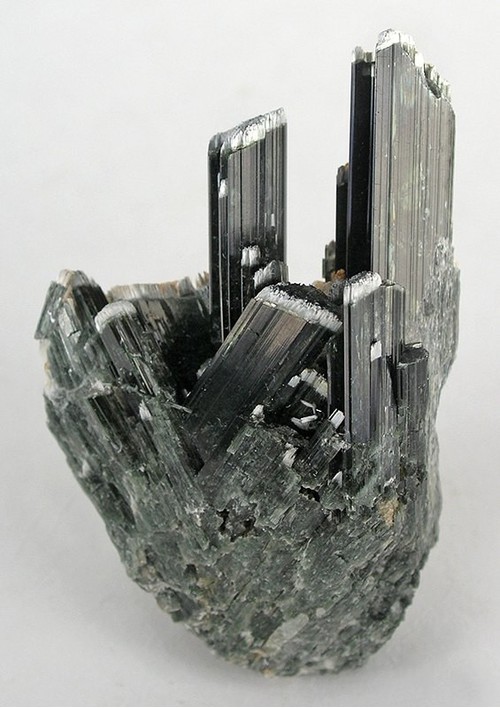
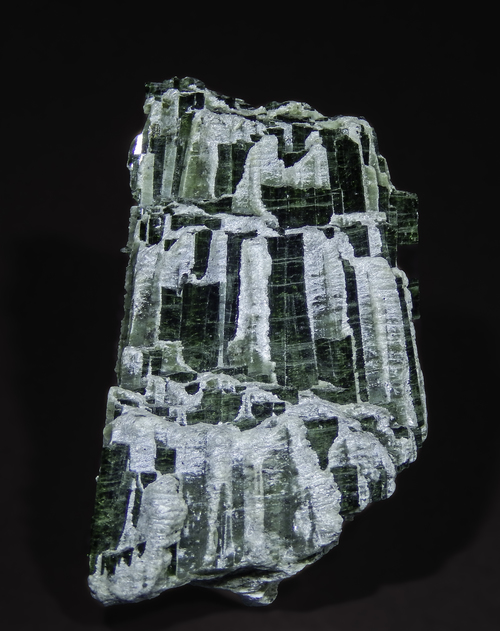
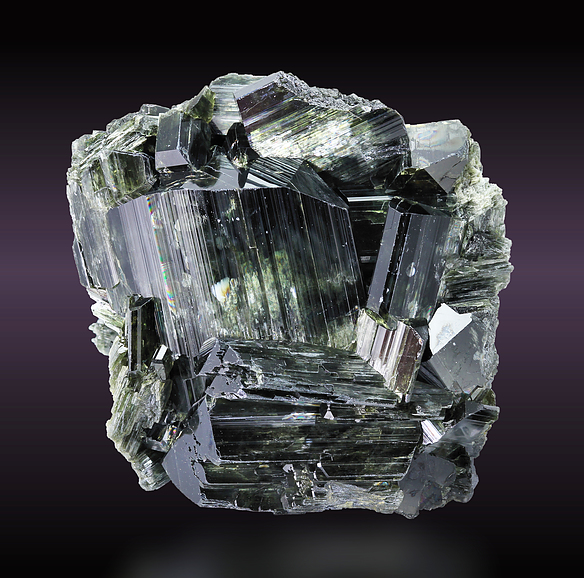

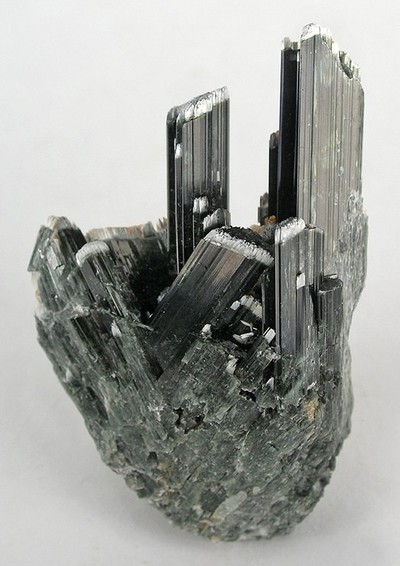
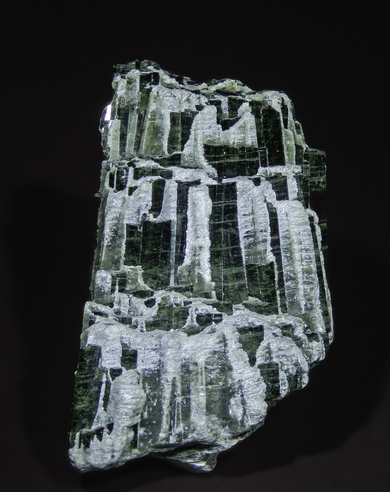

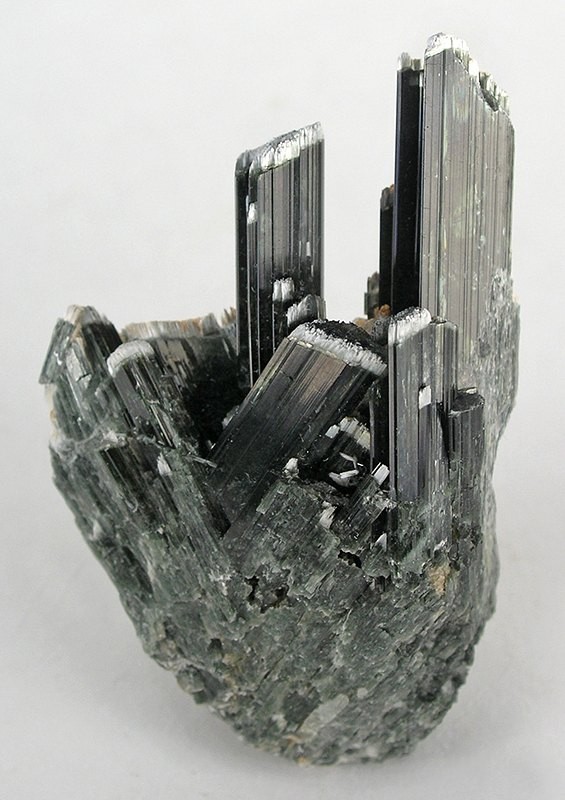
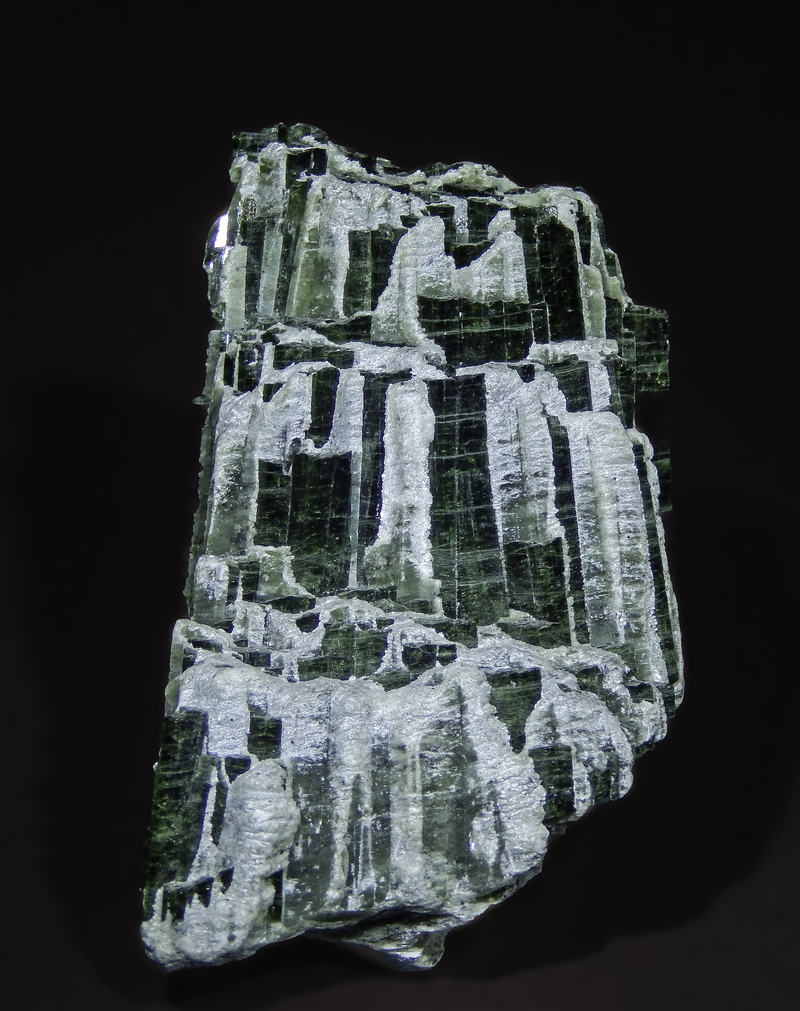
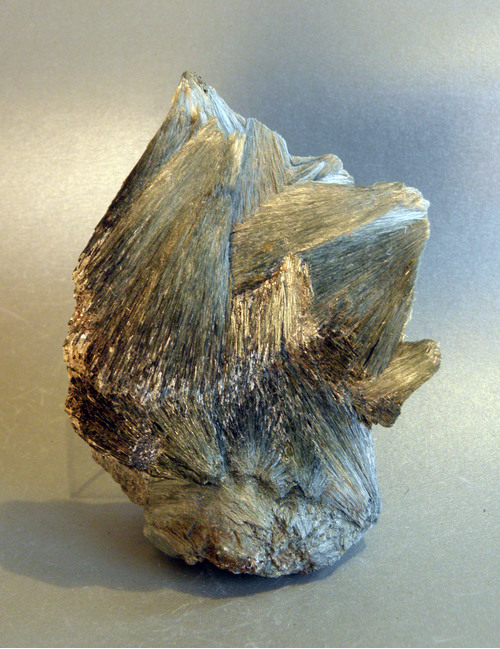
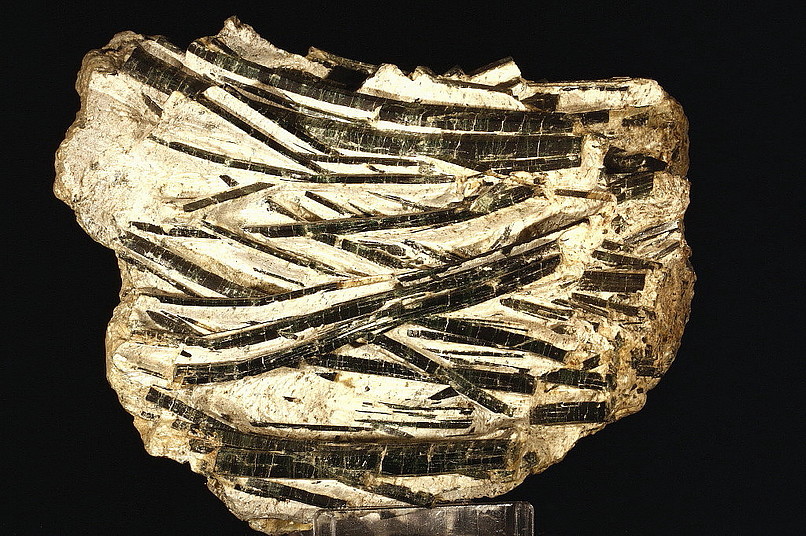
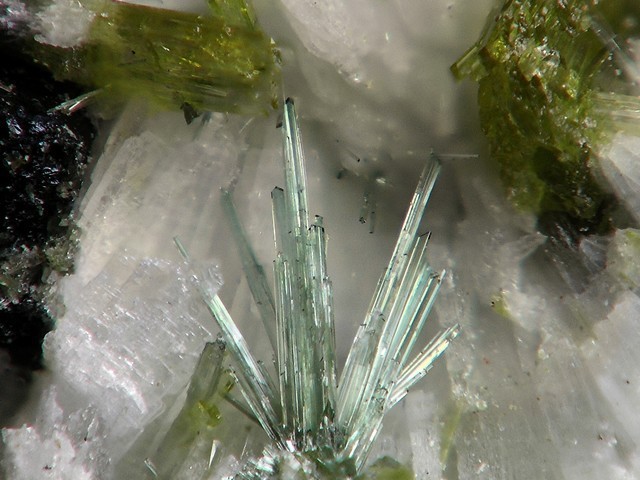
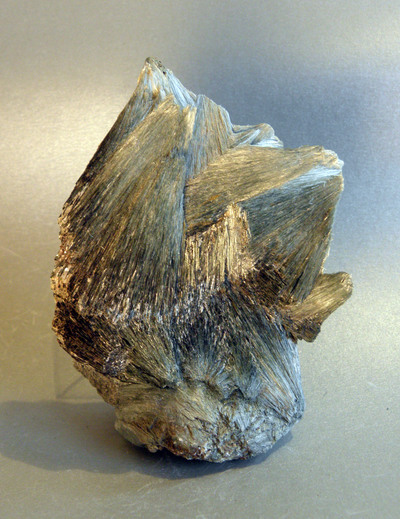
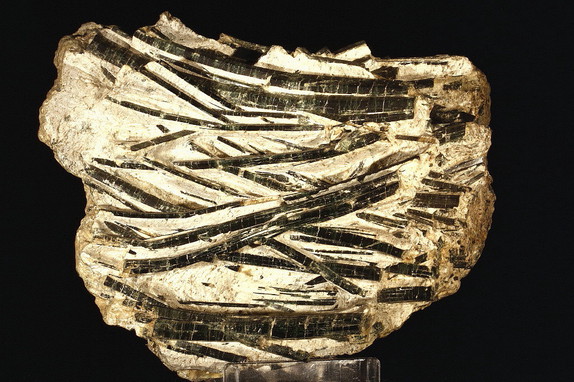
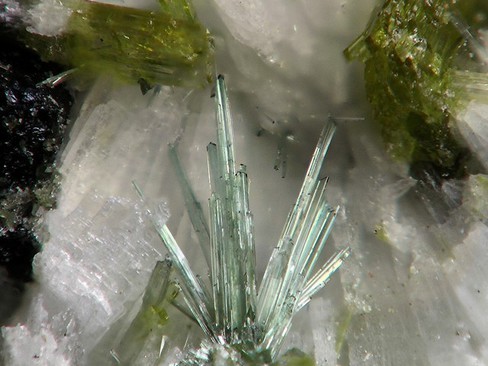
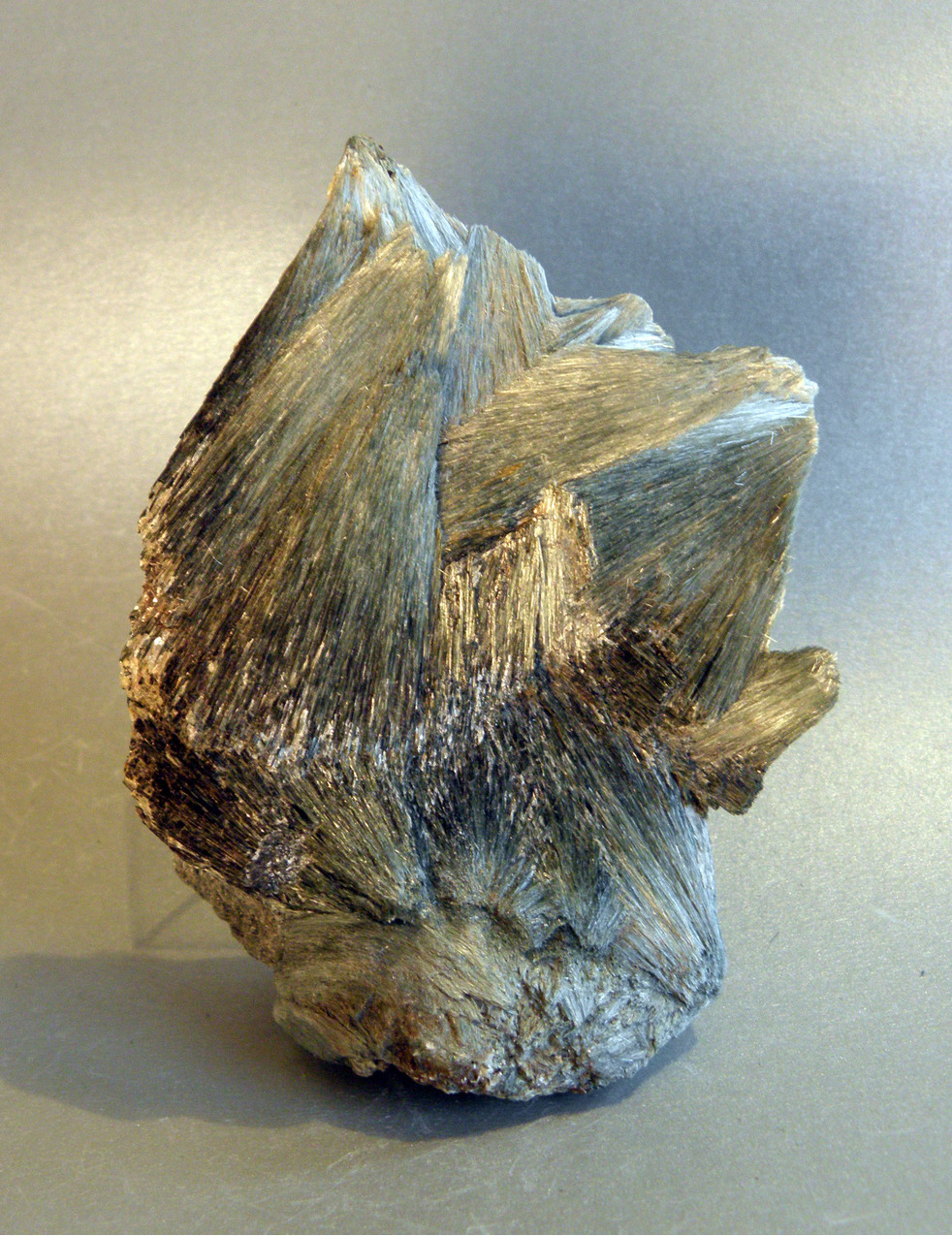

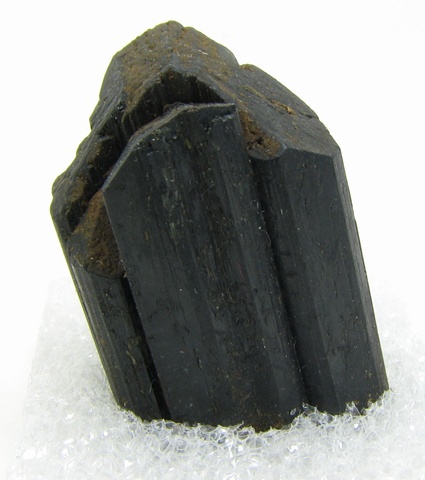
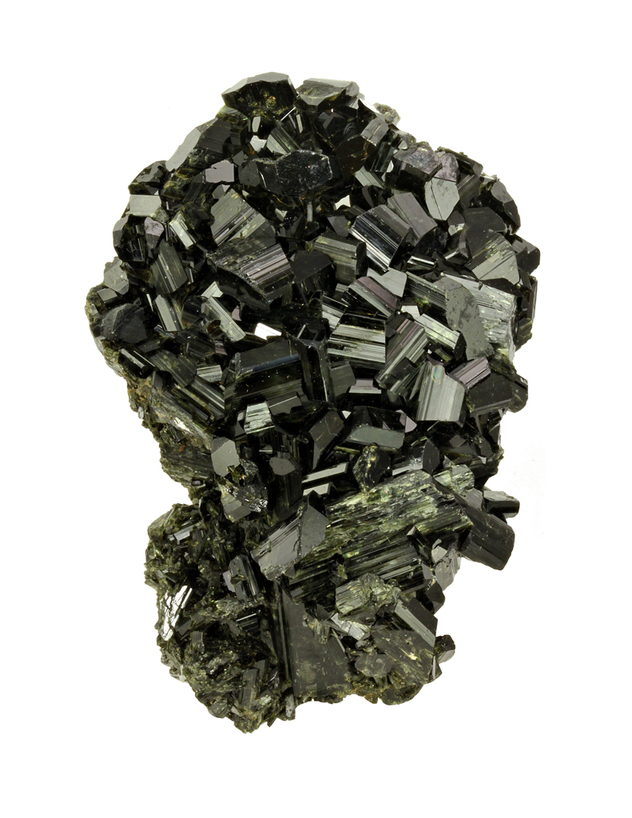
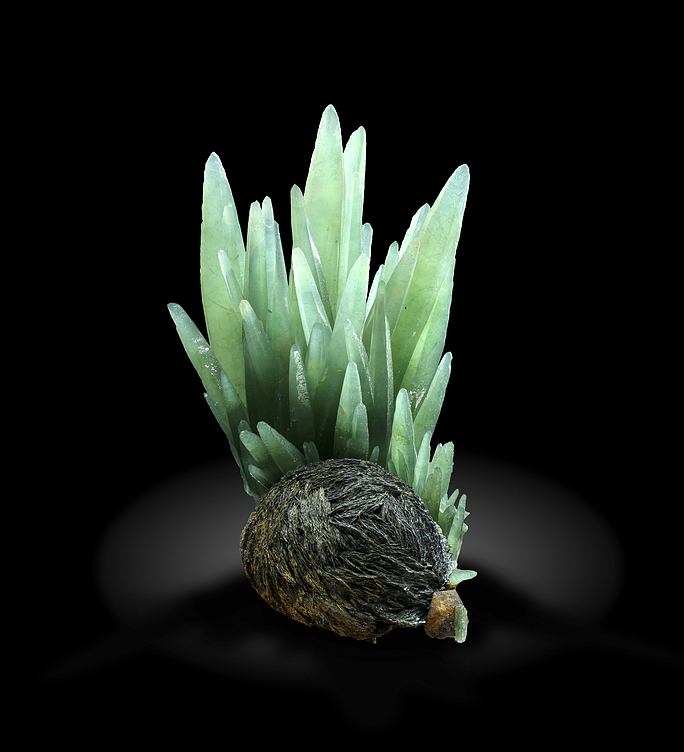
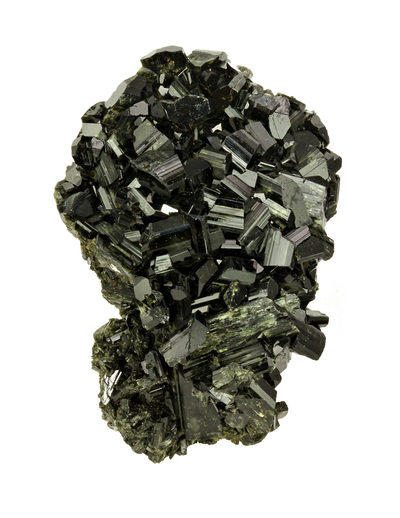
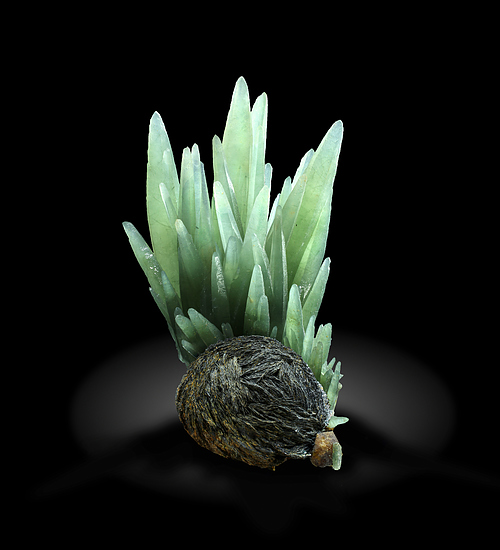
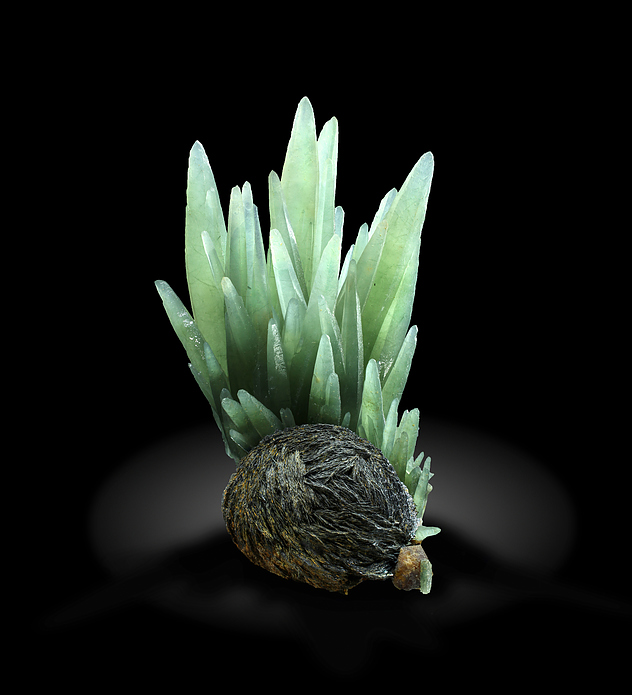
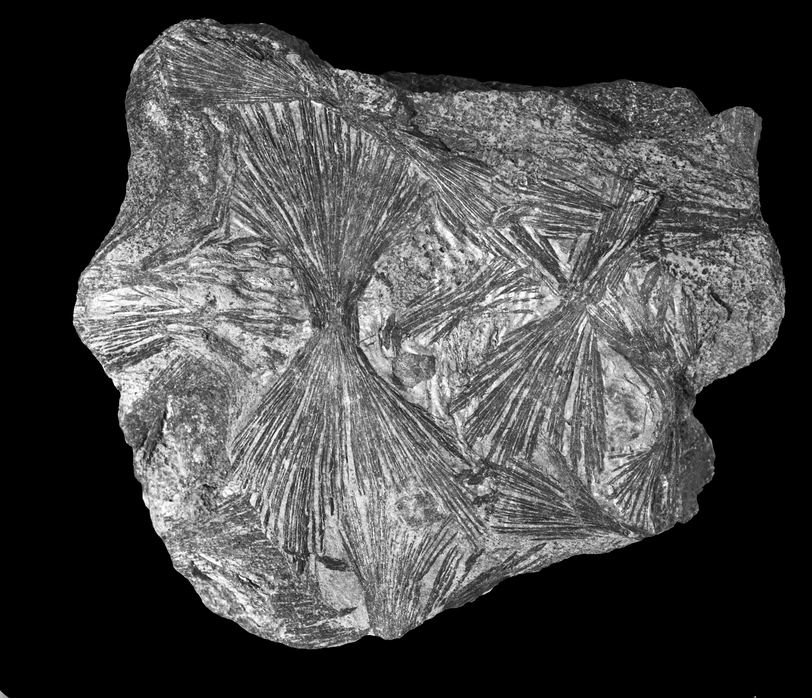

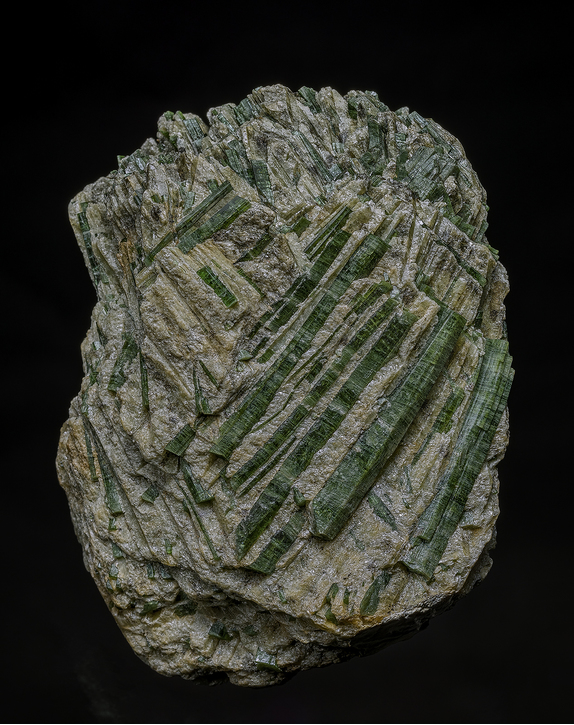
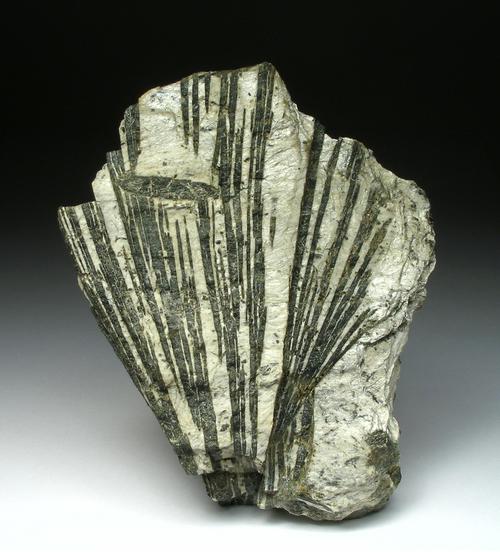


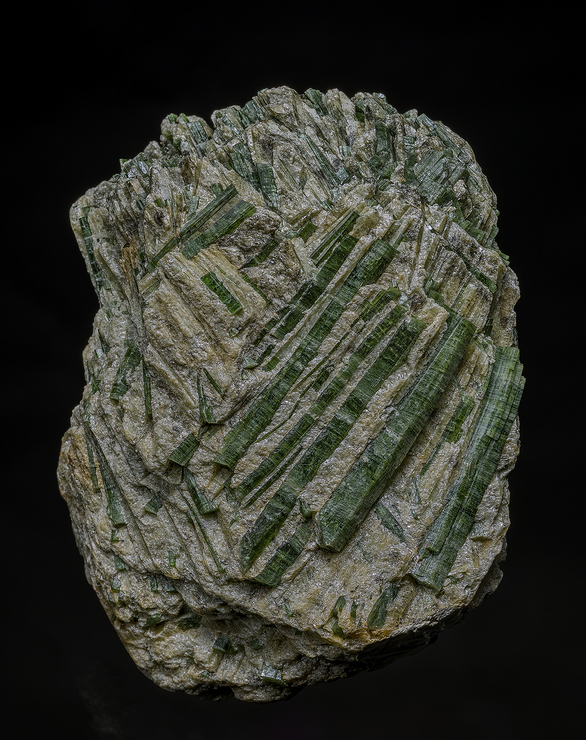
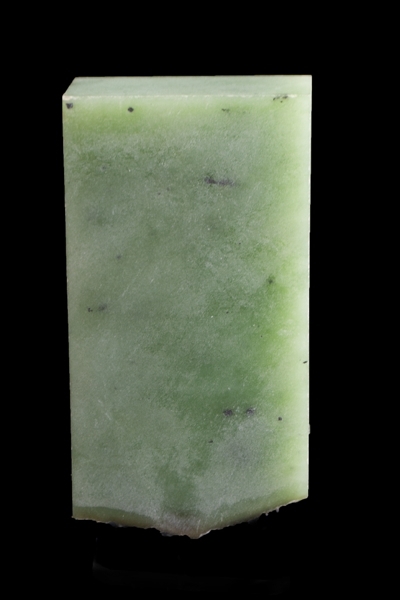
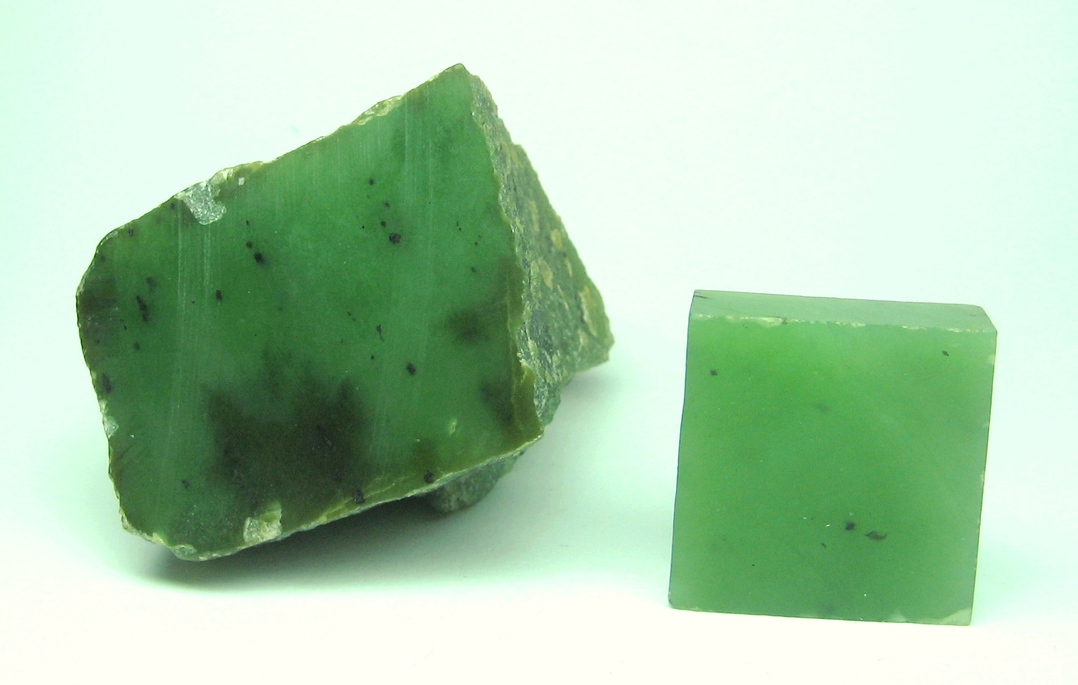
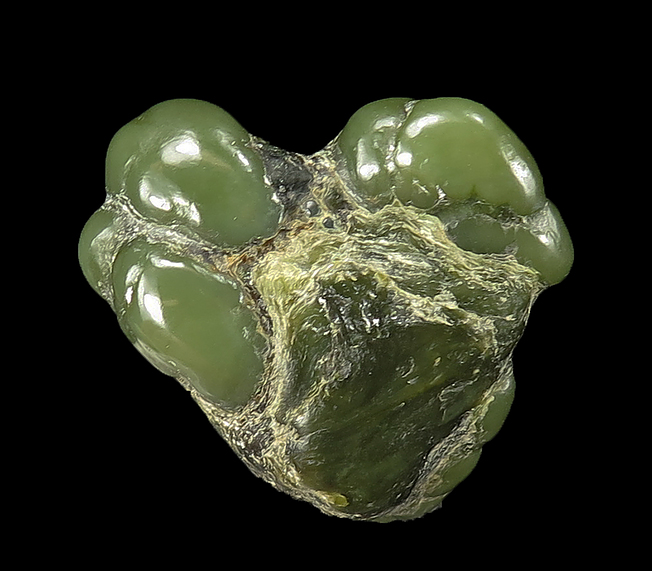
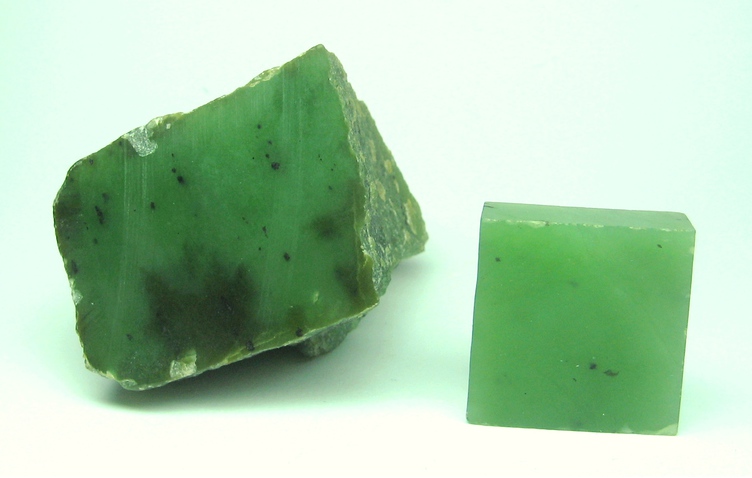
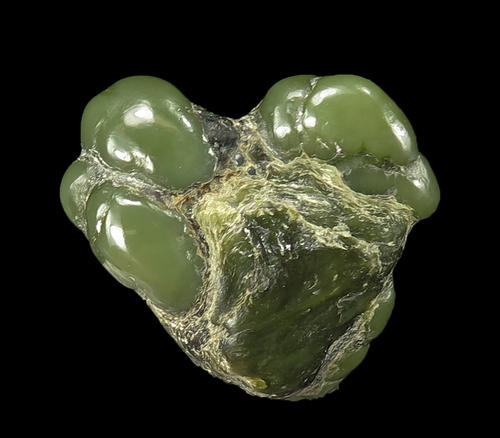
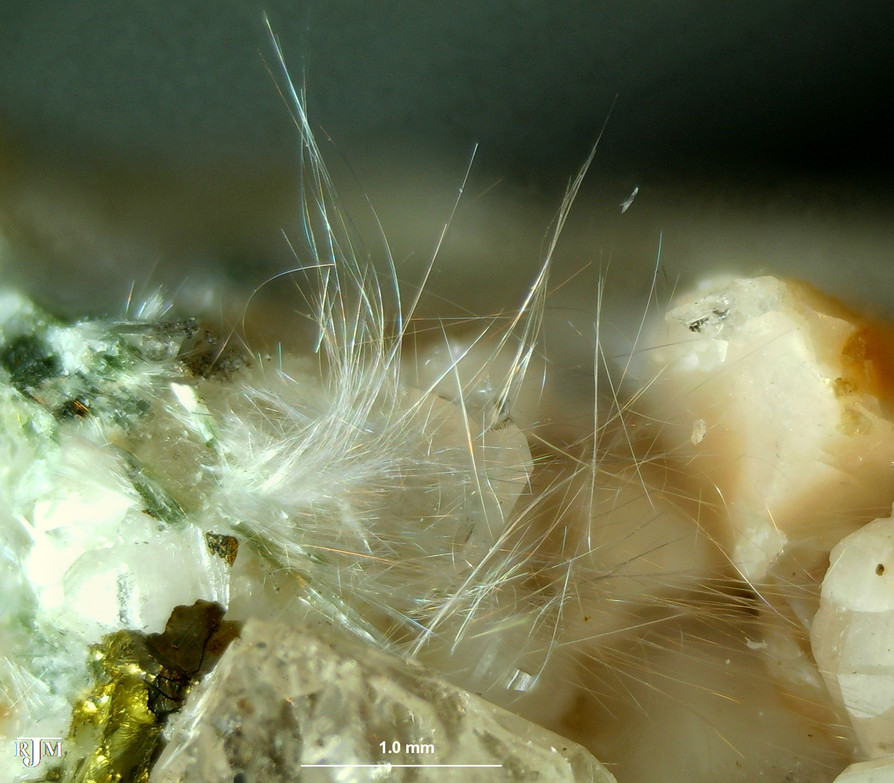
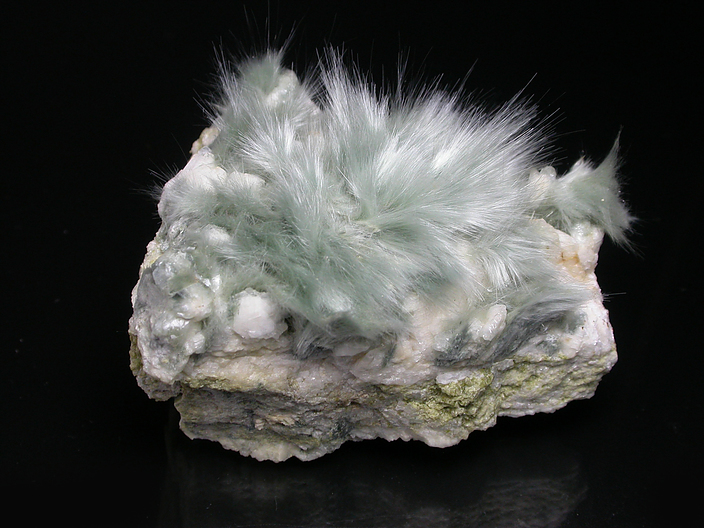
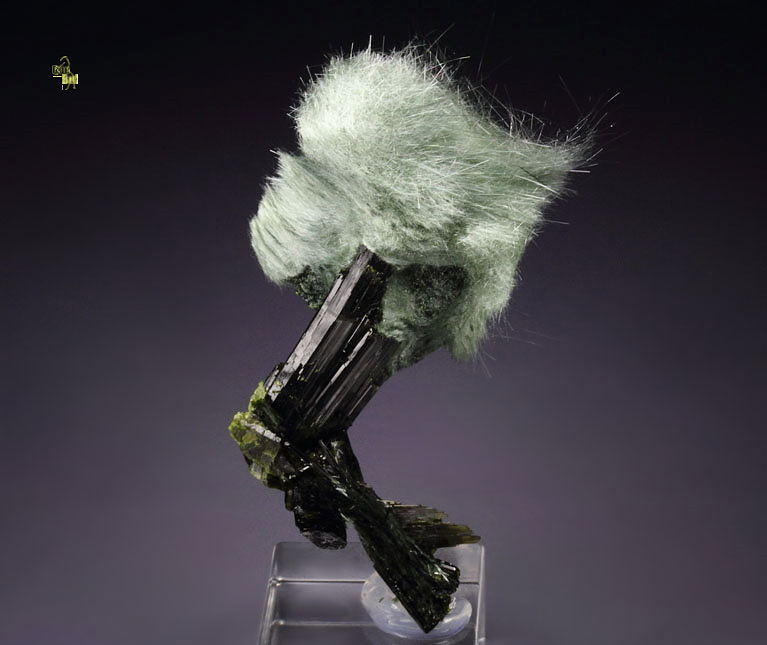
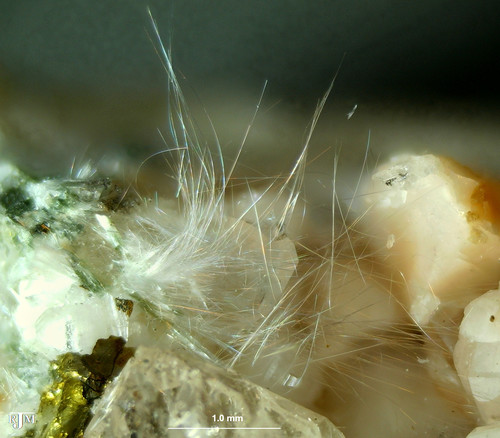
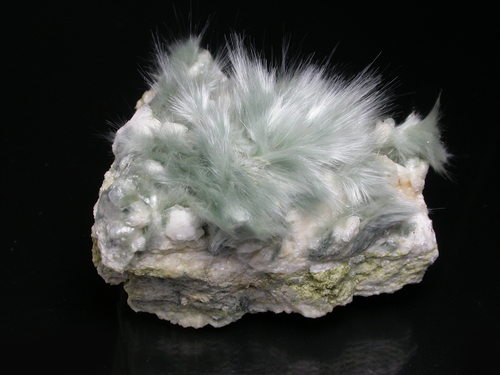
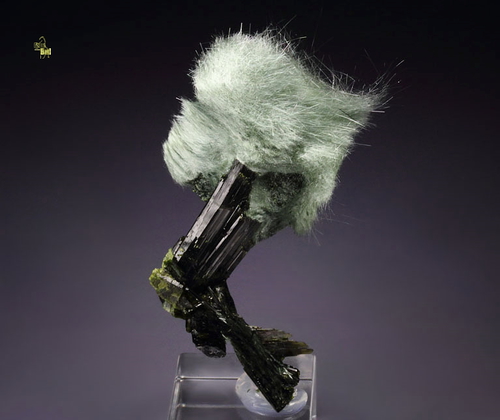
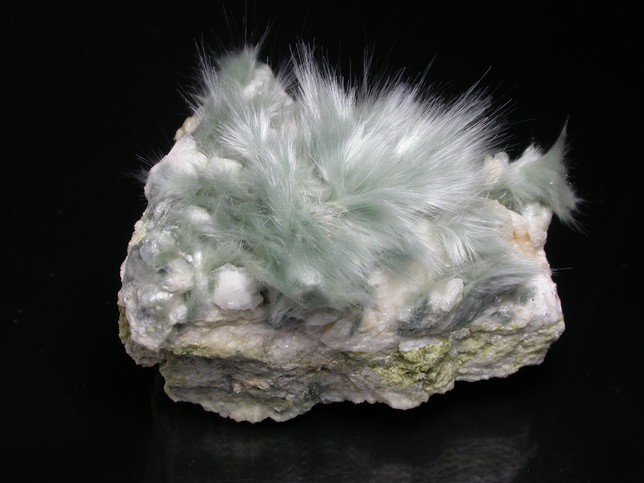
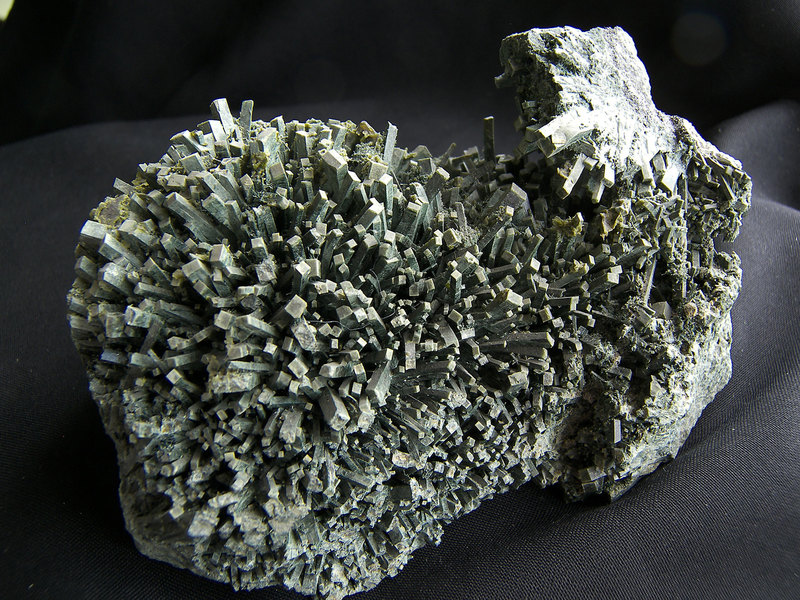
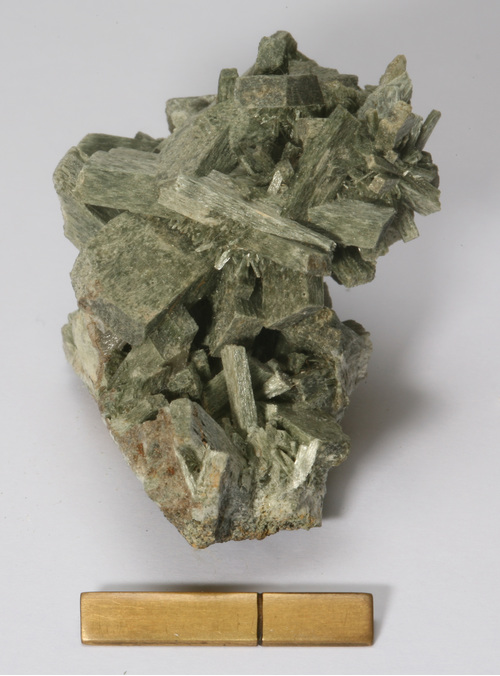



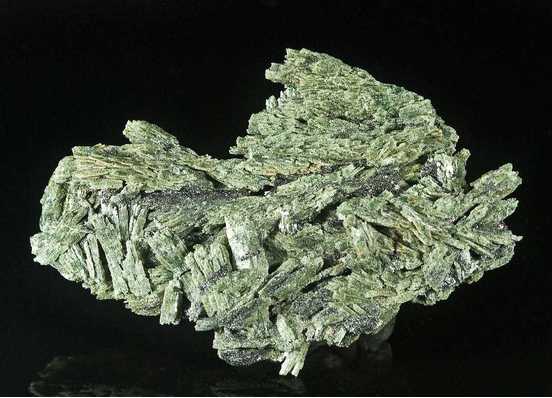
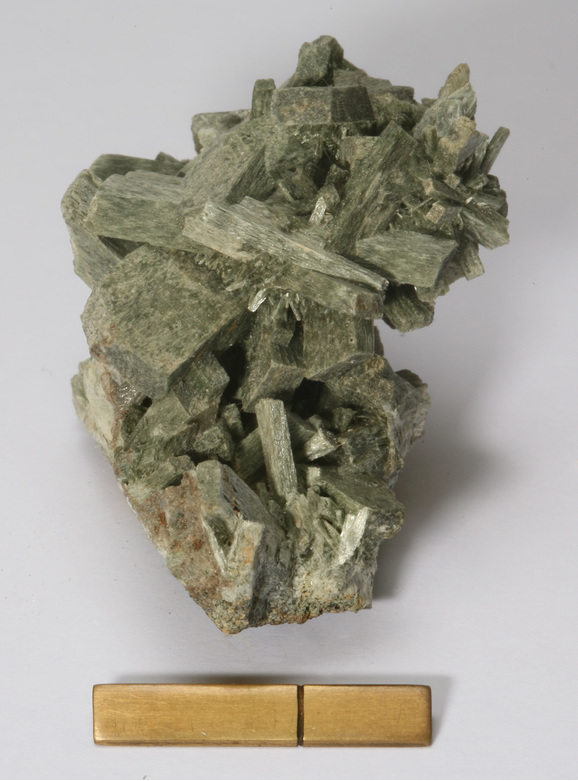

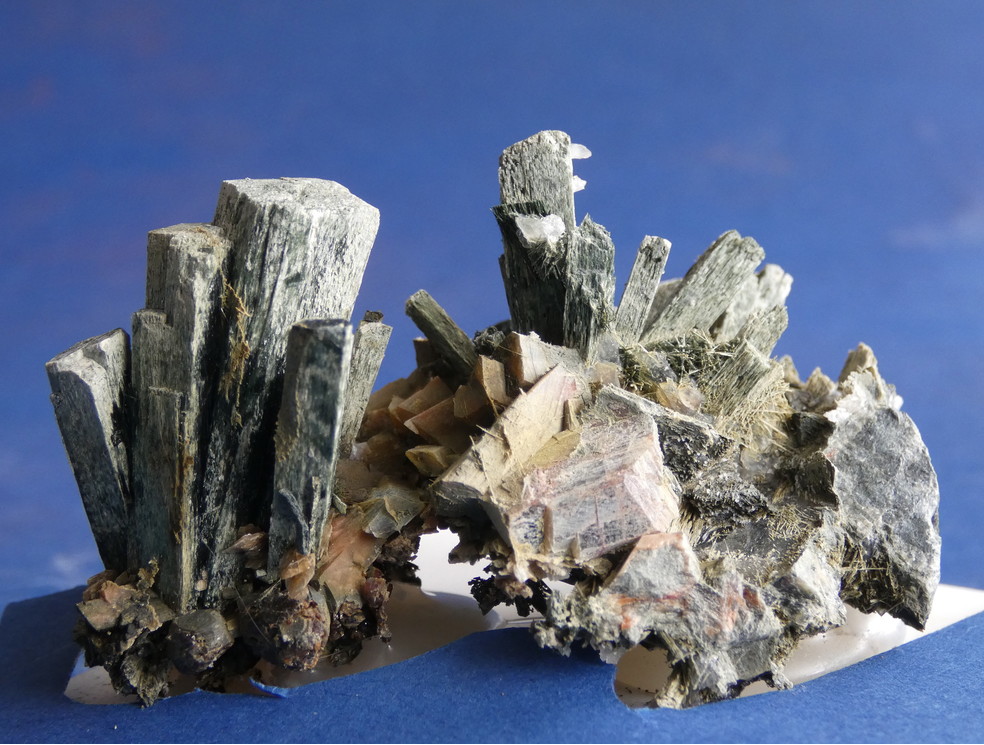
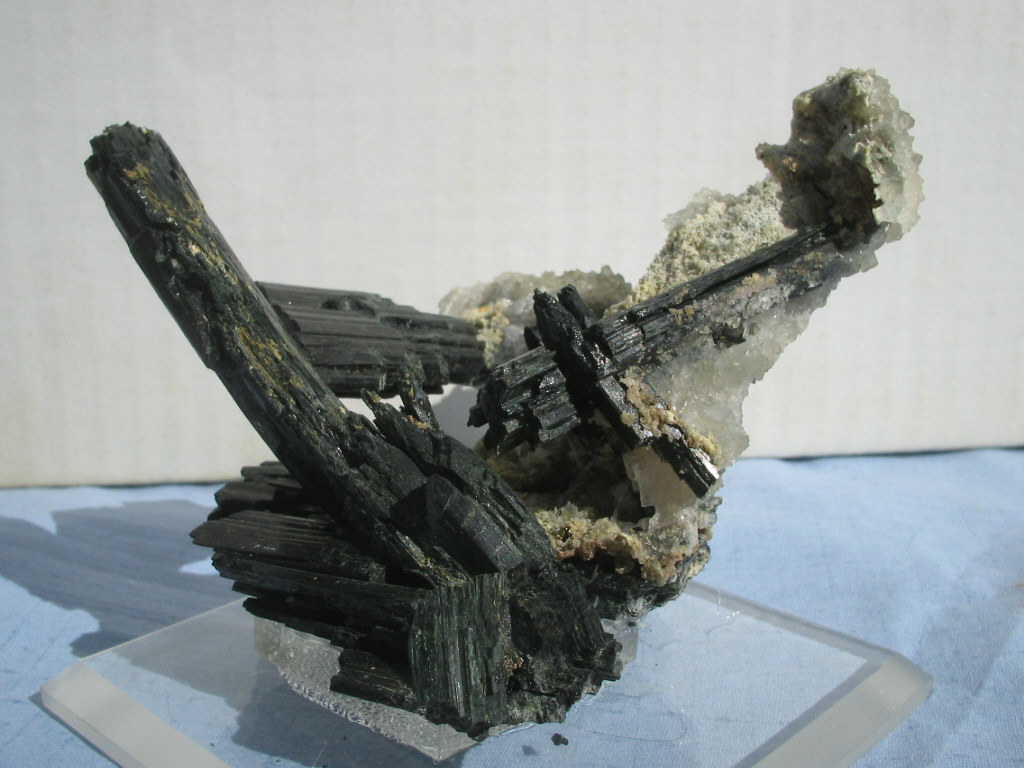
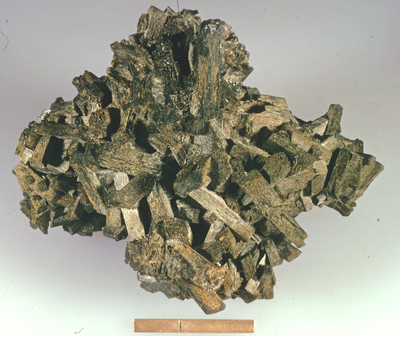



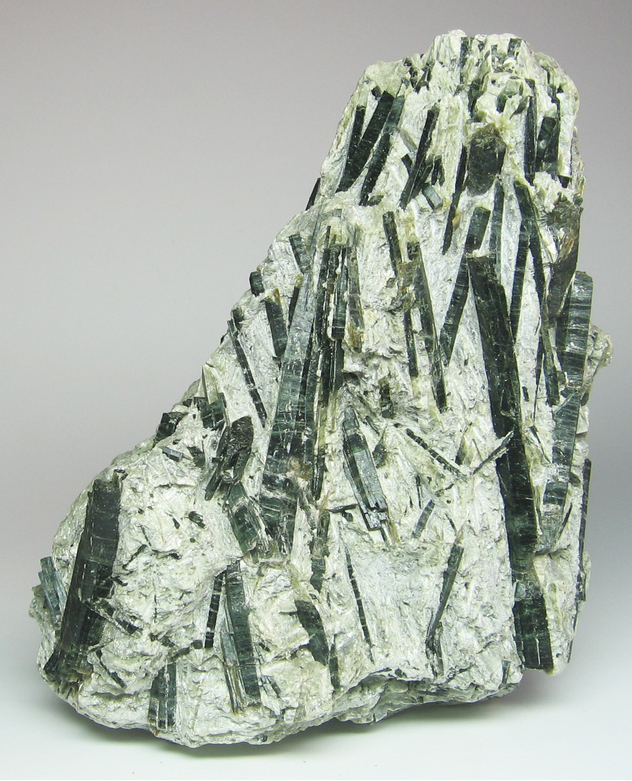


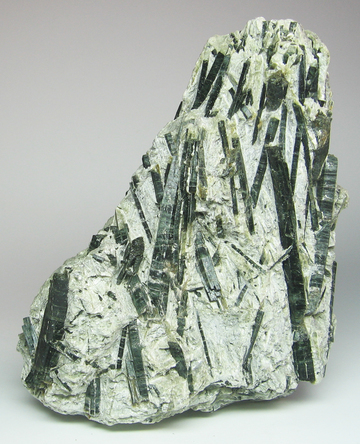
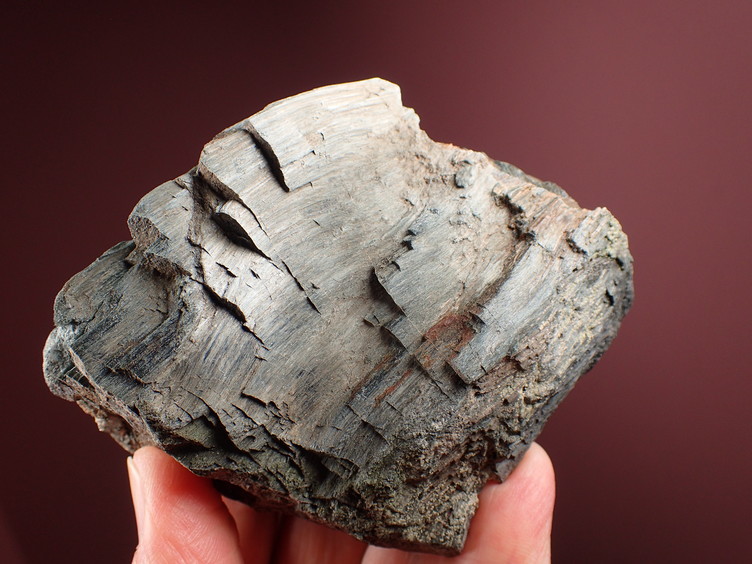
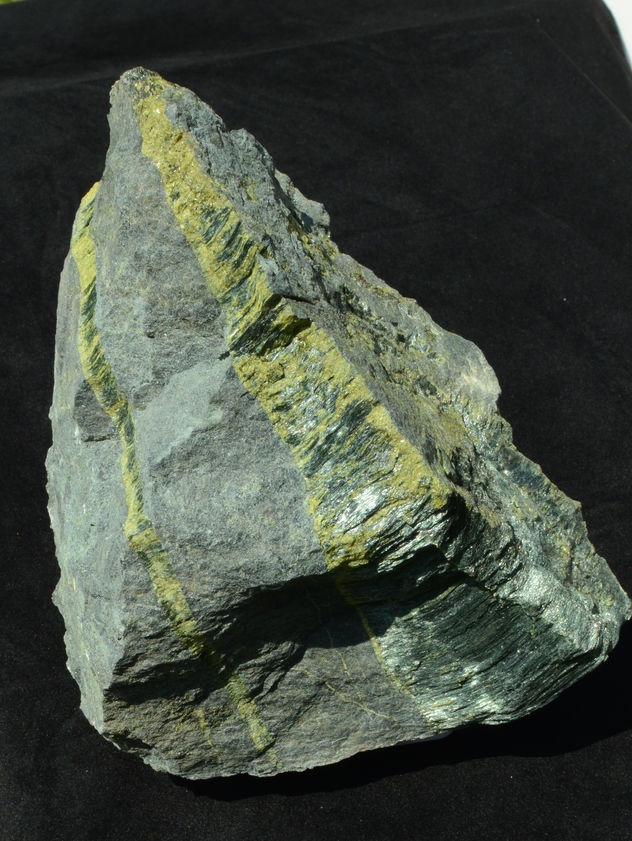

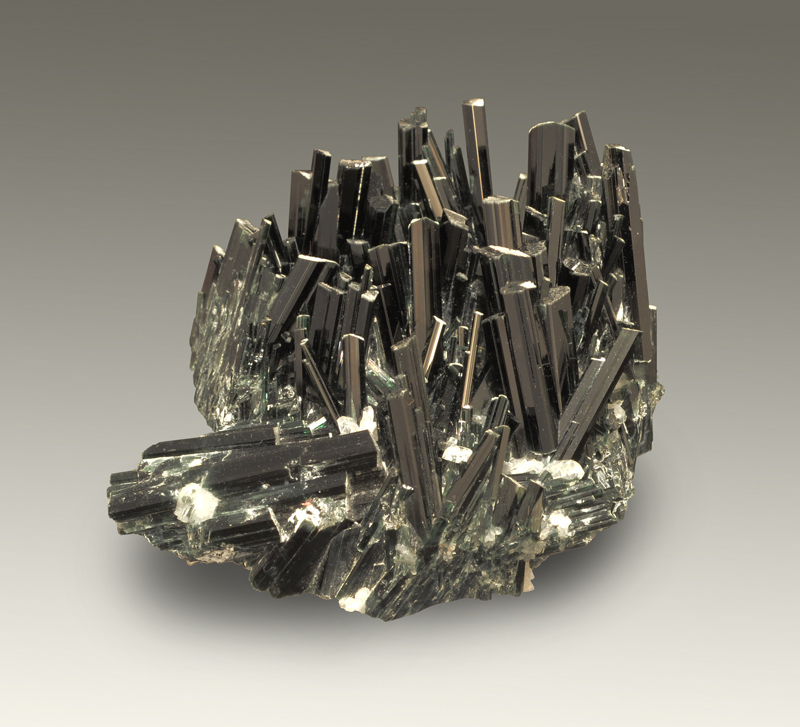
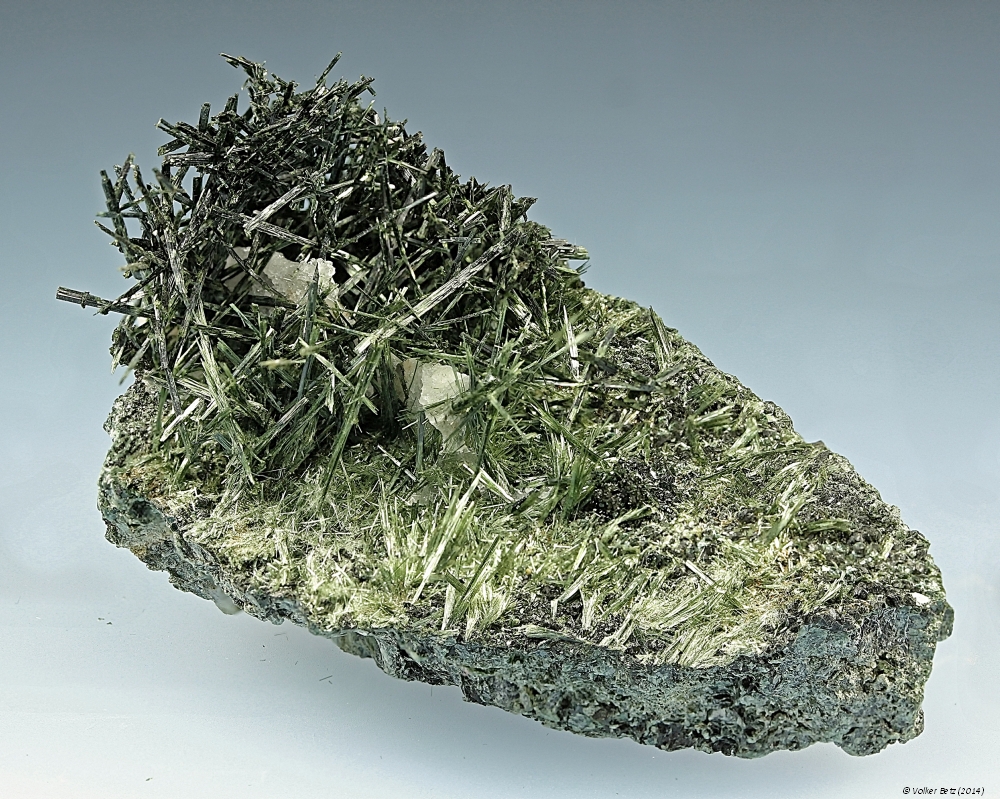

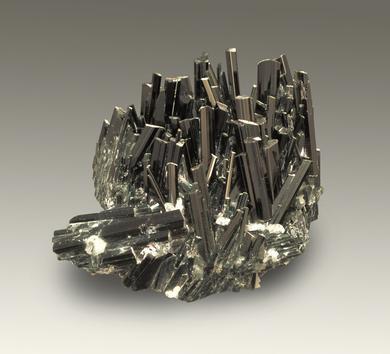
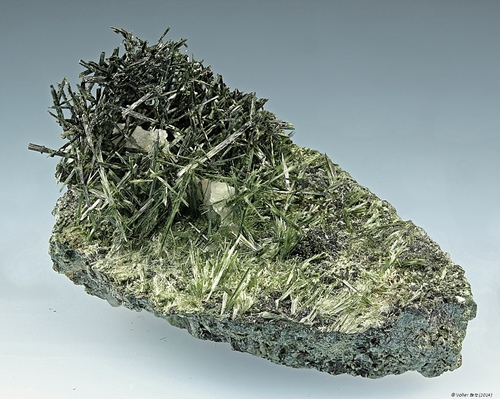
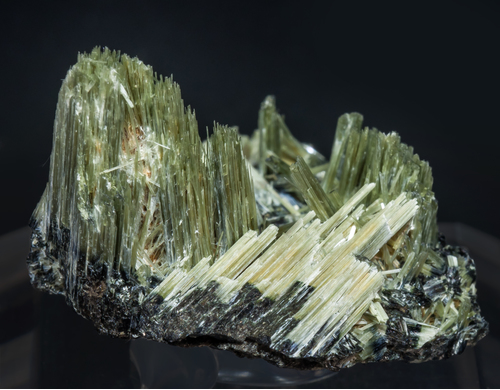
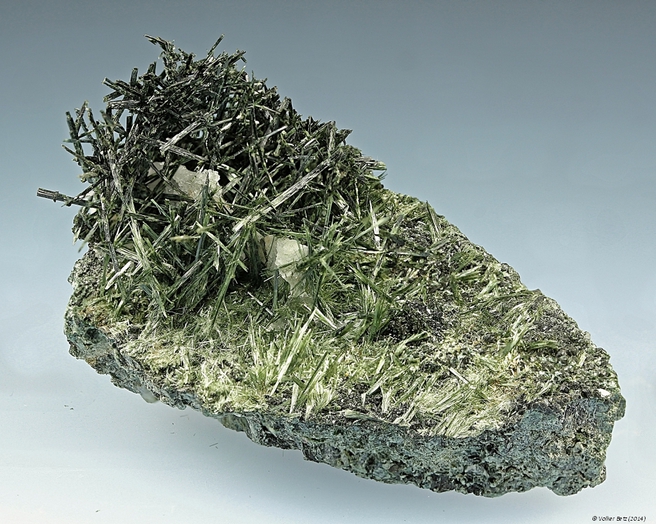
 symbol to view information about a locality.
The
symbol to view information about a locality.
The 




Otjiwarongo Constituency, Otjozondjupa Region, Namibia